
Risk Data Library Standard
Technical review report
Risk Data Library Standard Technical
Review
2023-01-31
This report summarises the findings and resulting recommendations following a technical
review of the Risk Data Library Standard (RDLS) by Open Data Services Co-operative. This
assessment incorporates the RDLS User Documentation and the two GFDRR GitHub
repositories associated with the standard, rdl-docs and rdl-standard.
The RDLS is in an early stage of development, with a complete first version of the schema
and associated documentation, development and governance processes. For a data
standard at this stage of its life we found much to commend, particularly the active and
longstanding involvement of a range of domain experts and stakeholders. The foundational
elements of a robust and potentially long-lasting data standard are all in place and the
insights and recommendations discussed in this report are all intended to help the RDLS
evolve into a mature and widely adopted standard in the disaster risk management (DRM)
domain.
Background
This section summarises our understanding of the domain, use cases, existing standards
and initiatives. Our recommendations take into account this background work.
Domain
High quality risk data is vital for well managed disaster risk. This data helps countries reduce
their risks from natural disasters and climate change. The Risk Data Library was created to
make risk data easier and more effective to work with and to support risk model
interoperability.
The Risk Data Library Standard (RDLS) provides a consistent structure for the following data
● Hazard
● Exposure
● Vulnerability
● Loss
1
Open Data Services Co-operative Limited is a company limited by shares, operated as a Workers' Co-operative |
Registered in England. Company number: 09506232 | Registered address: 1st Floor, Holyoake House, Hanover
Street, Manchester, Greater Manchester, M60 0AS | Correspondence to [email protected]

Risk Data Library Standard
Technical review report
Use cases
There are three main use cases for RDLS:
● Locating and preparing risk data
● Understanding the risk data landscape
● Dataset sharing
The RDLS is intended to be of use to a wide range of audiences working in the DRM
domain, but in particular disaster risk analysts and researchers preparing data for risk
assessment.
Existing standards and initiatives
The risk data library is unequalled in terms of its scope, allowing for the publication of
hazard, exposure, vulnerability and loss data in the one data standard.
The closest similar data standards would be Open Exposure Database (OED) and Open
Results Database (ORD) curated by and for the insurance industry by OASIS, the Risk Data
Open Standard (RDOS) created by RMS, and the CEDE Open Data Standard from Verisk,
but these standards primarily focus on select areas of risk data (exposure and losses) and
don’t cover all the same components. They have also been created with different specific
audiences in mind, such as for the insurance industry. There are other standards such as
PCRAFI Data collection standards for asset data which have a regional focus but where
future alignment may be beneficial.
The RDLS has worked to align with commonly used standards and taxonomies, most
notably the GEM Taxonomy 2.0 which the RDLS exposure schema (GED4ALL) is based
upon and the UCL MOVER platform, which the vulnerability schema is built upon.
Work continues within the RDLS team to monitor, learn from and where possible align with
best practice within the risk data field.
Prior reviews
The standard was reviewed by Leigh Dodds in February 2021. It is unclear which, if any, of
the recommendations raised have been actioned.
Domain expert feedback
This section summarises the key pieces of user feedback we have received from a range of
users.
2
Open Data Services Co-operative Limited is a company limited by shares, operated as a Workers' Co-operative |
Registered in England. Company number: 09506232 | Registered address: 1st Floor, Holyoake House, Hanover
Street, Manchester, Greater Manchester, M60 0AS | Correspondence to [email protected]

Risk Data Library Standard
Technical review report
We spoke with two members of the steering committee (Stephen Hutchings and Paul
Henshaw) to gather feedback and experience regarding the RDLS. This feedback can be
summarised into the following headings, the current RDLS and the future challenges and
opportunities:
The current RDLS
● Lacks visibility in the risk community
● Concern that it’s another ‘data standard’ that may be short lived
● Documentation does not adequate explain how to successfully implement the
standard
● There needs to be more benefit to contributors that are external to the World Bank
● Concern that RDLS may be oversimplified by combining components together
● Initial work on RDLS was good and involved multiple stakeholders
● Data included in the catalogue needs to be timely for it to be useful
The future of RDLS
● RDLS would benefit from a user guide to assist with implementation
● RLDS would benefit from examples of RDLS data.
● Conversion tools are needed between related standards.
● Documentation requires more clarity on how items are linked in the standard and
which fields are mandatory.
● Thought should be given to whether the associated data catalogue needs a
librarian/custodian who decides what can be published based on quality.
● Encouraging dialogue between climate change specialists and disaster risk
specialists would be beneficial to the standard.
User documentation
This section documents our assessment of the RDLS user documentation against best
practices for documenting open data standards and provides recommendations for
improvements.
The user documentation site is a good example of open standard documentation for the
stage of development RDLS is in. The key pieces of information are covered and a good
deal of thought has clearly gone into considering what is needed in the documentation even
if it has not yet been authored. Improvements are possible that will build upon this solid
foundation.
3
Open Data Services Co-operative Limited is a company limited by shares, operated as a Workers' Co-operative |
Registered in England. Company number: 09506232 | Registered address: 1st Floor, Holyoake House, Hanover
Street, Manchester, Greater Manchester, M60 0AS | Correspondence to [email protected]

Risk Data Library Standard
Technical review report
Organization of content
Diataxis is a systematic framework for technical documentation authoring. It identifies four
modes of documentation:
Tutorials
How-to guides
Reference
Explanation
what they
do
introduce,
educate, lead
guide,
demonstrate
state, describe,
inform
explain, clarify,
discuss
answers
the
question
“Can you
teach me
to…?”
“How do I…?”
“What is…?”
“Why…?”
oriented to
learning
tasks
information
understanding
purpose
to allow the
newcomer to
get started
to show how to
solve a specific
problem
to describe the
machinery
to explain
form
a lesson
a series of steps
dry description
discursive
explanation
analogy
teaching a
child how to
cook
a recipe in a
cookery book
a reference
encyclopaedia
article
an article on
culinary social
history
Clear separation of content into these sections can aid users in finding the information they
require in a given situation. It can also aid the writers and maintainers of the documentation
in ensuring all necessary information is covered and help minimise sources of potential
inconsistencies whilst implementing updates.
We assessed the current documentation structure and content against the Diataxis
framework and identified the modes currently addressed by each section.
Section
Modes
Recommended
Mode
Comments
Key concepts
Reference
Explanation
Currently this section just
contains copies of
4
Open Data Services Co-operative Limited is a company limited by shares, operated as a Workers' Co-operative |
Registered in England. Company number: 09506232 | Registered address: 1st Floor, Holyoake House, Hanover
Street, Manchester, Greater Manchester, M60 0AS | Correspondence to [email protected]
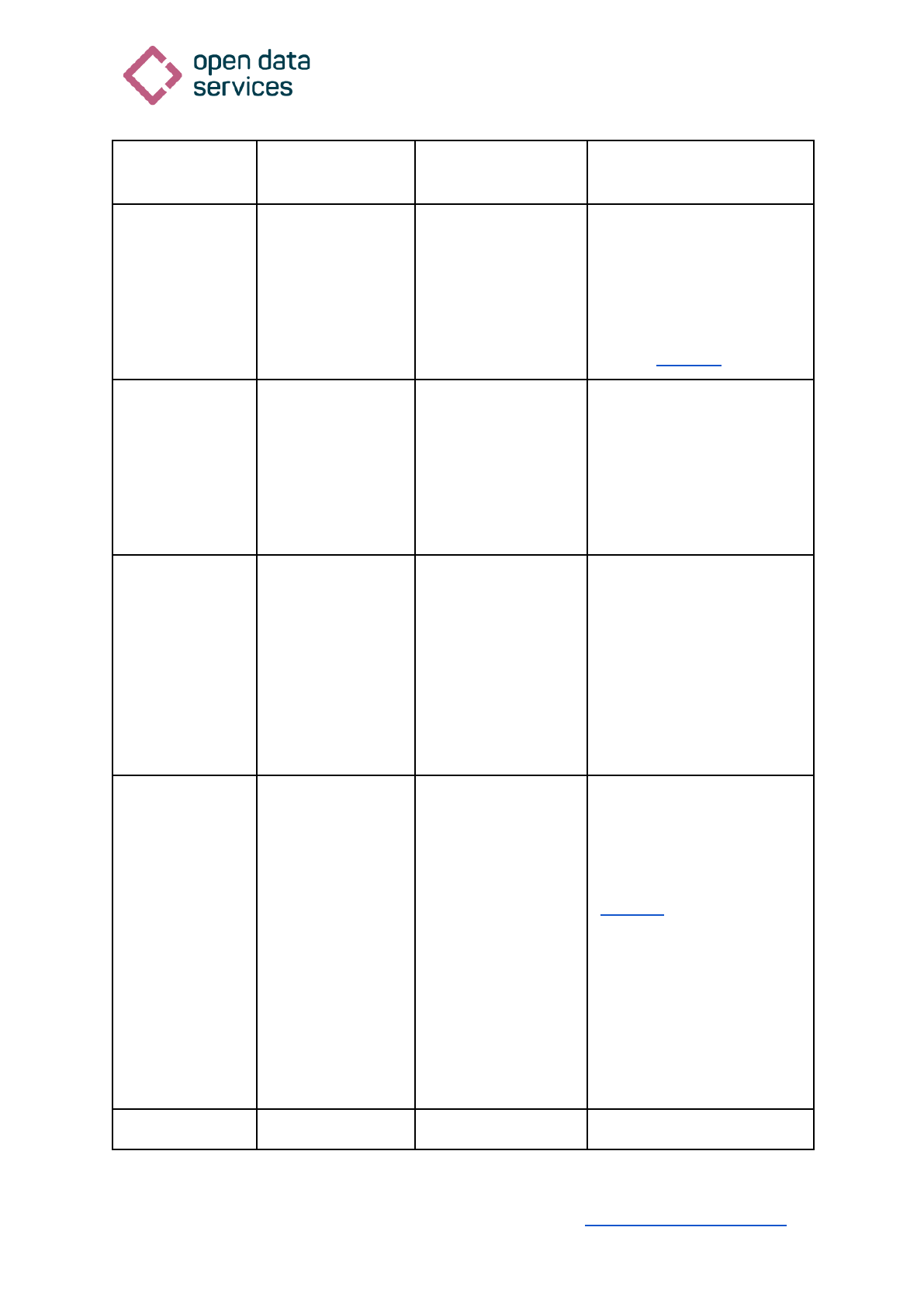
Risk Data Library Standard
Technical review report
Section
Modes
Recommended
Mode
Comments
definitions from the UNDRR
terminology. This is useful
information but it could be
expanded to more clearly
explain the context of these
concepts within the data
model. (example)
Core standards
?
Explanation
This section is currently
missing content. Any
discussion around how
these core standards have
been used in the creation of
the RDLS would be
Explanation.
Taxonomies
Reference and
Explanation
The content in this
section should be
split into two pages:
Reference
and
Explanation
The paragraphs that
discuss how and why the
taxonomies have been
selected and developed
belong in an Explanation
section. The details of the
RDLS Hazard Taxonomy
belong in the reference
section.
Data model
Reference and
Explanation
Reference
Restructure the content in
these pages:
Schema attribute tables
should be given in a
Reference section
(example). Attribute
descriptions should be
contained in these tables
rather than discursive
paragraphs.
Discussion of why the
schema contains certain
attributes should be moved
to an Explanation section.
Implementation
How-to guide
How-to guides
Only 1 part of this section
5
Open Data Services Co-operative Limited is a company limited by shares, operated as a Workers' Co-operative |
Registered in England. Company number: 09506232 | Registered address: 1st Floor, Holyoake House, Hanover
Street, Manchester, Greater Manchester, M60 0AS | Correspondence to [email protected]

Risk Data Library Standard
Technical review report
Section
Modes
Recommended
Mode
Comments
contains significant content
and it is How-to content.
Suggest renaming this
section to “How-to-guides”
Tutorials
? The single line
description in the
Introduction
suggests the
intended content
would be “How-to
guides”
Tutorials
No content in this section
but it is good practice to
include tutorials that are
distinct from the “How-to
guides”.
About
Explanation
Explanation
Diataxis is a pragmatic framework that recommends making improvements to documentation
in an iterative fashion. Much of the current content can be retained as part of a restructuring
process alongside authoring some additional sections.
Section
Mode
Description of
Content
RDLS existing
content
Additional
content
Primer
Explanation
Introduction to
the domain, key
concepts and
reasons for
standardising
data,
description of
how the
standard was
developed and
why, who the
intended users
are
Introduction,
Taxonomies
(but link to
definition of
RDLS Hazard
taxonomy in
other section),
paragraphs in
Data model
pages
discussion why
certain
attributes are
included
Core standards,
History
Schema
reference
Reference
The schemas,
codelists and
rules that need
to be followed
Data model
attribute tables
and examples,
RDLS Hazard
6
Open Data Services Co-operative Limited is a company limited by shares, operated as a Workers' Co-operative |
Registered in England. Company number: 09506232 | Registered address: 1st Floor, Holyoake House, Hanover
Street, Manchester, Greater Manchester, M60 0AS | Correspondence to [email protected]

Risk Data Library Standard
Technical review report
Section
Mode
Description of
Content
RDLS existing
content
Additional
content
to publish data
taxonomy
Guidance
How-to guides
step by step
guides to
implementing
the data
standard.
Implementation
Glossary
Key concepts
Support
How-to guides
support details
Recommendations
Restructure the existing content incorporating the distinction between normative and
non-normative content and following the guidelines in the above table.
Where necessary author new content including:
● How-to guides
● Tutorials
● Core standards reference
● Core standards explanation
● Help and support
Completeness
Documentation should contain all the relevant information to answer a user's most likely
questions. In particular, the reference documentation should describe the meaning of each
field and code in the data model.
The current documentation site already contains much of the content that good user
documentation should cover. The structure and content of the documentation was compared
to that of other open data standards including OCDS, OFDS and 360Giving, to identify any
missing content. This assessment identified a number of issues with completeness that can
be divided into 2 categories:
1. Empty or incomplete sections where the presence of a page or heading indicates that
this content has been identified as necessary but hasn’t yet been authored, e.g.
Vulnerability examples, Deploy tutorial, and Core standards.
7
Open Data Services Co-operative Limited is a company limited by shares, operated as a Workers' Co-operative |
Registered in England. Company number: 09506232 | Registered address: 1st Floor, Holyoake House, Hanover
Street, Manchester, Greater Manchester, M60 0AS | Correspondence to [email protected]
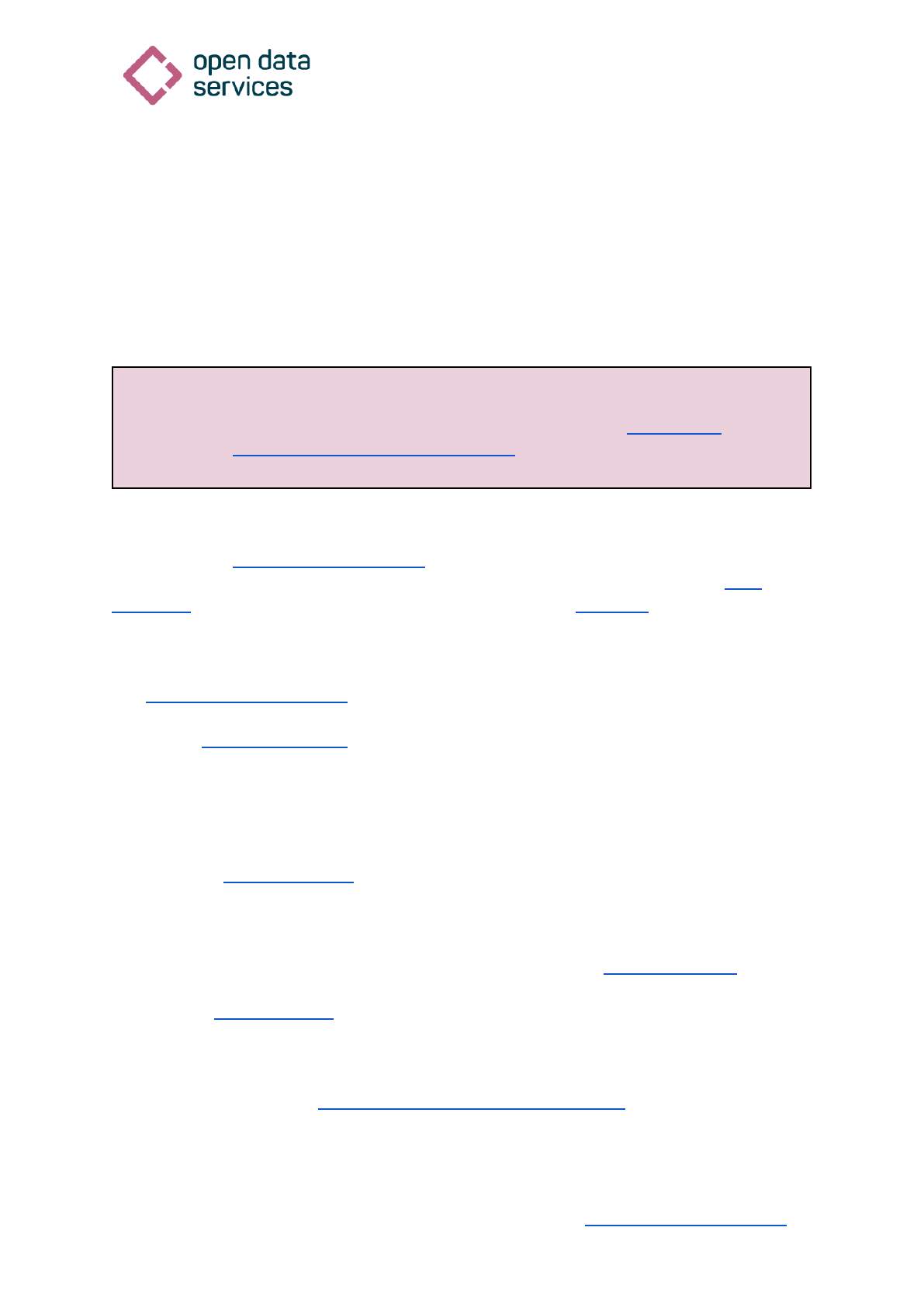
Risk Data Library Standard
Technical review report
2. Content that a user would expect to find that is not present in any form including:
○ Lack of descriptions for codes used in the data model. E.g. Frequency type
in the Hazard schema has 3 possible types, “Rate of Exceedence”,
“Probability of Exceedence”, “Return Period”. The concept of a Return Period
is described in the accompanying paragraph but it is not made explicit that
this is the definition of the “Return Period” type nor are descriptions of the
other 2 types provided anywhere in the documentation.
○ Information on where to get support when implementing the standard.
Recommendations
Complete the missing content in line with the recommendations for restructuring and
separating out normative and non-normative content.
Normative vs non-normative content
Best practice in standards documentation clearly separates normative (prescriptive) and
non-normative (informative or descriptive) content. This can be achieved through clear
structuring and the use of normative key words as defined by RFC2119. Clear separation of
these content types can aid the user in identifying the information they need to complete a
given task, and aid the document maintenance process.
The current documentation site combines normative and non-normative content types. E.g.
● The Data model section includes definitions of the parts of the schema (normative
content) alongside discussion of potential use (non-normative content) and examples
(non-normative content).
The use of normative keywords is inconsistent throughout the documentation site. E.g.
● On the taxonomies page the RDLS Hazard Taxonomy and GED4All taxonomy are
both marked as “recommended” which is an appropriate use of this normative
keyword.
● The RDLS taxonomy is marked as “recommended” in the Taxonomies page, but the
Hazard Type values in this taxonomy are given in schema tables Type columns (e.g.
in the Hazard schema) implying that only these values can be selected. If this is the
case then this taxonomy is “required” not “recommended”.
● Numerous instances of non-normative keywords where normative keywords should
be used, e.g. in the description of GED4ALL (recommended) the final sentence “This
is the suggested option…” should be changed to “This is the recommended option…”
8
Open Data Services Co-operative Limited is a company limited by shares, operated as a Workers' Co-operative |
Registered in England. Company number: 09506232 | Registered address: 1st Floor, Holyoake House, Hanover
Street, Manchester, Greater Manchester, M60 0AS | Correspondence to [email protected]
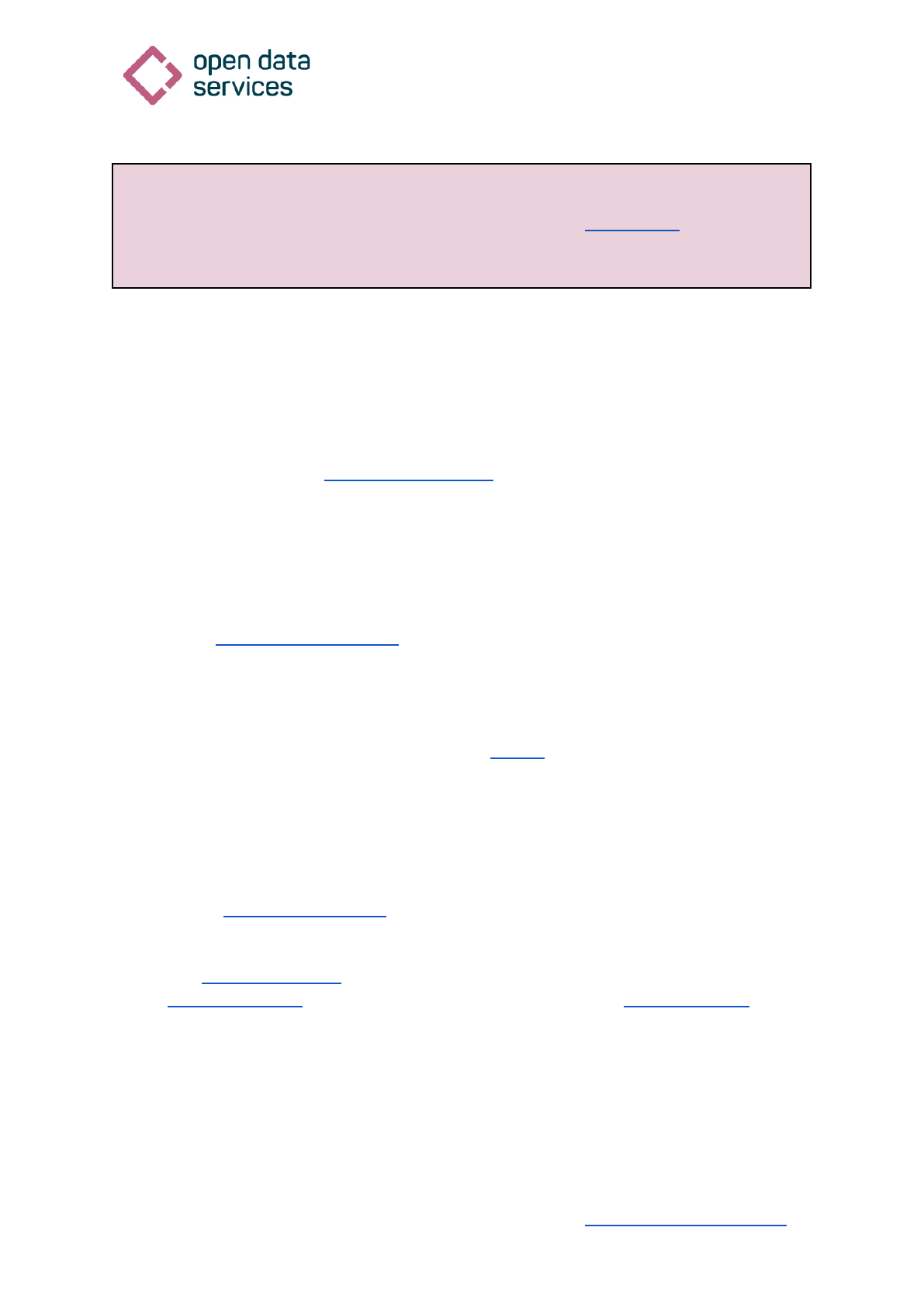
Risk Data Library Standard
Technical review report
Recommendations
Separate out normative and non-normative content as part of restructuring the
documentation, making use of normative keywords for normative content and using
appropriate synonyms for non-normative content.
Consistency
Consistency within documentation is vital. Inconsistencies create confusion and can diminish
the users confidence in the standard.
Inconsistencies were assessed within the documentation itself, both in its content and
structure. Inconsistencies between the documentation and the schema were assessed as a
key benefit of maintaining a Single Source of Truth.
Content
Terms and concepts should be referred to consistently throughout the documentation.
Consistent terminology helps users comprehend the documentation correctly. There are
multiple instances where this is not the case. E.g.
● In the RDLS Hazard taxonomy:
○ The top level is initially referred to as hazard in “The RDLS Hazard Taxonomy
classifies hazard phenomena as main hazard (8 categories) and hazard
process (27 categories)” but is referred to in the accompanying table and all
following pages as hazard type. The latter term is preferable to avoid
ambiguity when the key concept of Hazard is being referred to.
○ The second level is initially referred to as hazard process, “The RDLS
Hazard Taxonomy classifies hazard phenomena as main hazard (8
categories) and hazard process (27 categories)”, but the accompanying
table defines it as process type. Hazard process is the term used in the
standard schemas.
● On the Core Standards page reference is made to “the RDL data model” rather than
“the RDLS data model”.
● The exposure example includes Geographic coverage which doesn’t feature in the
exposure schema but almost matches Geo coverage in the General schema.
Attributes that refer to the same concept should be consistently named: E.g.
● Intensity unit in the Vulnerability attribute table has the same description as Unit of
measure in the Hazard attribute table.
9
Open Data Services Co-operative Limited is a company limited by shares, operated as a Workers' Co-operative |
Registered in England. Company number: 09506232 | Registered address: 1st Floor, Holyoake House, Hanover
Street, Manchester, Greater Manchester, M60 0AS | Correspondence to [email protected]
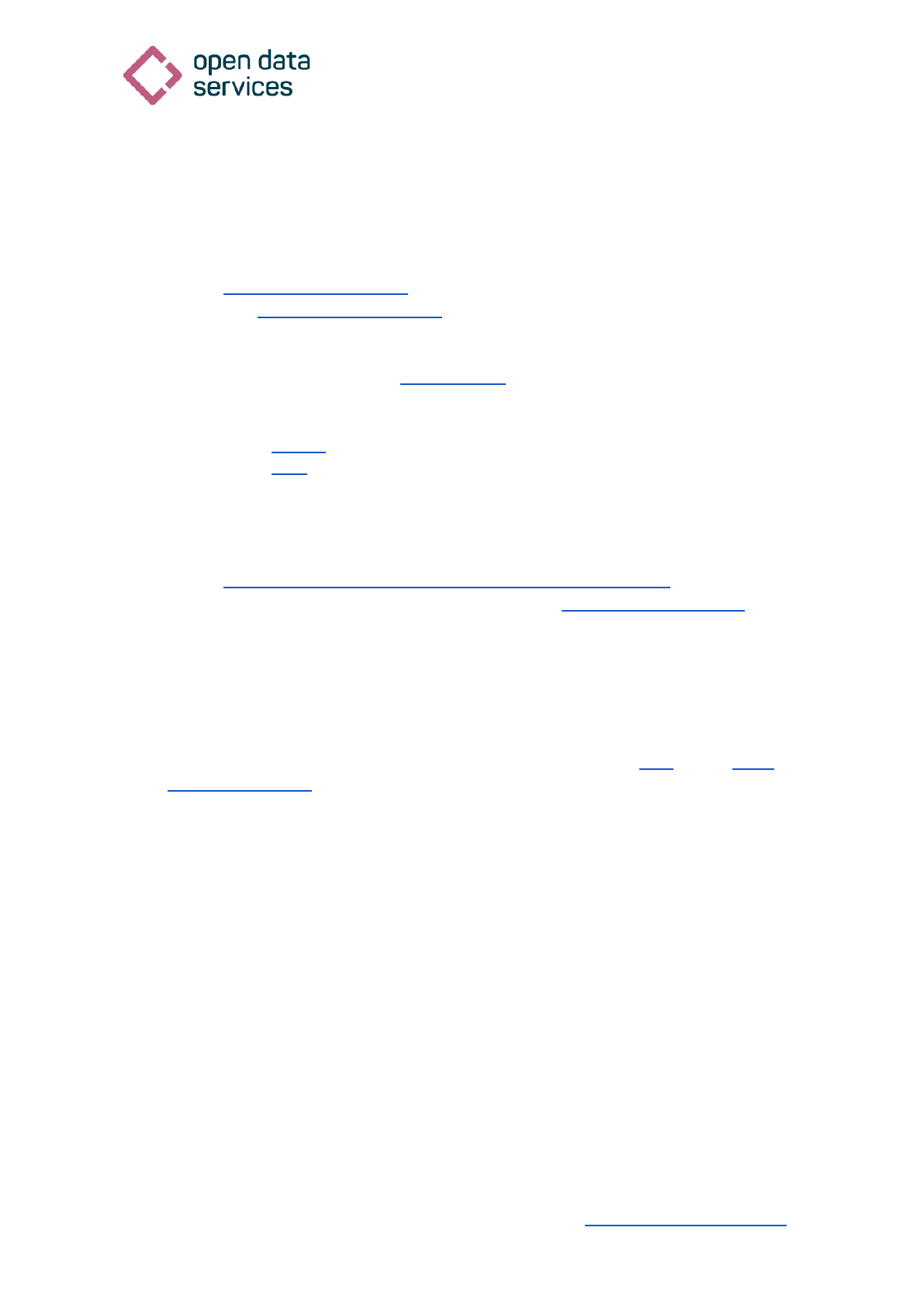
Risk Data Library Standard
Technical review report
All fields, concepts, terms etc. should be fully defined once, and then linked back to when
referenced internally. This applies to all parts of the documentation, text, tables, and
examples.
● Full descriptions and definitions are missing within numerous sections. E.g.
○ RDLS Hazard taxonomy values are not described.
○ The RDLS Hazard taxonomy hazard type measure metrics table doesn’t have
Metric:Unit for every Hazard type in the taxonomy. Convective Storm,
Extreme Temperature, and Strong Wind are all missing.
○ “Loss” is not defined in Key Concepts.
● Information is duplicated rather than providing a link to the initial definition. E.g.
○ In the Hazard page the RDLS Hazard type taxonomy is repeated.
○ In the Loss page a section describing specific periods of time is repeated from
the Hazard page.
● First instances of abbreviations are not fully defined. E.g.
○ Catastrophe risk models (cat models) which first appears in
https://docs.riskdatalibrary.org/keyconcepts.html#cat-model
○ The values in the Hazard type column in the RDLS Hazard taxonomy
measure metrics table.
● Few internal links are used. Key areas where a link would be useful include the
schema tables where the value should be taken from part of one of the
recommended taxonomies.
● One instance of a circular link was identified - “please see this here” link in Other
hazard taxonomies.
Structure
Consistent structure and format helps users comprehend the documentation quickly.
The structure and format used in the schema definition tables is inconsistent:
● Schema tables do not have consistent columns. The majority have 4 columns
named, “Required”, “Attribute”, “Description” and “Type”.
○ The General attributes individual resources table is missing the “Description”
column.
○ The Vulnerability specifics table is missing the “Required” column.
○ The Vulnerability additional and specific tables have a “Field name” column
rather than an “Attribute” column.
○ The Vulnerability additional table has an “Example” column rather than a
“Type” column.
10
Open Data Services Co-operative Limited is a company limited by shares, operated as a Workers' Co-operative |
Registered in England. Company number: 09506232 | Registered address: 1st Floor, Holyoake House, Hanover
Street, Manchester, Greater Manchester, M60 0AS | Correspondence to [email protected]
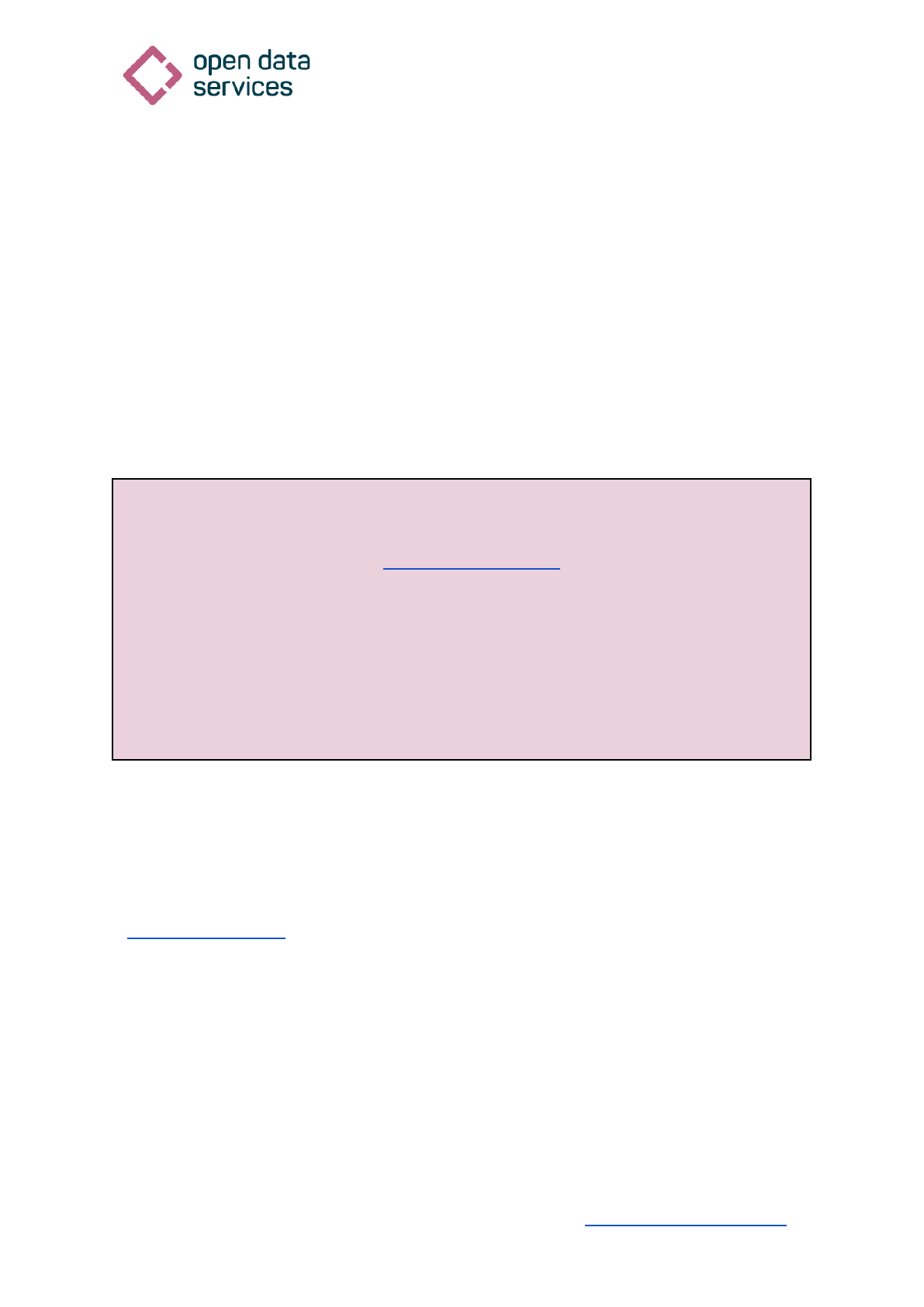
Risk Data Library Standard
Technical review report
● The schema tables “Type” columns are inconsistent:
○ Values given are mixtures of codelists, types and formats. These should be
separated out and defined elsewhere in the documentation.
○ It’s unclear if the value in this column is a fixed required value (e.g. Format =
“ext” in the General attributes individual resources schema) or if the value is
merely an example. This links back to the issue of the RDLS Hazard
taxonomy being “recommended” but the Hazard Types from it being listed in
the Hazard, Vulnerability and Loss schema “Type” columns.
○ Potential values are not ordered consistently, e.g. Calculation method in the
Hazard schema is [Simulated, Observed, Inferred] and in the Loss schema is
[Inferred, Simulated, Observed]. This latter order matches the `enum` order in
the schema definitions.
Recommendations
● A number of the issues described will be addressed through applying the
recommendations from the Organisation of content section.
● Expand the Key concepts section to include more of the repeated concepts and
link to them were necessary.
● Where multiple terms are used for the same concept, decide on a single term.
● Ensure that the columns within schema tables are consistent.
Single source of truth
This section documents our assessment of the user documentation with respect to the
importance, for both users and the standard maintainers, of preserving an authoritative
single source of truth for RDLS.
A single source of truth (SSOT) is an authoritative primary location for the definition of a data
model, including the structure, format and meaning of its fields and codes.
Using a SSOT reduces the burden of maintaining a data standard by ensuring that changes
and updates need only be made in one place, and provides users with confidence that they
are following the correct guidance when working with the standard.
11
Open Data Services Co-operative Limited is a company limited by shares, operated as a Workers' Co-operative |
Registered in England. Company number: 09506232 | Registered address: 1st Floor, Holyoake House, Hanover
Street, Manchester, Greater Manchester, M60 0AS | Correspondence to [email protected]
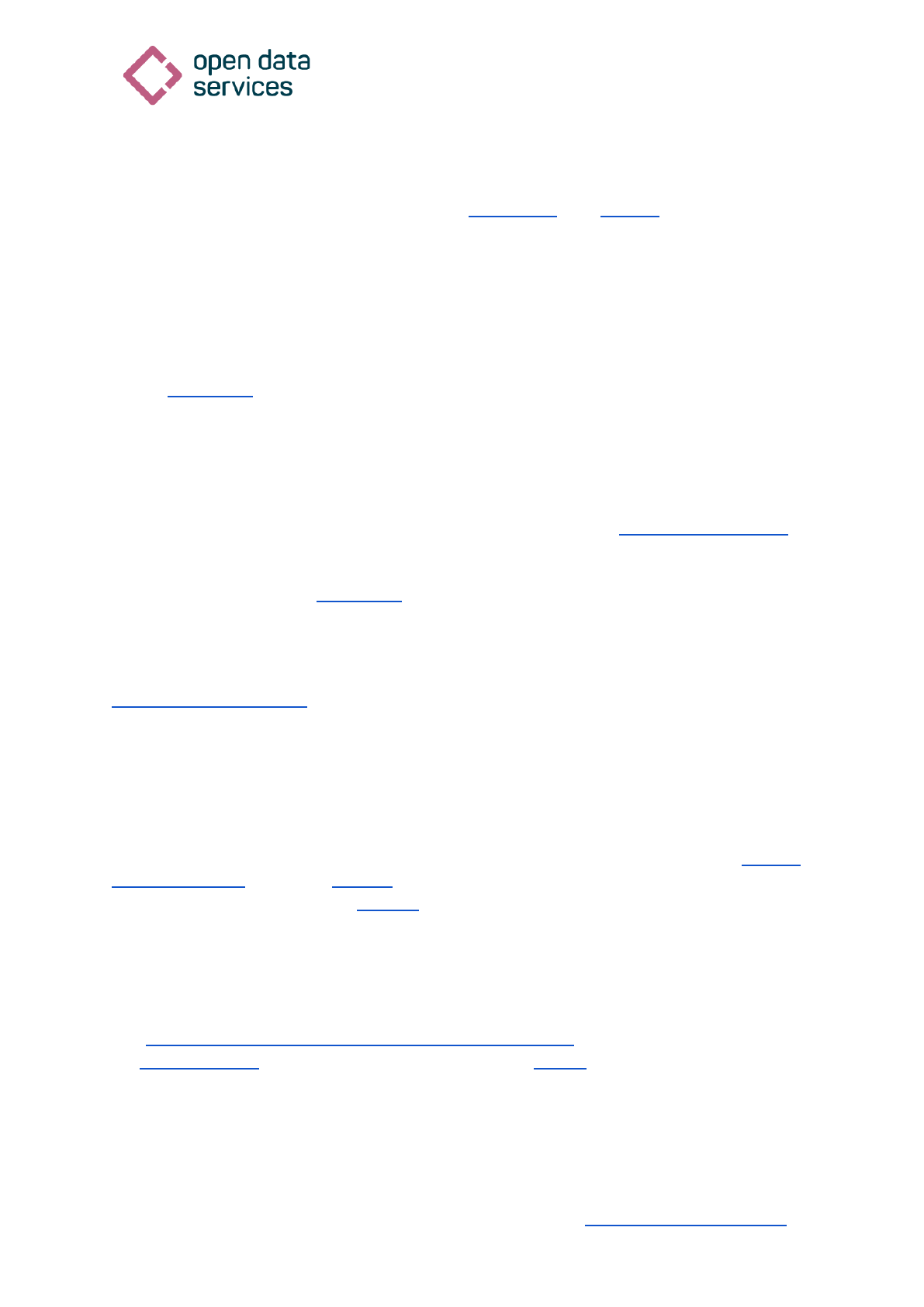
Risk Data Library Standard
Technical review report
Consistency between documentation and schema
The documentation should reflect the content in the schema. Two versions of the schema
were identified, one in each of the RDL GitHub repositories. The schema in the rdl-standard
repository was used to check for inconsistencies between the schema and the
documentation.
● Multiple inconsistencies were identified:
○ attributes in the schema but not the documentation and vice versa,
○ attributes with different names in the schema and the documentation,
○ identification of which attributes are requirements of the standard.
Appendix 2 contains a full comparison of attributes in the documentation schema
tables to fields in the JSON schema.
● Values contained in the enum property of schema definitions do not all match
those given in the documentation schema table ‘Type’ column. E.g.
○ Hazard type in the documentation lists the Hazard types from the RDLS
Hazard taxonomy as full names but the definition of ‘common_hazard_type`
lists abbreviated codes. The same codes are used but undefined in the RDLS
Hazard taxonomy measure metrics table in the documentation.
A full list is given in Appendix 2.
Reference documentation and generation
Reference documentation provides the technical description of the standard. It is a
frequently used section of the documentation and as such its accuracy is vital.
Reference documentation can be generated manually, or through the use of pre-commit
scripts to reformat technical definitions in JSON schema and codelist CSV files into
human-readable documentation.
The RDLS user documentation appears to have been manually authored through a number
of markdown files held in the rdl-docs GitHub repository. These files were then compiled and
hosted as a static website using MkDocs.
The files in the repository are not all present in the MkDocs site (usecases.md is missing).
There is no documentation detailing how and when these files are maintained or what the
process for this is.
The inconsistencies between the documentation and schema and the creation of some of
the missing content could be addressed by switching to Sphinx for documentation
generation. Open Data Services maintain a number of open source Sphinx extensions to
generate documentation based on JSON Schema and CSV codelist files. Moving to Sphinx
12
Open Data Services Co-operative Limited is a company limited by shares, operated as a Workers' Co-operative |
Registered in England. Company number: 09506232 | Registered address: 1st Floor, Holyoake House, Hanover
Street, Manchester, Greater Manchester, M60 0AS | Correspondence to [email protected]
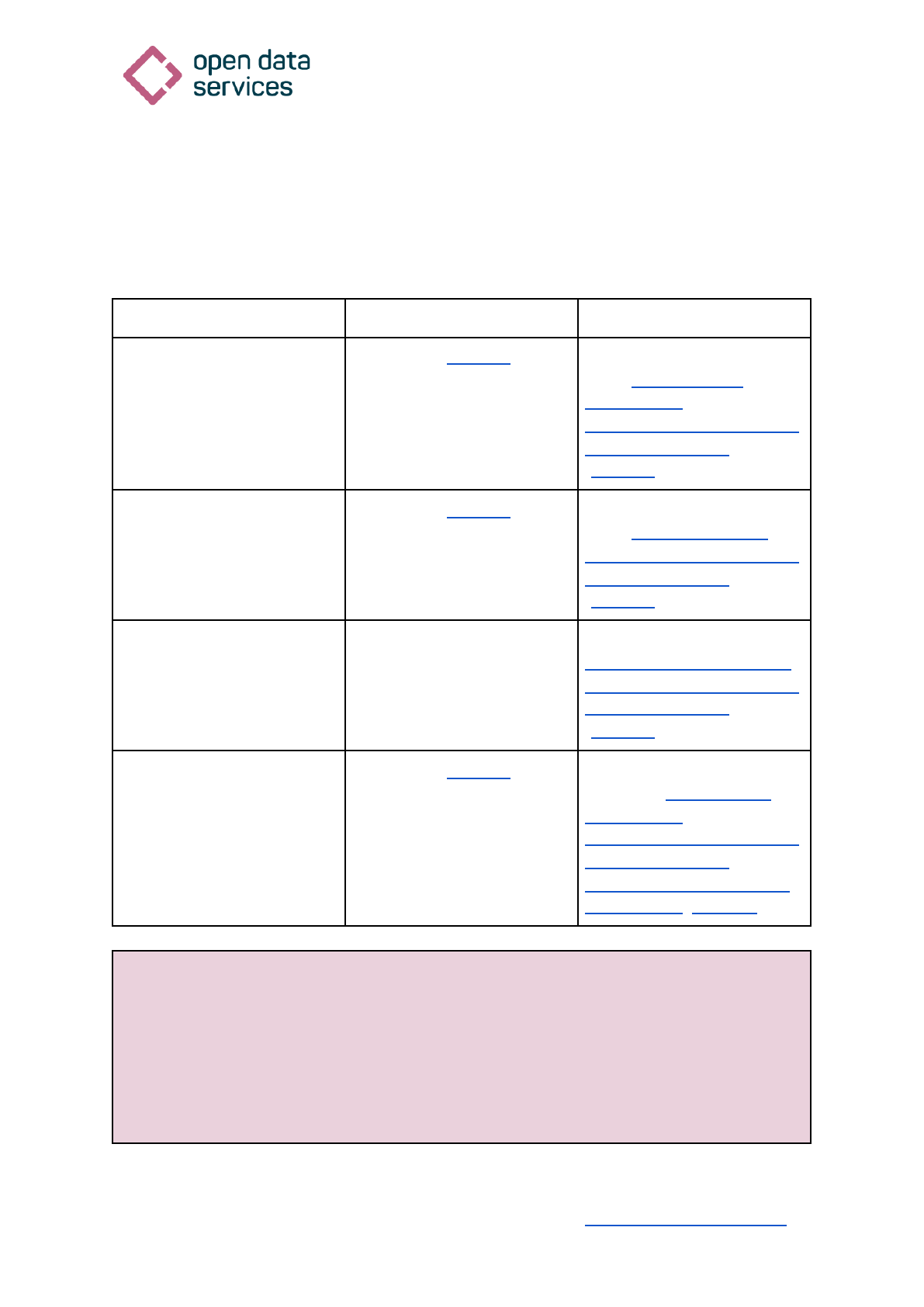
Risk Data Library Standard
Technical review report
would reduce the risk of the documentation and schema being out of sync and reduce the
maintenance burden.
Element
RDLS
Sphinx
Schema reference tables
Hardcoded (example)
Generated from schema
using JSON Schema
Directives —
sphinxcontrib-opendataservi
ces documentation
(example)
Codelist reference tables
Hardcoded (example)
Generated from codelists
using Misc Directives —
sphinxcontrib-opendataservi
ces documentation
(example)
Definitions
?
Quoted from schema using
JSON Include Directives —
sphinxcontrib-opendataservi
ces documentation
(example)
Examples
Hardcoded (example)
Generated from example
files using JSON Include
Directives —
sphinxcontrib-opendataservi
ces documentation and
reStructuredText Directives
-- CSV Table (example)
Recommendations
● Declare a Single Source of Truth, e.g. the rdl-schema GitHub repository
● Move the documentation from MkDocs to Sphinx to take advantage of the
auto-generation scripts available to create reference content from the schema json.
● Remove inconsistencies between the schema and the documentation, and
13
Open Data Services Co-operative Limited is a company limited by shares, operated as a Workers' Co-operative |
Registered in England. Company number: 09506232 | Registered address: 1st Floor, Holyoake House, Hanover
Street, Manchester, Greater Manchester, M60 0AS | Correspondence to [email protected]
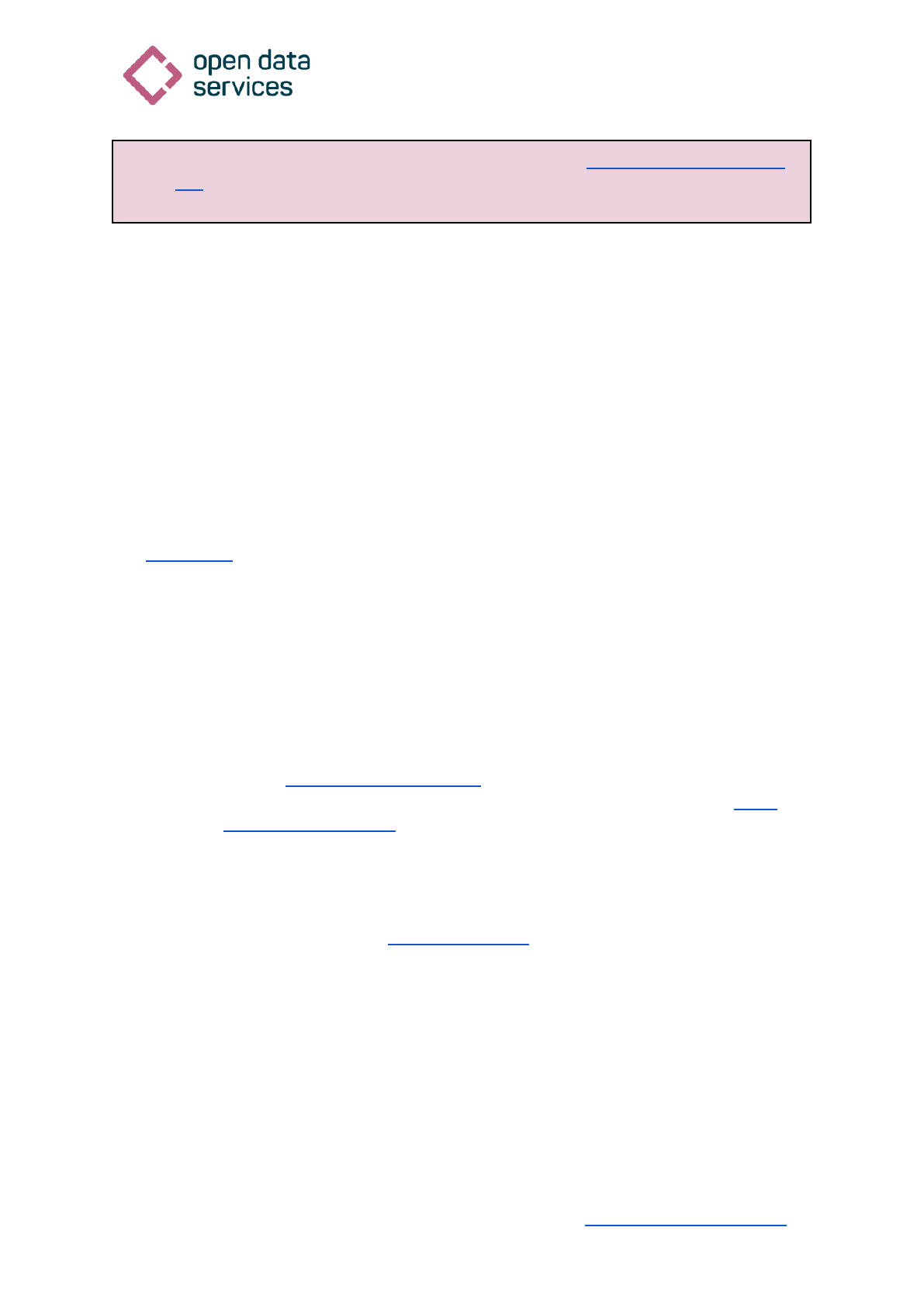
Risk Data Library Standard
Technical review report
between schema definition table formatting by using a documentation generation
tool.
Example data
This section documents our assessment of the example data provided in the user
documentation and makes recommendations for improvements touching on the fullness,
format, and number of examples.
Examples of standardised data are a key element of documentation, aiding the user in
understanding how the standard should be applied and how the final product should look.
Examples should be complete and accurate with additional explanations where appropriate
and provided for all core parts of the standard. Maintaining comprehensive examples also
aids standard maintenance, acting as a check on changes or updates to the data model and
schema.
The Data model section of the RDLS user documentation contains a number of examples.
The majority of examples take the form of a data table with attributes from the schema in
one column, example values in another and a column indicating if the attribute is a
requirement of the standard. Most also include an accompanying image showing the dataset
being described overlaid on a basic administrative or road map. These examples are all well
chosen and will aid potential users in understanding how to apply the standard to their own
datasets. Improvements are possible however.
● The examples do not include all potential attributes of the standard.
○ Some of the examples are missing attributes that are defined as “Required”,
e.g. the Observed losses example.
○ Some non-required attributes are not used in any example, e.g. the Flood
hazard maps for Kabul example includes all of the required attributes but not
all of the optional attributes.
There should be at least one example use of each attribute in the standard.
● Some, but not all, examples include attributes from the General schema as well as
the specific schema, e.g. the Exposure example includes Geographic coverage
which doesn’t feature in the exposure schema but almost matches Geo coverage in
the General schema.
● There are no examples provided for either the General schema or the Vulnerability
schema. Examples should be provided for all sections of the standard.
● The example tables include the example data in the column “Example”. The data
table is already identified as an example, therefore this column would be better
renamed as “Value”.
14
Open Data Services Co-operative Limited is a company limited by shares, operated as a Workers' Co-operative |
Registered in England. Company number: 09506232 | Registered address: 1st Floor, Holyoake House, Hanover
Street, Manchester, Greater Manchester, M60 0AS | Correspondence to [email protected]
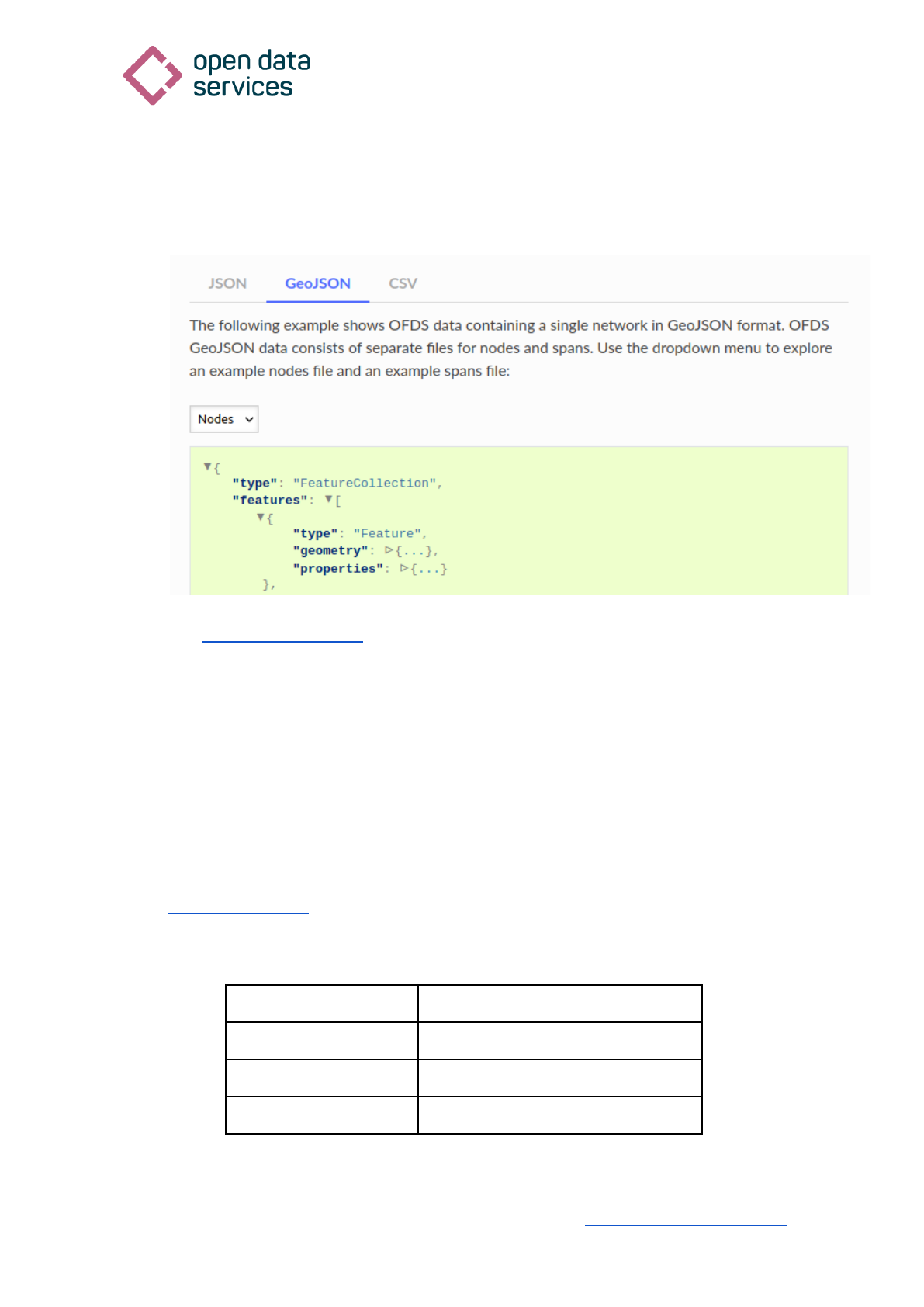
Risk Data Library Standard
Technical review report
● The examples are provided in a single format, as an HTML table. Providing examples
in the formats in which users are expected to publish data would help users to
understand what implementation looks like in practice.
● The Implementation/Local section describes implementing RDLS via folder and file
names yet no examples are provided in the Data Model sections to demonstrate this
implementation option.
● The images that accompany the examples contain at least 2 datasets, the dataset
being described by the example RDLS table and an underlying map.
○ Both datasets should be cited and where possible linked to.
○ There is no clear explanation of what the dataset image is representing. They
require a figure caption that explicitly links the attributes in the RDLS data to
the image.
● In addition to issues already mentioned there are multiple problems with the
Exposure example:
○ Multiple attribute names do not match the attributes named in the schema
table.
Example attribute
Assumed schema attribute
Exposure category
Category
Taxonomy
Taxonomy source
Period of occupancy
Occupancy time
15
Open Data Services Co-operative Limited is a company limited by shares, operated as a Workers' Co-operative |
Registered in England. Company number: 09506232 | Registered address: 1st Floor, Holyoake House, Hanover
Street, Manchester, Greater Manchester, M60 0AS | Correspondence to [email protected]
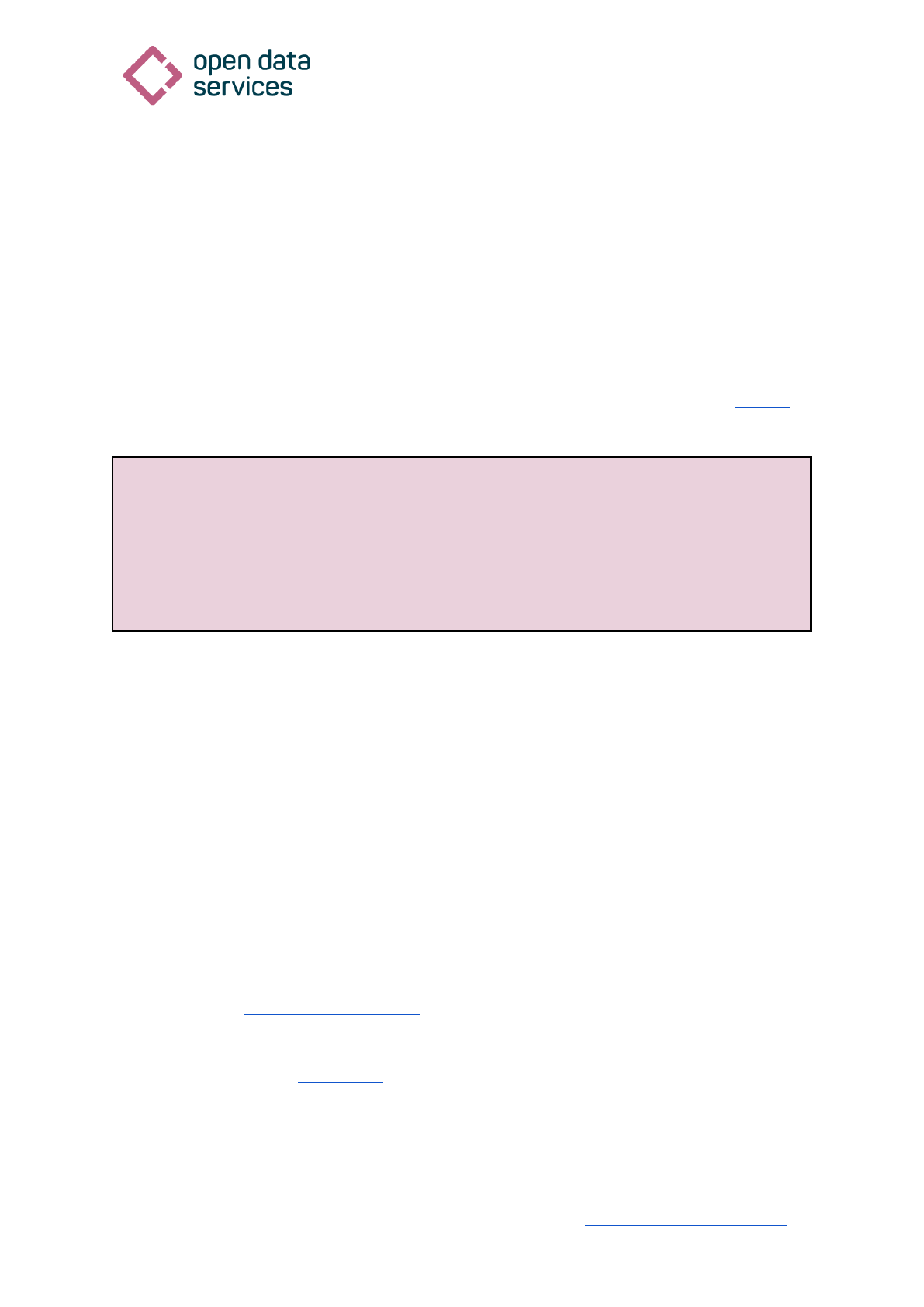
Risk Data Library Standard
Technical review report
○ There is an attribute included that can only be found in the Hazard schema,
Unit of measure but the example value given is not an appropriate value for
the attribute defined in the Hazard schema.
○ There is one image for two datasets but it’s unclear how the data shown
relates to each of the datasets described. Suggest splitting the image to show
each dataset individually and then a combined image at the end.
● There are examples provided as prose text rather than as RDLS. E.g.
○ “For example, an analysis of eartquake frequency based on seismic
observations from 1934 (occurrence time start) to 2001 (occurrence time
end), for a total count of 66 years (occurrence time span).” from the Hazard
schema page.
Recommendations
● Provide complete examples for all 5 sections of the standard.
● Ensure examples are consistent with the schema definitions.
● Provide examples in each supported publication format as well as HTML tables.
Style, readability, spelling and grammar
This section discusses the assessment of the user documentation and its style, readability,
spelling and grammar.
The style and readability of user documentation can have a significant impact on the
adoption of the standard and should be tailored towards the intended audience. From the
use cases presented the intended audience is expected to have basic technical knowledge
and ability to work with data, and will be comfortable with the terminology used in the risk
data management domain. Inconsistent style, poor spelling and grammar and low readability
can all lead to documentation that is hard to understand and use.
The general style of the RDLS user documentation is consistent and appropriate for the
intended audience, balancing an expected knowledge of the technical domain with an
expected lower familiarity with metadata standards. Restructuring the existing content as
recommended in Organization of content would improve the readability of the
documentation.
Creating and adopting a Style guide would help to ensure the consistency of style and
readability of the documentation. Issues with the current documentation to consider covering
in such a guide include:
16
Open Data Services Co-operative Limited is a company limited by shares, operated as a Workers' Co-operative |
Registered in England. Company number: 09506232 | Registered address: 1st Floor, Holyoake House, Hanover
Street, Manchester, Greater Manchester, M60 0AS | Correspondence to [email protected]
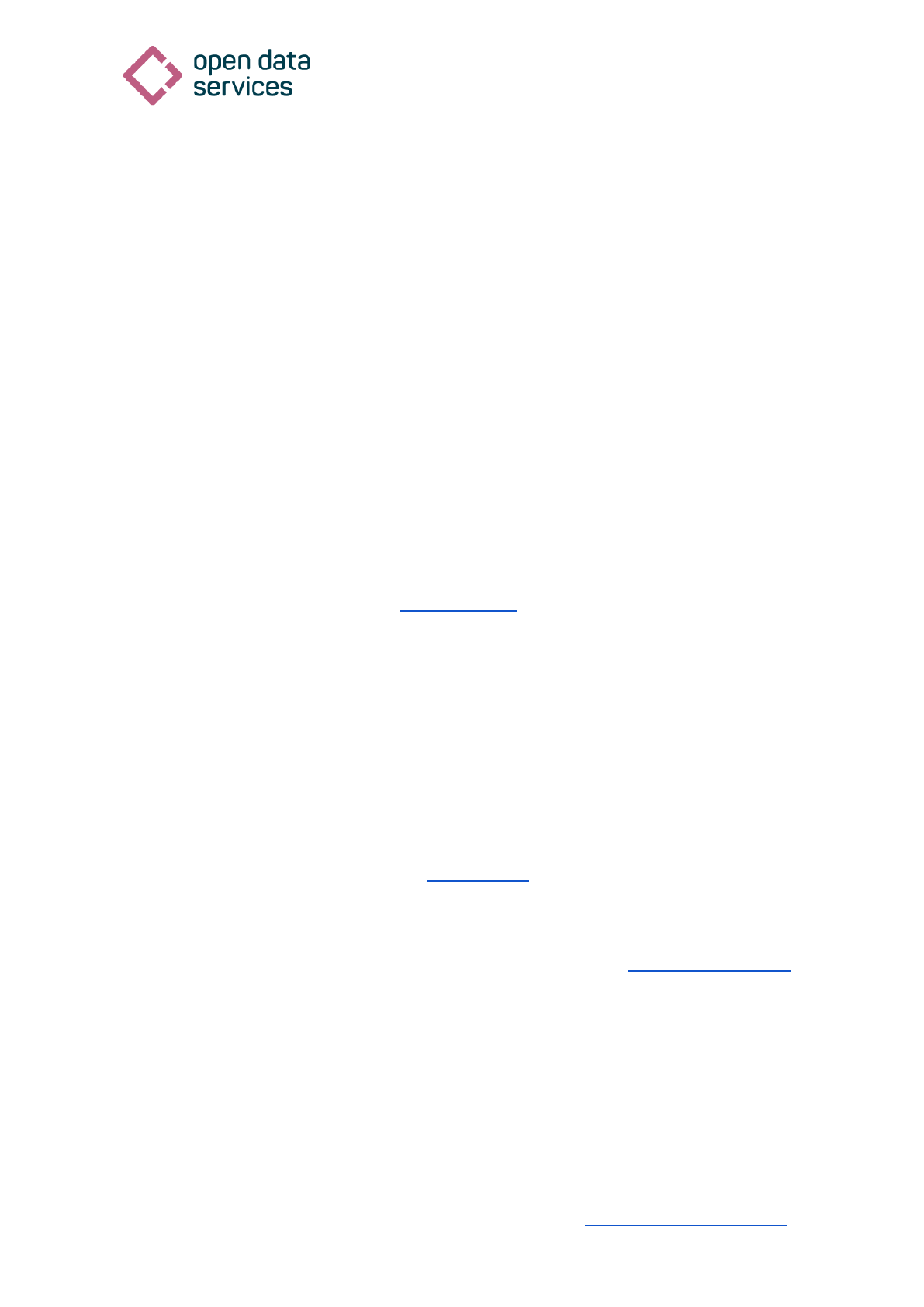
Risk Data Library Standard
Technical review report
● The removal of overly long sentences, e.g.
“The exposure schema covers a wide variety of data describing structural,
infrastructural and environmental asset, population, and socio-economic
descriptors, each with relevant attributes for assessing risk from multiple
hazards.”
could be rewritten as:
“The exposure schema covers a wide variety of data describing:
● structural, infrastructural and environmental assets
● population descriptors
● socio-economic descriptors.
with relevant attributes for assessing risk from multiple hazards.”
Where the sentence has been restructured to separate out the list and break up the
long line of text. Tools such as Hemingwayapp can be used to test the readability of
sentences and paragraphs as they are being written.
● Descriptions should begin with a noun phrase, e.g. “For probabilistic scenario, the
occurrence probability is expressed according to frequency type” should be “The
occurrence probability is expressed according to the frequency type for probabilistic
scenarios.”
● Incomplete lists should begin with “e.g.” or “for example”, e.g. “(geological,
geophysical and hydrometeorological)” from the definition of Hazard in Key concepts
should be “(e.g. geological, geophysical and hydrometeorological)”
● When quotations are used, e.g. in Key concepts, these should be formatted as such
and clearly cited.
Considerations of accessibility should be taken into account when making decisions around
colour and font choice, and image descriptions. E.g. The titles in the Examples of risk data
images are almost illegible in white against a pale grey background, and no image
description is provided.
17
Open Data Services Co-operative Limited is a company limited by shares, operated as a Workers' Co-operative |
Registered in England. Company number: 09506232 | Registered address: 1st Floor, Holyoake House, Hanover
Street, Manchester, Greater Manchester, M60 0AS | Correspondence to [email protected]
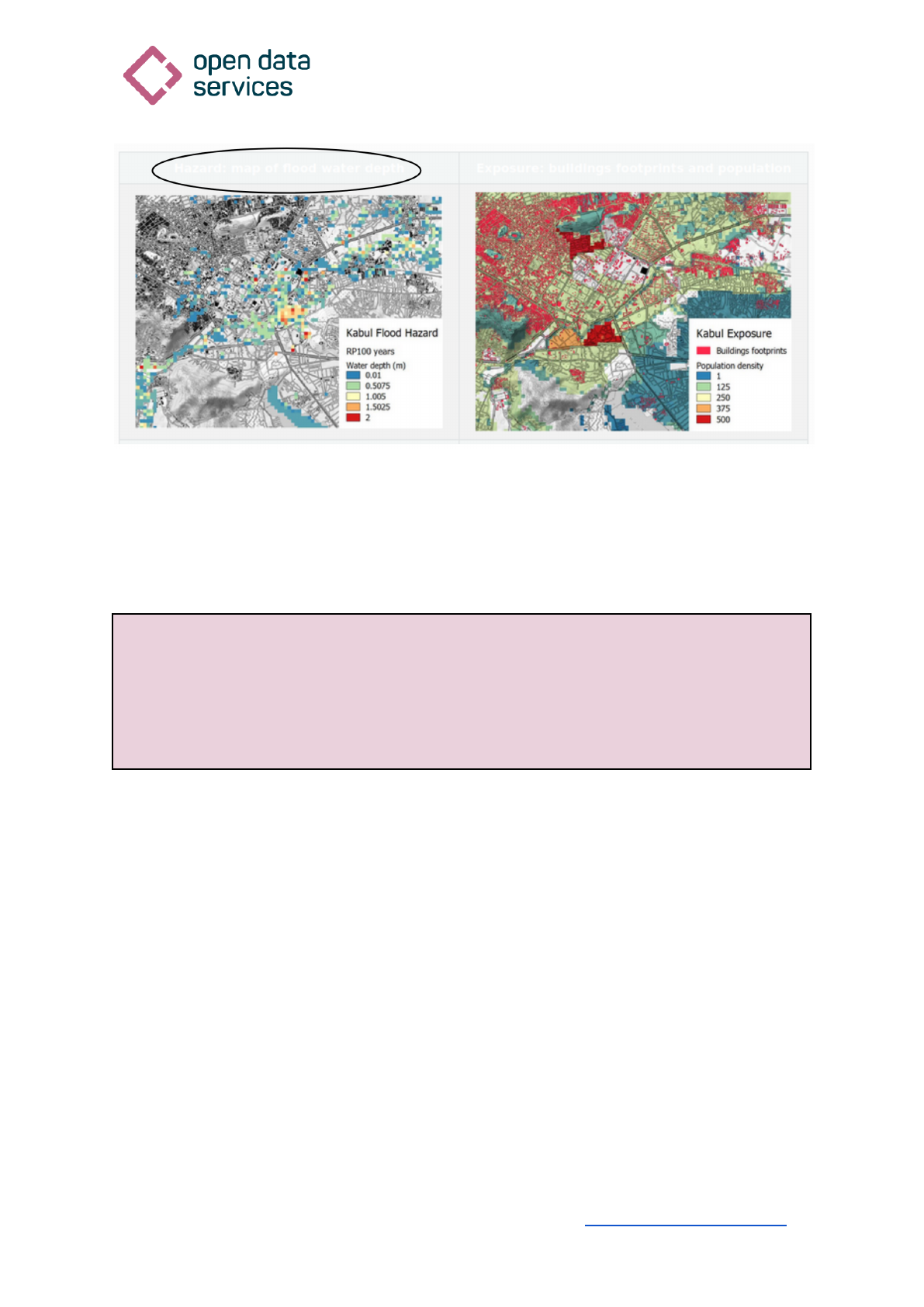
Risk Data Library Standard
Technical review report
Minor typos and spelling mistakes are scattered throughout the documentation, e.g.
● “eartquakes” instead of “earthquakes”,
● “a dataset represent landslide hazard” instead of “a dataset representing a landslide
hazard”.
Recommendations
● Correct spelling and grammatical errors.
● Take into consideration accessibility concerns and readability of sentences when
redrafting content.
Schema
This section documents our assessment of the RDLS JSON schema against best practices
for authoring JSON schema and makes recommendations for improvements.
Where the user documentation provides human readable explanations and references to the
data standard, the schema provides a machine readable version. This element of the data
standard is at the core of creating and utilising tools for both the users and maintainers of the
standard, such as validation tools and documentation automation tools. A schema that is a
well written and accurate representation of the data standard can ease the use of, and
increase the adoption of, the standard.
It is unclear from the current documentation and files Open Data Services had access to if
the intent is for a JSON file to be a requirement of valid RDLS. Due to the existence of
18
Open Data Services Co-operative Limited is a company limited by shares, operated as a Workers' Co-operative |
Registered in England. Company number: 09506232 | Registered address: 1st Floor, Holyoake House, Hanover
Street, Manchester, Greater Manchester, M60 0AS | Correspondence to [email protected]
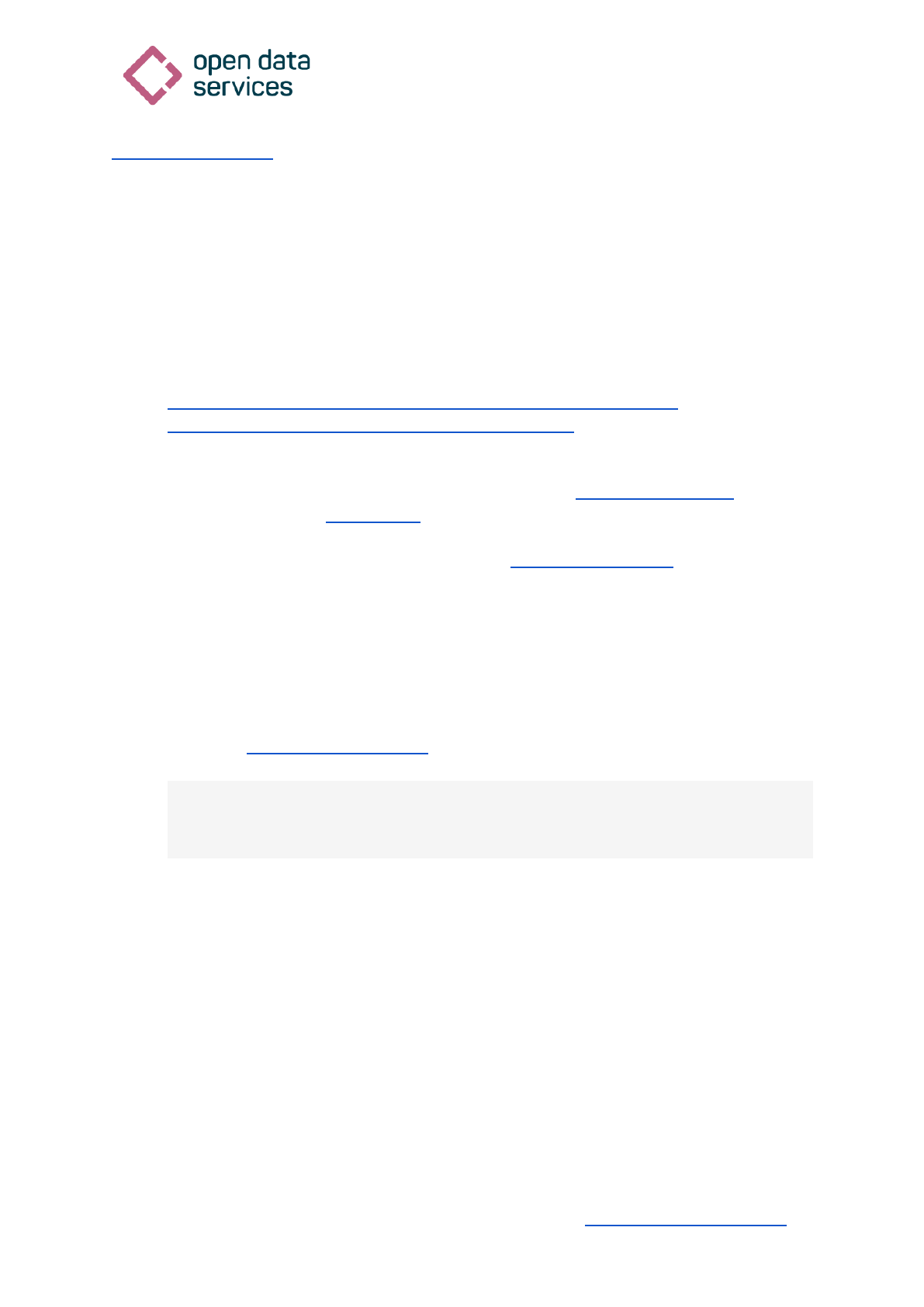
Risk Data Library Standard
Technical review report
rdl_schema_0_1.json the assessment that follows is based on the assumption that users will
be expected to generate RDLS files in JSON.
General observations
This section documents our general observations on the validity and completeness of the
schema. Where fuller consideration is warranted a dedicated section is included further on in
the report.
There are two versions of the schema in the GFDRR GitHub repositories:
● rdl-standard/blob/main/specs/DDH_compliant/rdl_schema_0_1.json
● rdl-docs/blob/main/docs/schema/rdl_schema_0.1.json
These versions appear to be identical but the presence of two versions of the schema
increases the risk of untracked changes through the lack of a single source of truth. This
issue is further discussed in Repositories.
One version of the schema was chosen for analysis, rdl_schema_0_1.json. This file is valid
JSON, however a number of general issues were identified:
● The schema makes use of anyOf to select one of the four RDM components,
Hazard, Exposure, Vulnerability, or Loss. This should be changed to oneOf as no
dataset will have more than one of these components. If anyOf is retained
additionalProperties must be disallowed.
● There are unresolvable references. After fixing these the following data validates:
{
"common": {}
}
Presumably, this is not intended. The solution is to either:
○ Add required properties to common
○ Set minProperties on common
○ Add required properties to all of the objects in anyOf
○ Disallow additionalProperties for all of the objects in anyOf
● Related to the above point, the use of the required property is inconsistent with
some second and third level objects having no required properties.
○ e.g. anyOf.vulnerability, yet there are attributes identified in the
documentation as required for this element.
19
Open Data Services Co-operative Limited is a company limited by shares, operated as a Workers' Co-operative |
Registered in England. Company number: 09506232 | Registered address: 1st Floor, Holyoake House, Hanover
Street, Manchester, Greater Manchester, M60 0AS | Correspondence to [email protected]
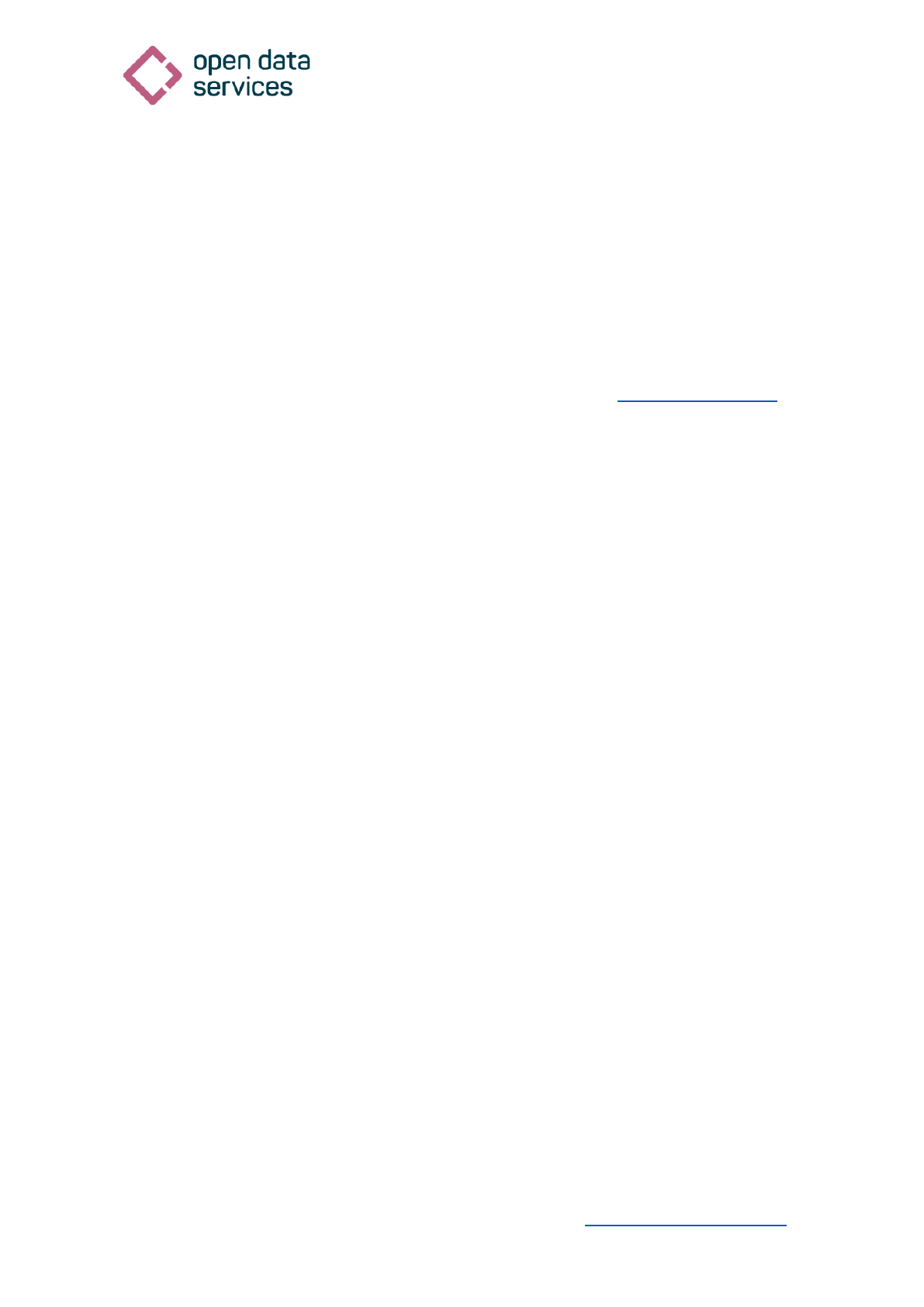
Risk Data Library Standard
Technical review report
○ e.g. .model and .value are required in anyOf.exposure, but .value has no
required properties. This leaves open the possibility of a user having to
include an empty object to satisfy the schema.
Data model
The data model defines the structural and conceptual relationships between the elements
that make up the data standard. It can therefore have a significant impact on the usability
and extensibility of the standard.
The top-level conceptual object is a data file with spatial properties. The standard started life
as an SQL database designed to hold these data files themselves (the Risk Data Library)
and not just catalogue the metadata and access points. This is likely to account for some of
the structural decisions seen in the JSON schema. The use cases and ambitions for the
standard are however more far reaching, intending to create a standard that can be used by
others to expose their data from their own host locations.
JSON format allows for multiple layers of nesting. Multiple layers of nesting can make a
schema harder to read for human users, and introduce complexity when flattening the data
structure in order to present it in a flat field format such as a CSV file or an SQL database.
The nesting in the schema is both minimal (reflecting the standard’s origins as an SQL
database) and unnecessarily complicated.
● common consists of two nested objects, contribution (of type object) and
resources (of type array). This separation is required if multiple files are to be
described by resources, e.g. different formats or resolutions of the same data.
● The four objects representing the four components, hazard, exposure,
vulnerability and loss are nested within anyOf, these should be at the same
level as common. This would ease human readability.
● It’s unclear why the nesting within three of these four is necessary, e.g.
○ exposure is divided into model and value
○ vulnerability divided into model and specifics
○ loss having a further nested object model.
If the intended user of the standard is most likely to be working with spreadsheets
and relational databases it makes sense to leave the schema with as few layers of
hierarchy as possible. We suggest removing this second level nesting within each of
these three objects.
Nesting doesn’t have to create additional complexity, it can be used to reduce repetition and
therefore simplify the schema. Such a use would be through the creation of common objects.
The benefit of this is that the common objects only need to be defined once in
definitions, and the different contexts in which they are used can be given in the
20
Open Data Services Co-operative Limited is a company limited by shares, operated as a Workers' Co-operative |
Registered in England. Company number: 09506232 | Registered address: 1st Floor, Holyoake House, Hanover
Street, Manchester, Greater Manchester, M60 0AS | Correspondence to [email protected]
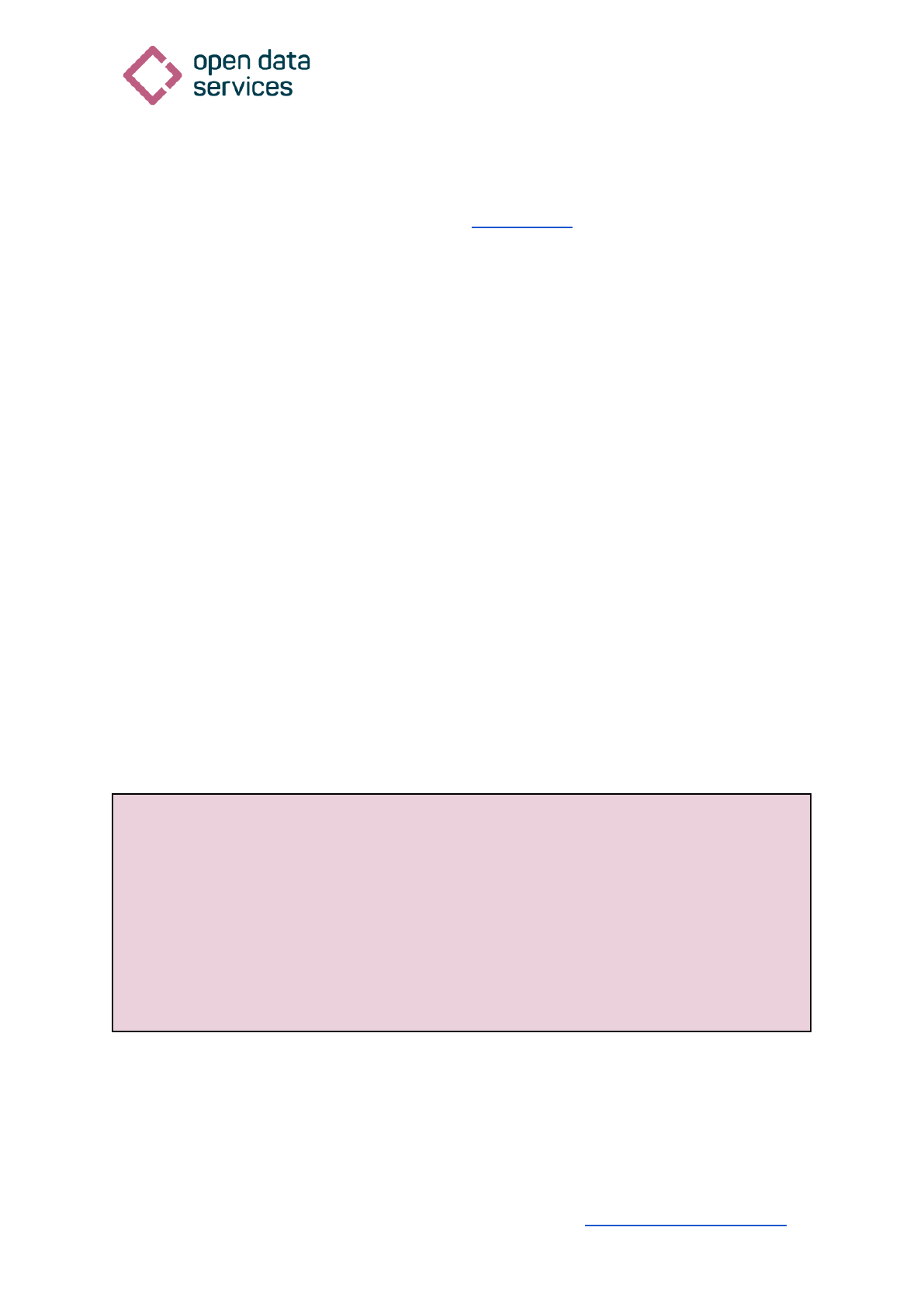
Risk Data Library Standard
Technical review report
description of the field that references it. The current schema makes little and
inconsistent use of modularisation. E.g. the following common objects could be created:
● A taxonomy object similar to the OCDS Classification object to contain the current
taxonomy_source and taxonomy_code fields in the vulnerability.model and
exposure.model objects.
● An occurrence time object containing time_start, time_end, time_span,
time_year from both the hazard.event_set and loss.model schema
sections.
This common object method is used in exposure.value, an object made up of two fields,
val_type and val_unit. However, these same two fields appear in
vulnerability.model and loss.model but not within a higher level value object.
The data model is designed to describe a single dataset. However the use cases for the
standard are based around the generation of multiple datasets within single projects. A
method for implementing RDLS at a project/multi-dataset level is required. A simple solution
would be to include a globally unique project identifier in common and make this field a
required field.
The schema makes use of the definitions property defined in JSON schema to define
fields and objects that are repeated within the schema. The use of this property is good
practice as it means fields are defined just once, allowing definitions to act as an internal
single source of truth. However, definitions should be more fully used to define all
objects and not just provide codelists. This would help with the schema’s human readability
by making the top level objects clearer and reduce repetition. It would also bring the
standard inline with other mature standards and their validation tools.
Recommendations
● remove unnecessary nesting in exposure, vulnerability and loss to improve
both readability and potential for flattening.
● move definitions of all objects including the higher level hazard, exposure,
vulnerability and loss to definitions.
● consider creating objects for common groups of fields.
Unresolvable references
A number of references provided in definitions are unresolvable:
21
Open Data Services Co-operative Limited is a company limited by shares, operated as a Workers' Co-operative |
Registered in England. Company number: 09506232 | Registered address: 1st Floor, Holyoake House, Hanover
Street, Manchester, Greater Manchester, M60 0AS | Correspondence to [email protected]
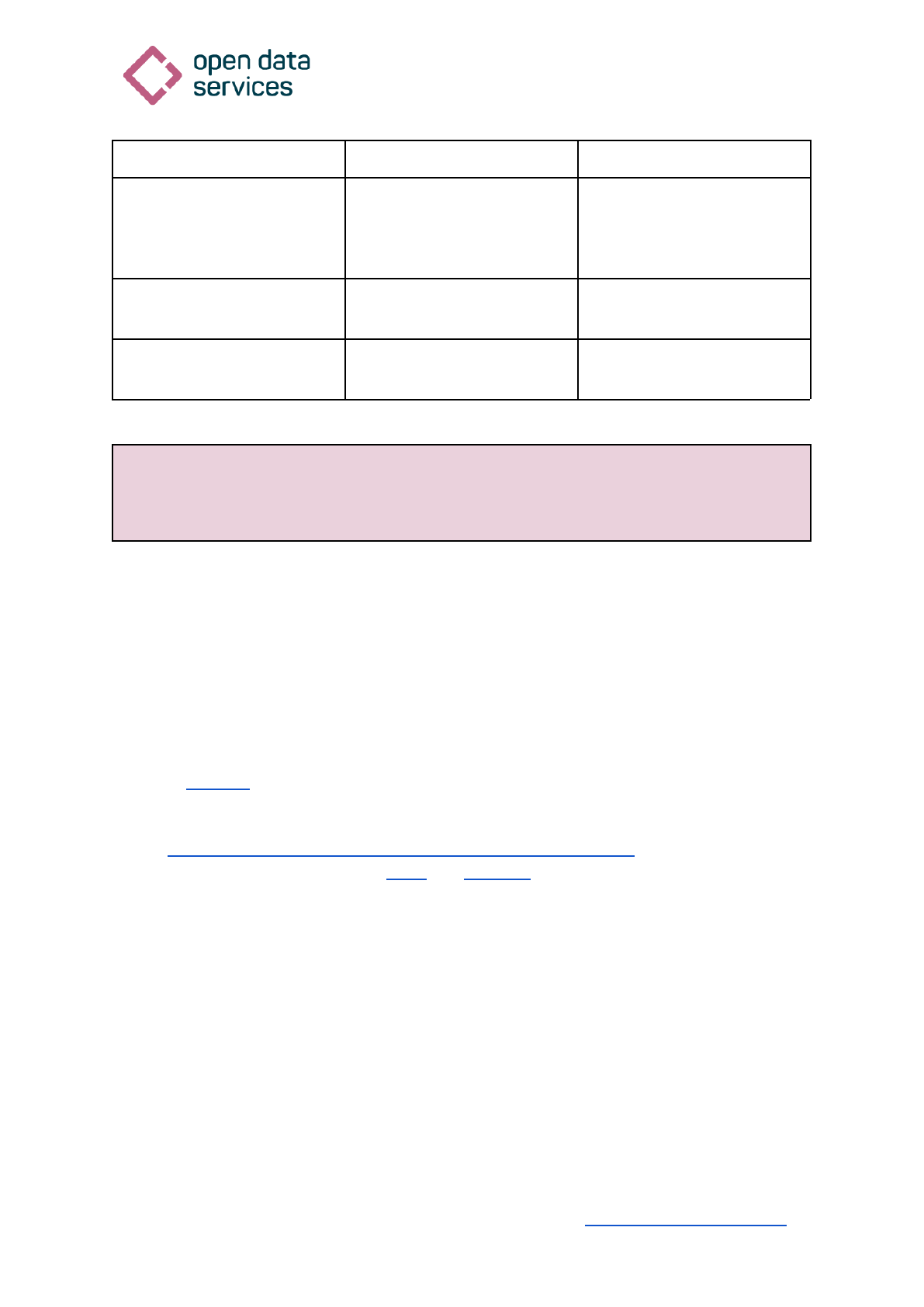
Risk Data Library Standard
Technical review report
Path
Reference
Notes
anyOf.vulnerability.mo
del.approach
#/definitions/f_subtyp
e
This looks like it should be
#/definitions/vulnerab
ility_f_subtype, which
is otherwise unreferenced.
anyOf.vulnerability.mo
del.f_relationship
#/definitions/vulnerab
ility_f_relationship
Missing definition
anyOf.vulnerability.mo
del.f_math
#/definitions/vulnerab
ility_f_math
Missing definition
Recommendations
Fix typos and insert missing definitions.
Usability
This section documents our assessment of the schema's usability against best practices and
with reference to both the user documentation and user feedback already covered.
The schema’s usability should be considered from the point of view of automated tools using
it, as well as the point of view of users referring to it directly.
● The assessment of the schema’s machine usability is implicit in the other subsections
of Schema.
● The primary issue with the human readable usability of the schema is the lack of
consistency between the schema and the user documentation and the minimal
descriptions provided for the fields and codelists. Once these issues have been
addressed the schema’s usability will greatly improve.
Codelists
This subsection documents our assessment of the use of codelists within the schema, and
discusses the advantages of defining these inline vs CSV.
When designing a standard it may be necessary to define a set of values that a field should
(or is recommended to) use. In JSON schema this can be done in one of two ways, inline
using the enum property or through the use of CSV codelists.
The use of CSV codelists has a number of advantages over the inline option. These include:
22
Open Data Services Co-operative Limited is a company limited by shares, operated as a Workers' Co-operative |
Registered in England. Company number: 09506232 | Registered address: 1st Floor, Holyoake House, Hanover
Street, Manchester, Greater Manchester, M60 0AS | Correspondence to [email protected]
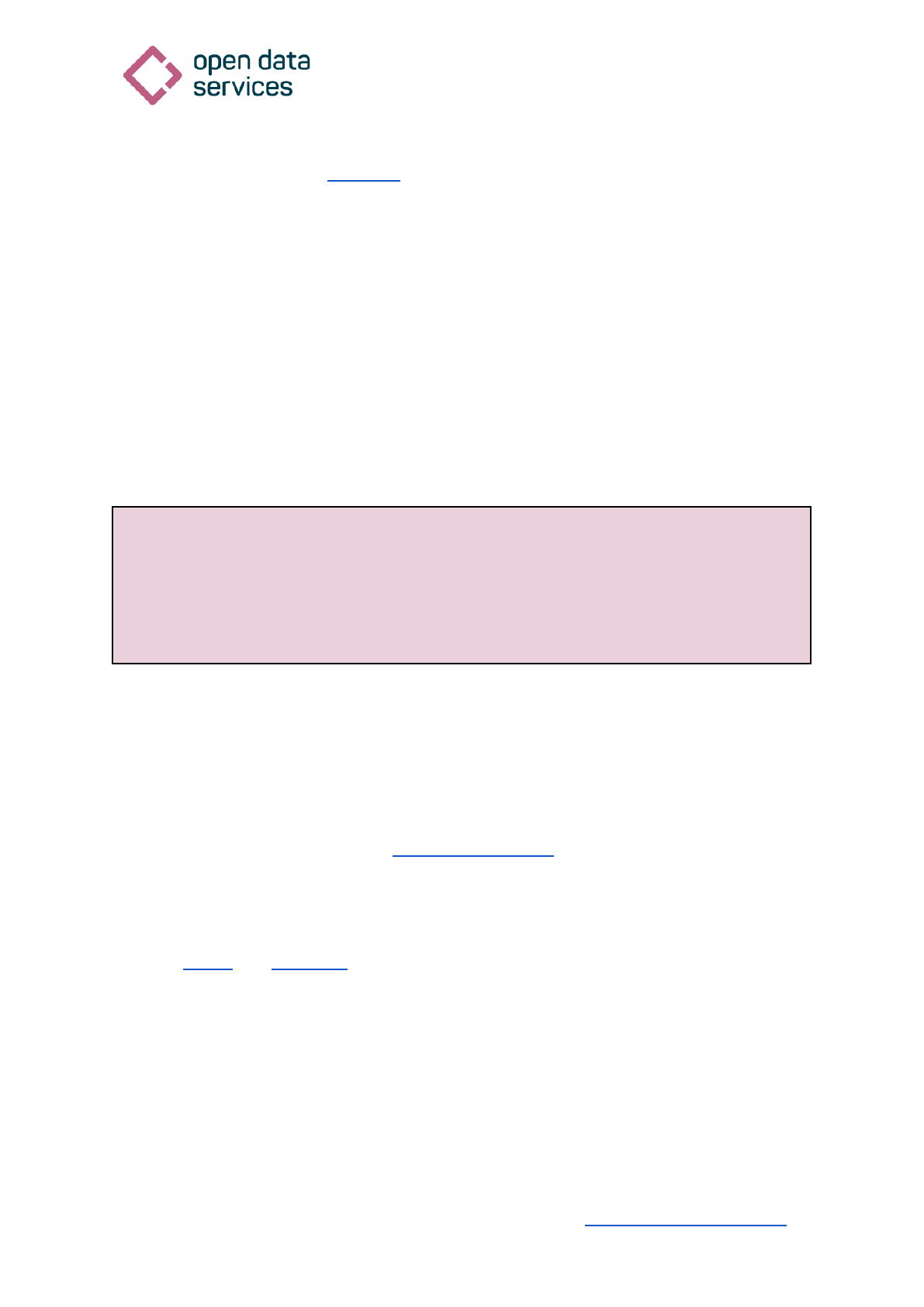
Risk Data Library Standard
Technical review report
● The option to use an extension to JSON schema 0.4 developed and maintained by
Open Data Services Co-operative to declare the codelist, declare if it is open (the
value is only recommended to come from the list) or closed (the value should come
from the list to be considered valid against the standard) and produce relevant
validation messages related to the codelists. enum is the equivalent of a closed
codelist, meaning the only acceptable value for the relevant field is one contained in
the enum array.
● The ability to include descriptions and labels in the CSV file alongside the codes.
The schema currently uses the inline enum method of defining codelists alongside listing
codes in field descriptions. The documentation for a number of these however describes the
values given as recommended only meaning if a user uses a different (equally valid) value it
will violate the standard.
Recommendations
● Convert the current codelists to CSV files, adding in descriptions and labels.
● Add the codelist properties to the schema to define if the codelists are open or
closed removing the enum property for those fields with recommended only values.
Titles and descriptions
This subsection documents our assessment of the titles and descriptions of schema fields
and makes recommendations for improvements based on best practice.
Titles and descriptions are the first parts of a data standard that users see. It is important
therefore that they are clear, unambiguous, and consistent. The field titles and descriptions
in the current version of the schema, rdl_schema_0_1.json, incorporate clear word choices,
using simple English and in the most part only employing technical terms where it is
expected that the average user would be very familiar with them. At this point in the
development of a data standard this is what we would hope to see. Improvements are
possible however. Based on comparison with other more mature open data standards
including OCDS and 360Giving the following issues were identified:
● Descriptions are given for most fields. However the majority of these are minimal and
may not be easily interpretable to a non-expert user.
● The field names are not the same as the field names given in the documentation.
23
Open Data Services Co-operative Limited is a company limited by shares, operated as a Workers' Co-operative |
Registered in England. Company number: 09506232 | Registered address: 1st Floor, Holyoake House, Hanover
Street, Manchester, Greater Manchester, M60 0AS | Correspondence to [email protected]
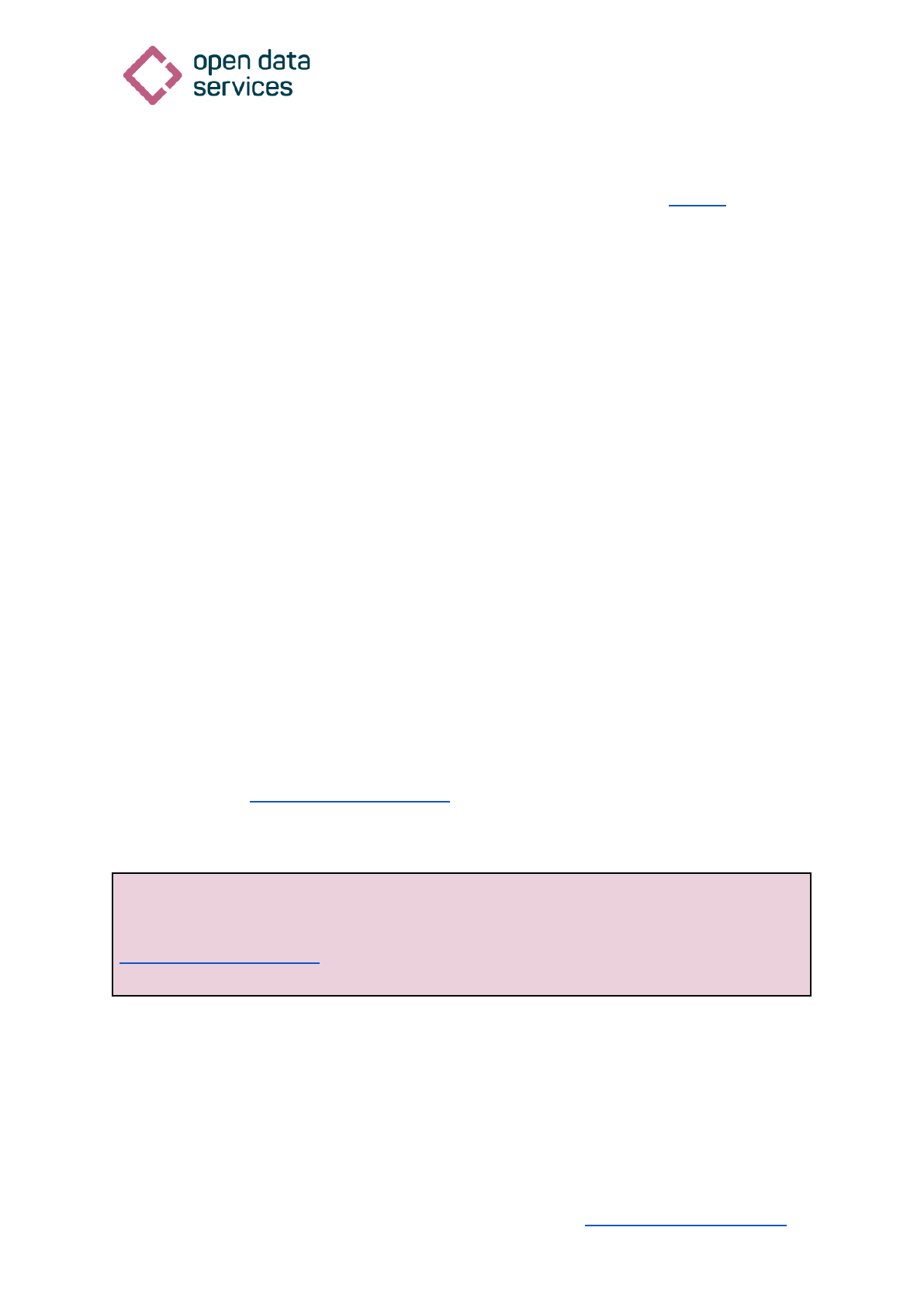
Risk Data Library Standard
Technical review report
● Potential code values are listed in field descriptions, e.g.
anyOf.vulnerability.model.f_relationship.
Where a field must take a value from a specific set of codes use a codelist to specify
these rather than list them in the field description.
● Some schema descriptions include format specifications, e.g.
anyOf.hazard.event_set.time_start.description = “The time at which the
modelled scenario(s) starts [ISO 8601 format]”
If the value of the field must be provided in a specific format the format schema
property should be used.
● common.resources.epsg appears to match the documented schema attribute
Reference coordinate system with a Type of CRS EPSG, but it is not specified that
the coordinate system used must be taken from the EPSG. Suggest either changing
this to a more neutral field name, e.g. reference_coordinate_system OR
specifying in the documentation and schema that EPSG codes must be used.
● There are typos in numerous field names, e.g.
anyOf.hazard.event.occurence_time_start should be
anyOf.hazard.event.occurrence_time_start.
● Abbreviations and contractions in field titles should be avoided, e.g.
anyOf.vulnerability.model.val_type would be better as
anyOf.vulnerability.model.value_type and
anyOf.vulnerability.model.imt would be better as
anyOf.vulnerability.model.intensity_measure_unit
Many of these issues can all be addressed and avoided in future through reference to a style
guide such as the OCDS schema style guide when reviewing and authoring field names and
descriptions.
Recommendations
Review and rewrite field names and descriptions following a style guide such as the
OCDS schema style guide.
Object identifiers
This subsection documents our assessment of the use of object identifiers in the schema
against best practices.
24
Open Data Services Co-operative Limited is a company limited by shares, operated as a Workers' Co-operative |
Registered in England. Company number: 09506232 | Registered address: 1st Floor, Holyoake House, Hanover
Street, Manchester, Greater Manchester, M60 0AS | Correspondence to [email protected]
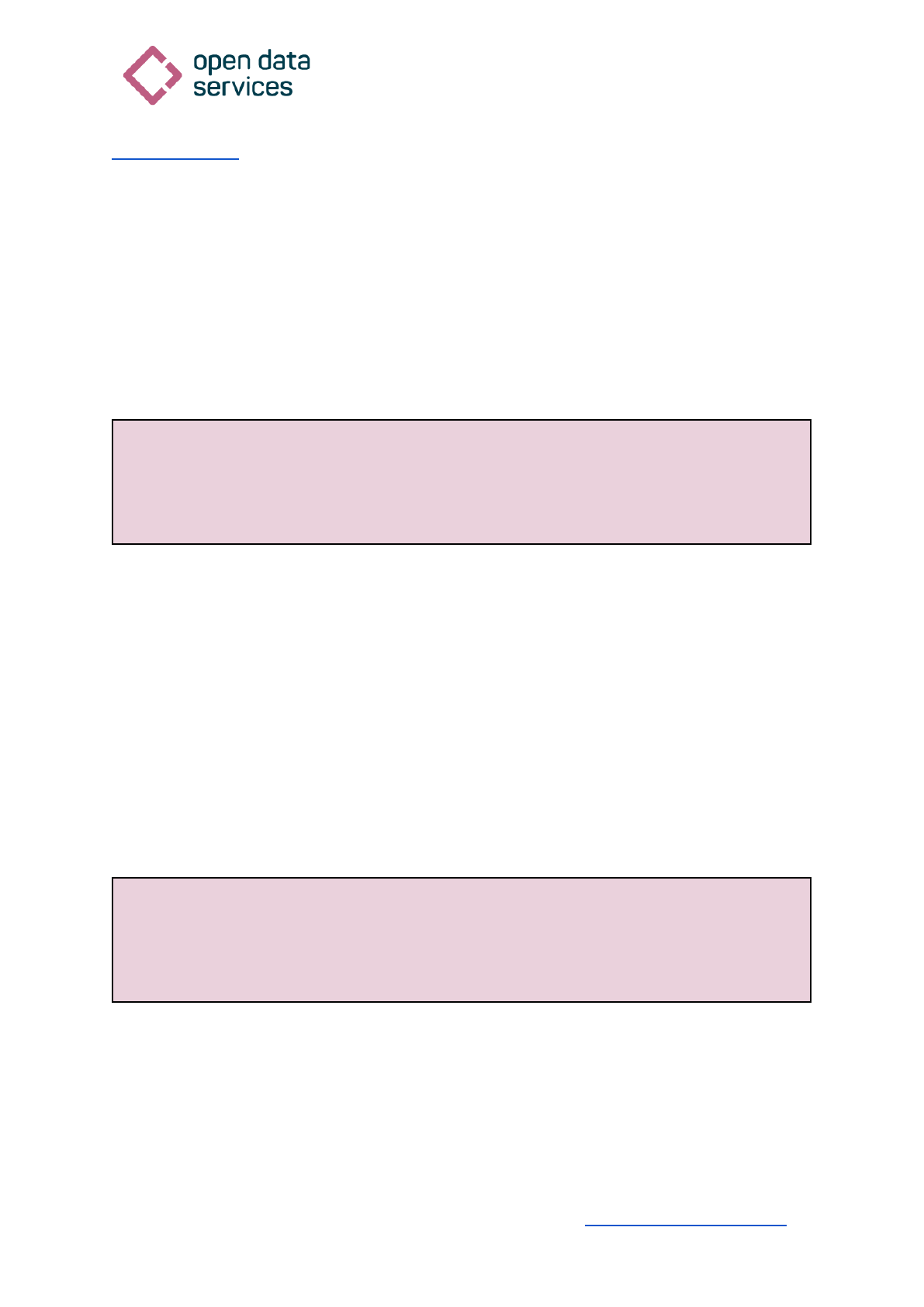
Risk Data Library Standard
Technical review report
Object identifiers help to ensure that separate objects within arrays remain clearly unique
when the data is flattened.
The RDLS schema contains two arrays, common.resources and
anyOf.hazard.geo_area. Neither of these arrays contain a unique object identifier field.
This would be a particularly important addition for the common.resources object that
contains the details of the individual datafiles described by the rest of the RDLS. The
required properties of this object, name, format, epsg and url might form a unique
combination but the inclusion of a unique object identifier for each file, e.g. id, would
remove the risk of conflating files on flattening of the data.
Recommendations
Add object identifiers to the common.resources array and consider adding them to the
anyOf.hazard.geo_area array.
Links to external standards and taxonomies
This subsection documents our assessment of the links between the RDLS schema and
external standards and taxonomies.
The RDLS schema does not explicitly link to any external standards or taxonomies.
● The documentation lists a number of suggested and recommended taxonomies, e.g.
GED4ALL, but none that are required.
● ISO 8601 format is mentioned in the description of a number of time related fields but
this is not enforced by the schema.
● common_iso appears to be a list of country codes taken from ISO 3166-1 a3 but this
isn’t fully specified with both fields that reference this definition just referring to either
“ISO codes(s)...” or “ISOa3 list of countries…”.
Recommendations
Where an external standard or taxonomy is required explicitly state this in the
documentation and schema.
Technical considerations
This section documents our assessment of the technical aspects of the RDLS schema
against best practices and makes recommendations for improvements.
25
Open Data Services Co-operative Limited is a company limited by shares, operated as a Workers' Co-operative |
Registered in England. Company number: 09506232 | Registered address: 1st Floor, Holyoake House, Hanover
Street, Manchester, Greater Manchester, M60 0AS | Correspondence to [email protected]
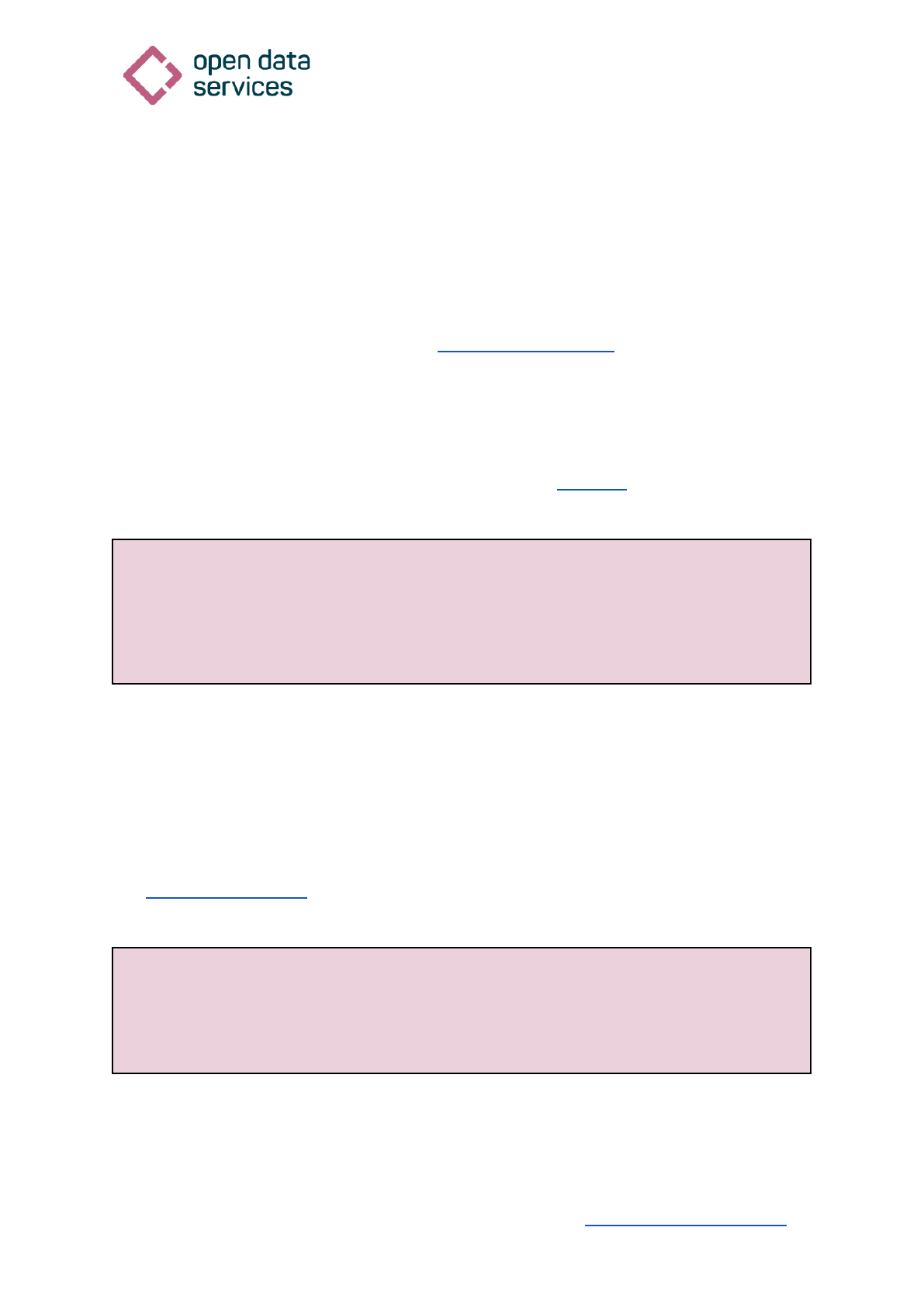
Risk Data Library Standard
Technical review report
JSON schema version and extensions
This subsection documents our assessment of the schema’s use of JSON schema versions
and extensions.
JSON schema is a declarative language used to validate your own JSON documents. In the
case of an open data standard this document is both the standard schema and any files
declared as obeying this standard. The use of JSON schema is in the validation it enables.
The RDLS schema declares the use of the 2020-12 JSON schema, the most up-to-date
version of JSON schema. However the schema does not validate against the 2020-12 JSON
schema due to the use of definitions, a property that has been deprecated in this version
of JSON schema in favour of defs.
The RDLS schema does not use any JSON schema extensions. Extensions are available
that could improve the usability of the standard as noted in Codelists.
Recommendations
Ensure rdl_schema_0_1.json validates against the declared version of JSON schema
either by updating the schema properties used, or declaring an older version of JSON
schema.
Range of implementation approaches
This subsection documents our assessment of the range of implementation approaches
available and possible for using the schema.
It is unclear from the existing materials in both the GitHub repositories and the
documentation what implementation approaches are available.
The Hazard data package documents an implementation approach for Hazard data only that
uses a slightly altered version of part of the RDLS schema.
Recommendations
Establish and document the implementation approaches that will be supported by the
standard based upon user needs.
26
Open Data Services Co-operative Limited is a company limited by shares, operated as a Workers' Co-operative |
Registered in England. Company number: 09506232 | Registered address: 1st Floor, Holyoake House, Hanover
Street, Manchester, Greater Manchester, M60 0AS | Correspondence to [email protected]
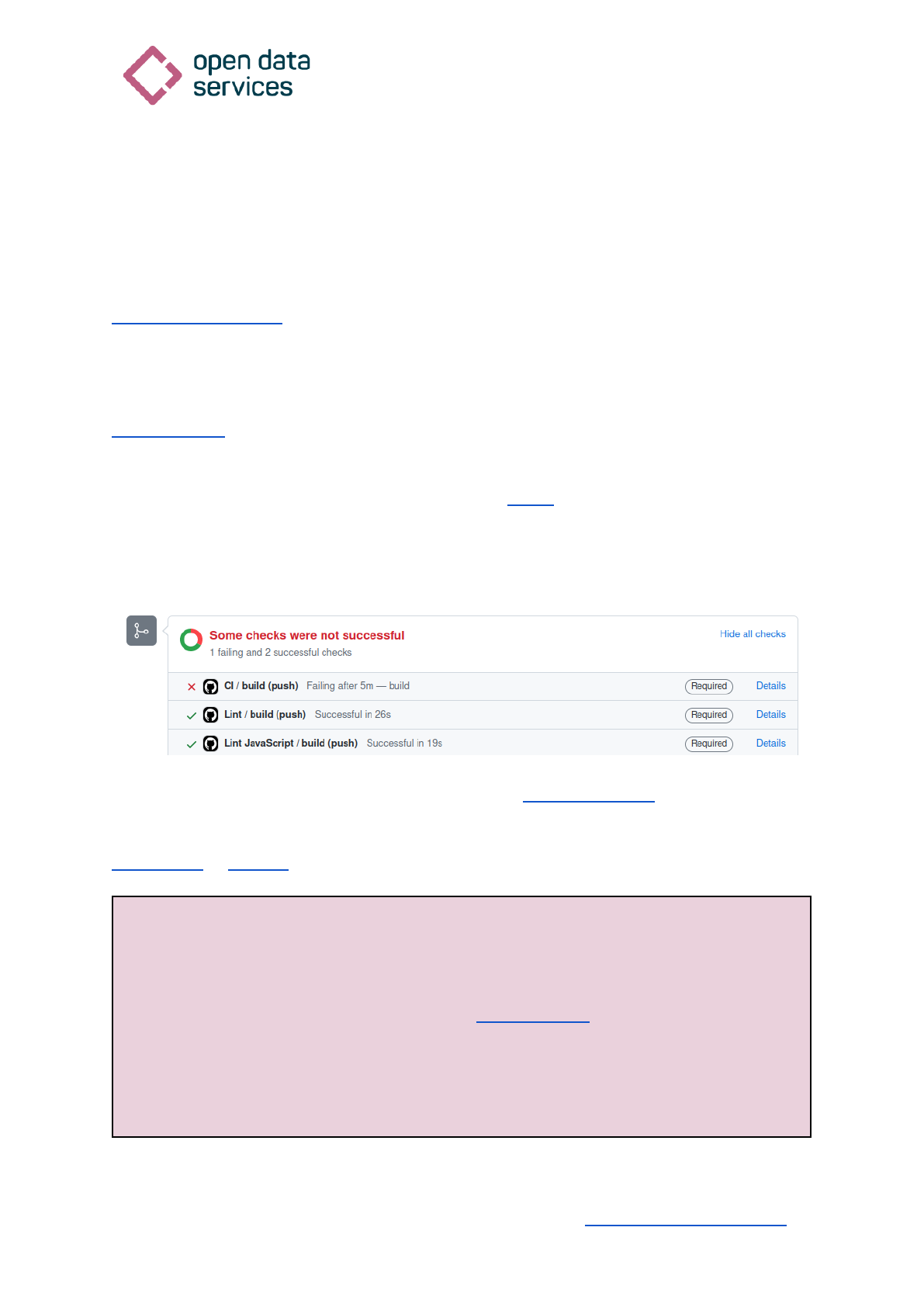
Risk Data Library Standard
Technical review report
Change Management and version control
This section documents our assessment of the approach to tracking and managing changes
to RDLS, and provides recommendations for improvements.
Continuous integration and automated tests
Continuous integration (CI) is a software practice that requires frequently committing code to
a shared repository and triggering automated build and tests. In the context of a data
standard, CI and automated tests help to ensure that changes do not invalidate the schema
or cause the documentation build to fail, amongst other checks.
GitHub Actions provides a CI platform that allows you to automate your build, test, and
deployment pipeline. You can create workflows that build and test every pull request to your
repository, or deploy merged pull requests to production. Workflows can run tests directly or
using external testing tools and frameworks such as pytest.
GitHub Actions runs your CI tests and provides the results of each test in the pull request, so
you can see whether the change in your branch introduces an error:
For more information on the use of status checks, see branch protection.
We did not find any evidence of continuous integration or automated tests for the
rdl-standard or rdl-docs repositories.
Recommendations
Use GitHub Actions to set up continuous integration for all commits and pull requests with
at least the following checks:
● Check that the RDLS schema is a valid JSON Schema
● Check that the RDLS documentation site builds successfully
● Check that all schema definitions and codelists are included in the documentation
site
27
Open Data Services Co-operative Limited is a company limited by shares, operated as a Workers' Co-operative |
Registered in England. Company number: 09506232 | Registered address: 1st Floor, Holyoake House, Hanover
Street, Manchester, Greater Manchester, M60 0AS | Correspondence to [email protected]
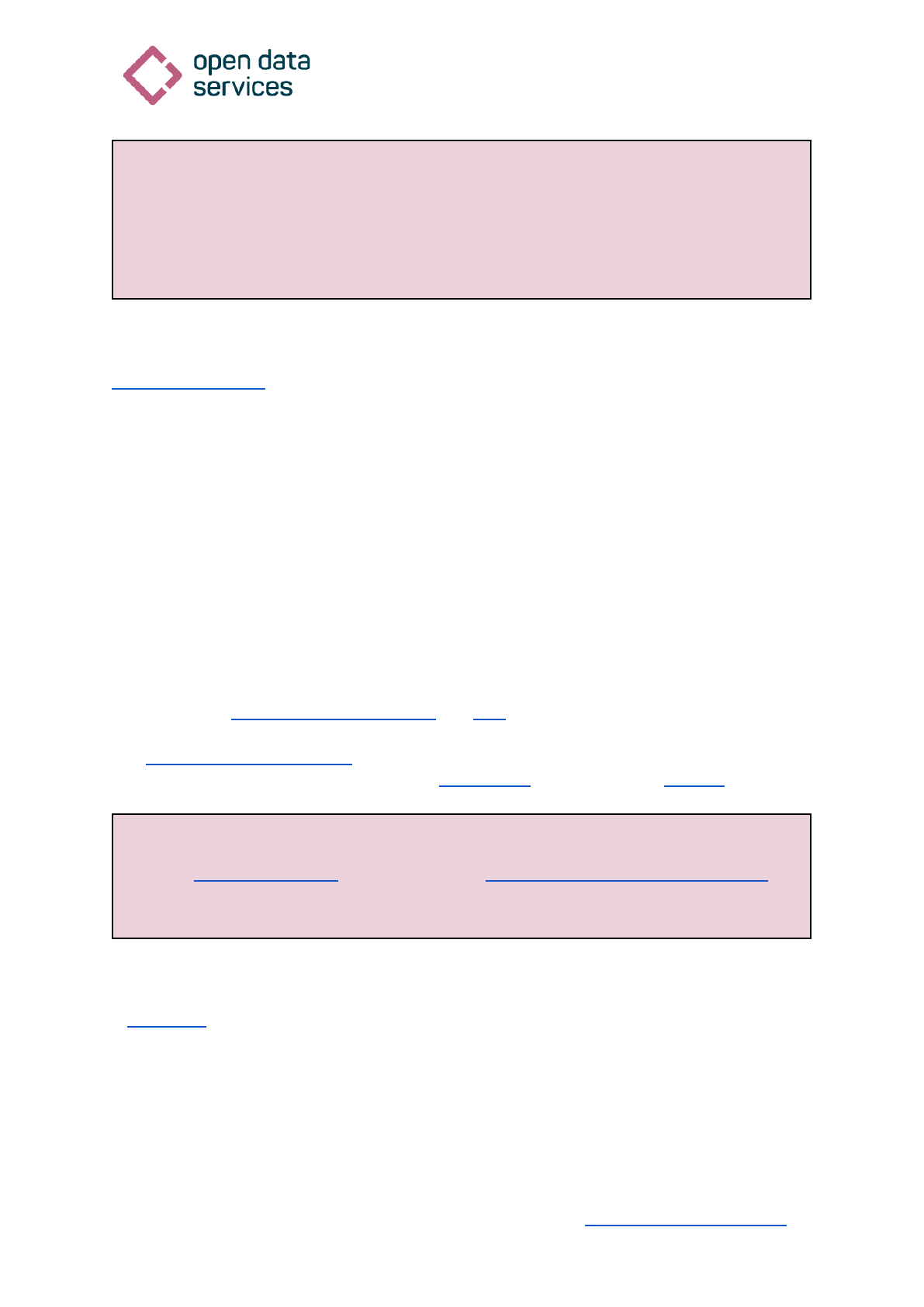
Risk Data Library Standard
Technical review report
● Check that example files are valid against the RDLS schema
● Check that JSON files are valid and correctly formatted
● Check that CSV files are valid and correctly formatted
● Check that Markdown files are valid and correctly formatted
Semantic versioning
Semantic versioning is a simple set of rules and requirements that dictate how version
numbers are assigned in order to convey meaning about what has been modified from one
version to the next. In summary, given a MAJOR.MINOR.PATCH version number, increment
the:
1. MAJOR version when you make backwards incompatible changes
2. MINOR version when you add functionality in a backwards compatible manner
3. PATCH version when you make backwards compatible bug fixes
MAJOR version zero (0.Y.X) is for initial development and means that anything may change
at any time.
In the context of a data standard, semantic versioning ensures that, for each release of the
standard, data publishers and users understand whether they need to update their
processes and tools. For more information on the practical implementation of semantic
versioning, see branches and pull requests and tags.
The governance documentation mentions semantic versioning, however there are no explicit
version numbers associated with either the rdl-standard repository or the rdl-docs repository.
Recommendations
Once the project repositories are integrated and normative and non-normative content are
clearly separated, agree an initial version number for the RDLS schema and
documentation and implement semantic versioning for future changes.
Changelog
A changelog is a file which contains a curated, chronologically ordered list of notable
changes for each version of a project. Keeping a changelog makes it easier for users and
contributors to see precisely what notable changes have been made between each version
of the project.
28
Open Data Services Co-operative Limited is a company limited by shares, operated as a Workers' Co-operative |
Registered in England. Company number: 09506232 | Registered address: 1st Floor, Holyoake House, Hanover
Street, Manchester, Greater Manchester, M60 0AS | Correspondence to [email protected]
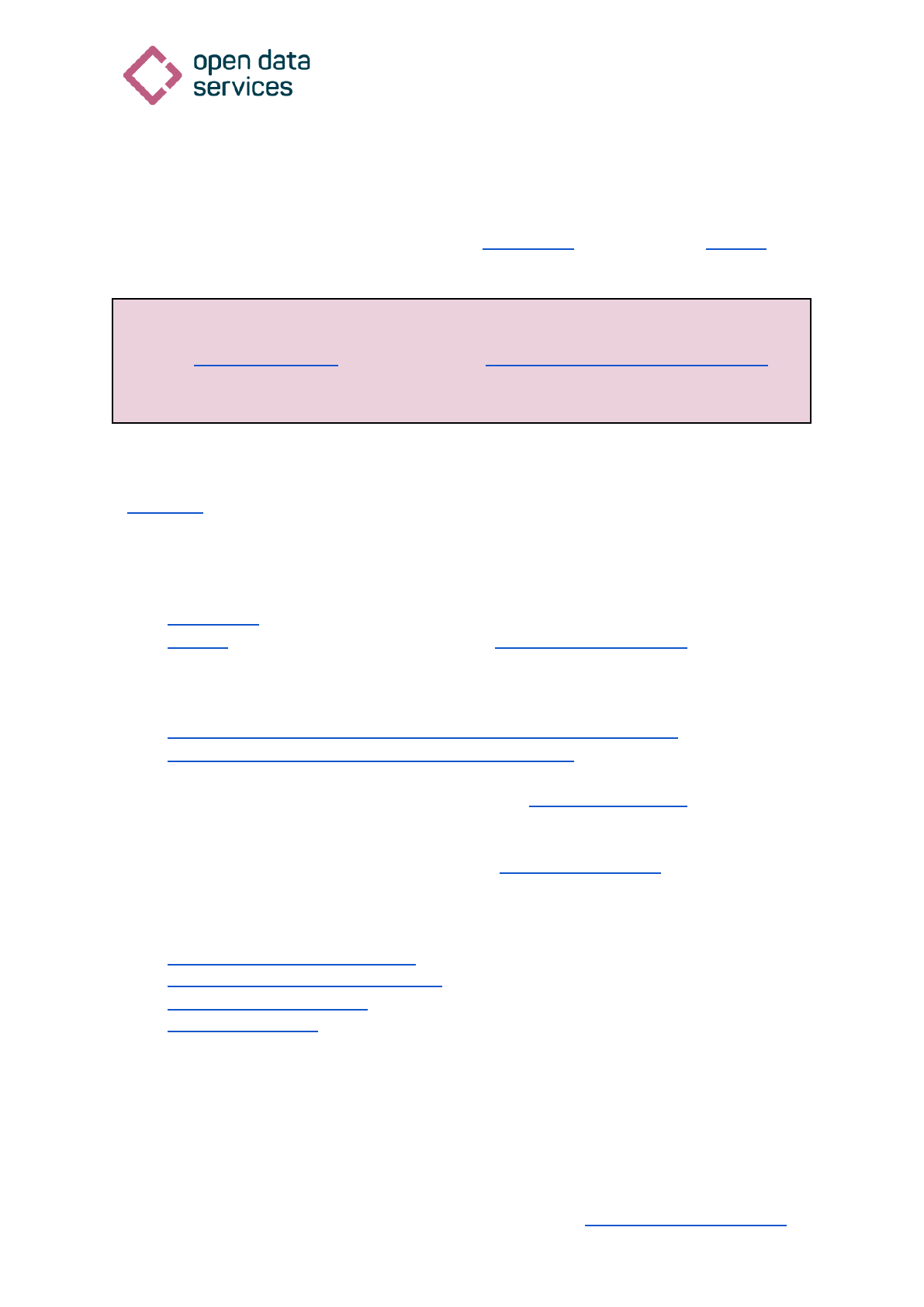
Risk Data Library Standard
Technical review report
In the context of a data standard, keeping a changelog ensures that, for each release of the
standard, data publishers and users have the information that they need to update their tools
and processes.
There is no changelog associated with either the rdl-standard repository or the rdl-docs
repository.
Recommendations
Once the project repositories are integrated and normative and non-normative content are
clearly separated, document a changelog and keep it up to date for all future changes.
Repositories
A repository contains all of the files for a project and each file's revision history. You can
discuss and manage a project within its repository.
The RDLS schema and documentation is split across two repositories:
● rdl-standard is used to coordinate the development of the RDLS data model
● rdl-docs contains the files used to build the RDLS documentation site
Each repository contains a copy of the RDLS schema:
● rdl-standard/blob/main/specs/DDH_compliant/rdl_schema_0_1.json
● rdl-docs/blob/main/docs/schema/rdl_schema_0.1.json
Multiple copies of the schema is a risk to maintaining a single source of truth for the
standard.
The best practice for maintaining a SSOT, effective change management and ease of
maintenance is to manage the schema and documentation in a single repository. This is the
approach used in several other standards:
● Open Contracting Data Standard
● Beneficial Ownership Data Standard
● Open Fibre Data Standard
● 360Giving Standard
29
Open Data Services Co-operative Limited is a company limited by shares, operated as a Workers' Co-operative |
Registered in England. Company number: 09506232 | Registered address: 1st Floor, Holyoake House, Hanover
Street, Manchester, Greater Manchester, M60 0AS | Correspondence to [email protected]
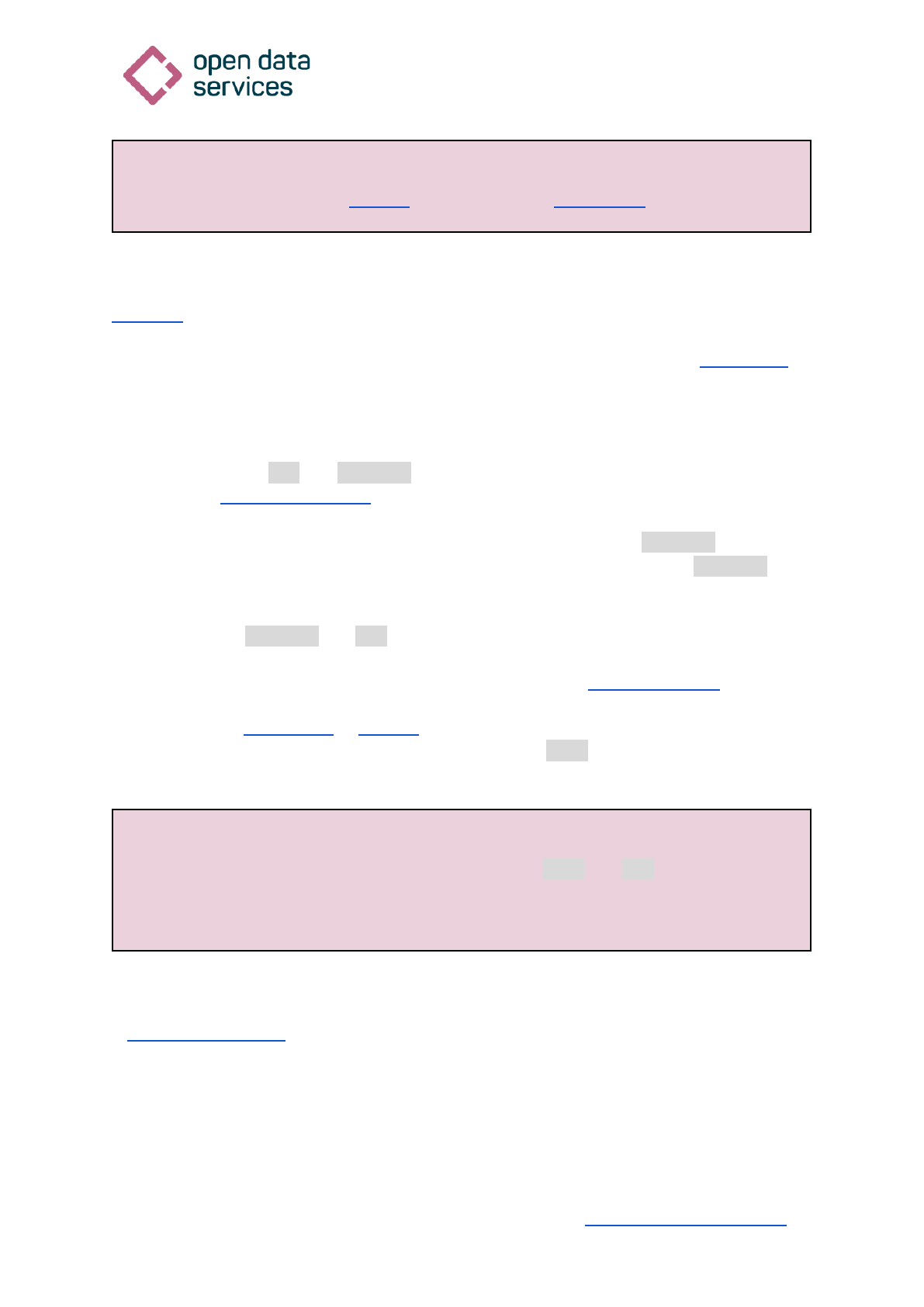
Risk Data Library Standard
Technical review report
Recommendations
Integrate the content from the rdl-docs repository into the rdl-standard repository.
Branches and pull requests
Branches allow you to develop features, fix bugs, or safely experiment with new ideas in a
contained area of your repository. Each repository has one default branch, and can have
multiple other branches. You can merge a branch into another branch using a pull request. In
the context of a data standard, branches and pull requests can be used to draft and review
changes to the schema and documentation without affecting the live version of the standard.
Best practice is to maintain separate ‘live’ and development branches for each minor version
of the standard, e.g. 1.0 and 1.0-dev. For more information on the meaning of version
numbers, see semantic versioning.
To propose a change, a collaborator should create a new branch from 1.0-dev, update the
schema or documentation, and open a pull request to merge the change into 1.0-dev.
To release changes to the live version of the standard, a maintainer should open a pull
request to merge 1.0-dev into 1.0.
For more information on requiring the use of pull requests, see branch protection.
We reviewed the rdl-standard or rdl-docs repositories and noted that there is no separation
of live and development branches. Each repository has a main branch with limited use of
branches and pull requests for feature development.
Recommendations
Until semantic versioning is adopted, maintain separate main and dev branches. Once
semantic versioning is adopted, maintain separate live and development branches for
each minor version of the standard.
Pull request template
A pull request template is a file whose contents are automatically added to the description of
pull requests. You can use a pull request template to standardise the information that
collaborators include when they open a pull request and to ensure that pull requests comply
with contributor guidelines. In the context of a data standard, a pull request template can
30
Open Data Services Co-operative Limited is a company limited by shares, operated as a Workers' Co-operative |
Registered in England. Company number: 09506232 | Registered address: 1st Floor, Holyoake House, Hanover
Street, Manchester, Greater Manchester, M60 0AS | Correspondence to [email protected]
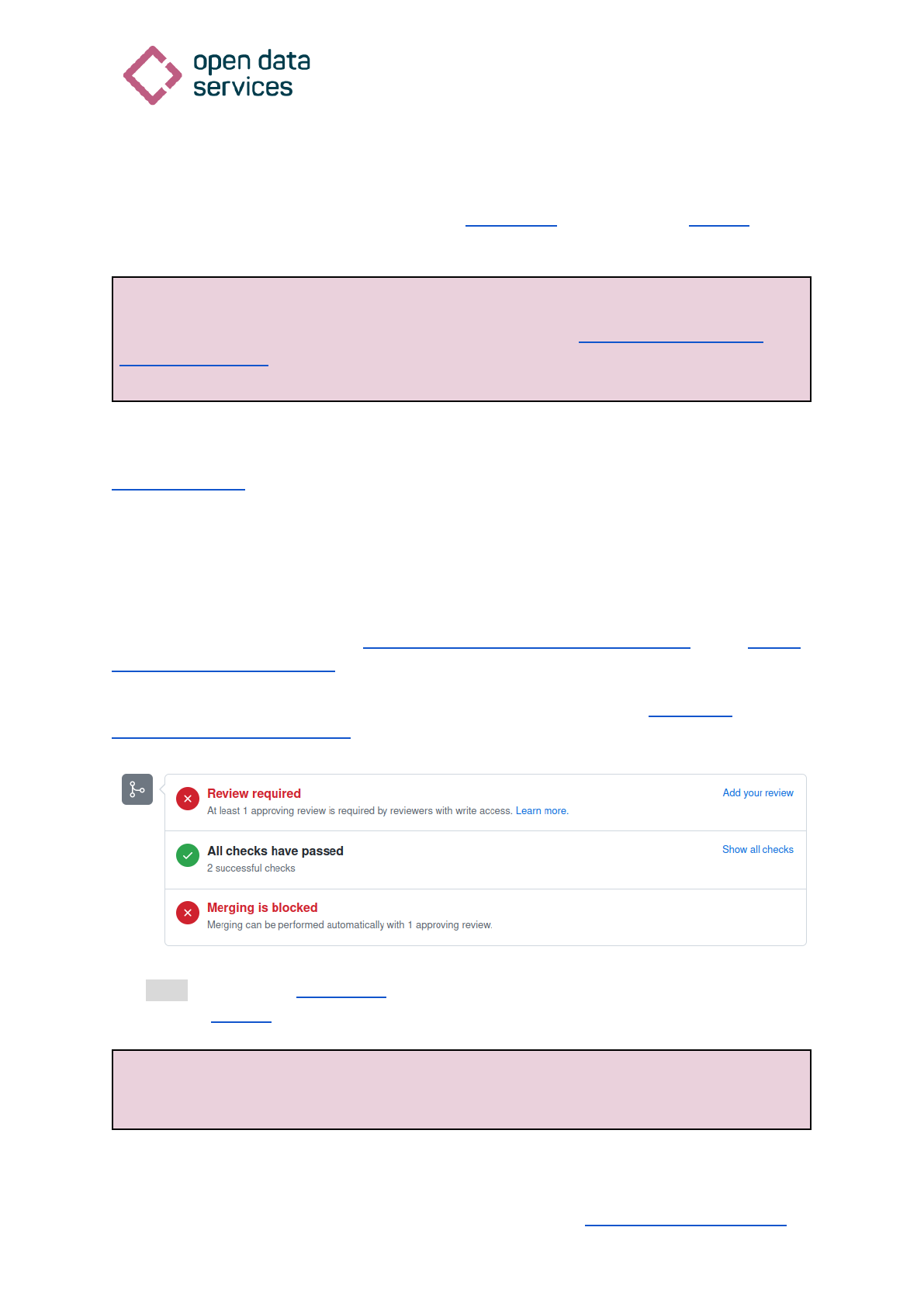
Risk Data Library Standard
Technical review report
help ensure that the changelog is kept up to date and that the documentation is kept in-sync
with the schema and codelists.
There is no pull request template for either the rdl-standard repository or the rdl-docs
repository.
Recommendations
Document a pull request template based on the examples in Appendix 1: Pull request
template examples.
Branch protection
Branch protection protects important branches by defining whether collaborators can push
directly to the branch and by setting requirements for any pushes to the branch, including
merging pull requests. In the context of a data standard, branch protection ensures that
collaborators cannot make changes to the schema and documentation without appropriate
review and checks.
Best practice is to protect the live and development branches to prevent collaborators from
pushing directly to the branch, to require pull request reviews before merging and to require
status checks before merging. Pull request reviews allow collaborators to comment on the
changes proposed in pull requests, approve the changes, or request further changes before
the pull request is merged. For more information on status checks, see continuous
integration and automated tests.
The main branch in the rdl-standard repository is not protected and it appears to be the
same for the rdl-docs repository.
Recommendations
Protect the live and development branches in each repository, require pull request reviews
31
Open Data Services Co-operative Limited is a company limited by shares, operated as a Workers' Co-operative |
Registered in England. Company number: 09506232 | Registered address: 1st Floor, Holyoake House, Hanover
Street, Manchester, Greater Manchester, M60 0AS | Correspondence to [email protected]
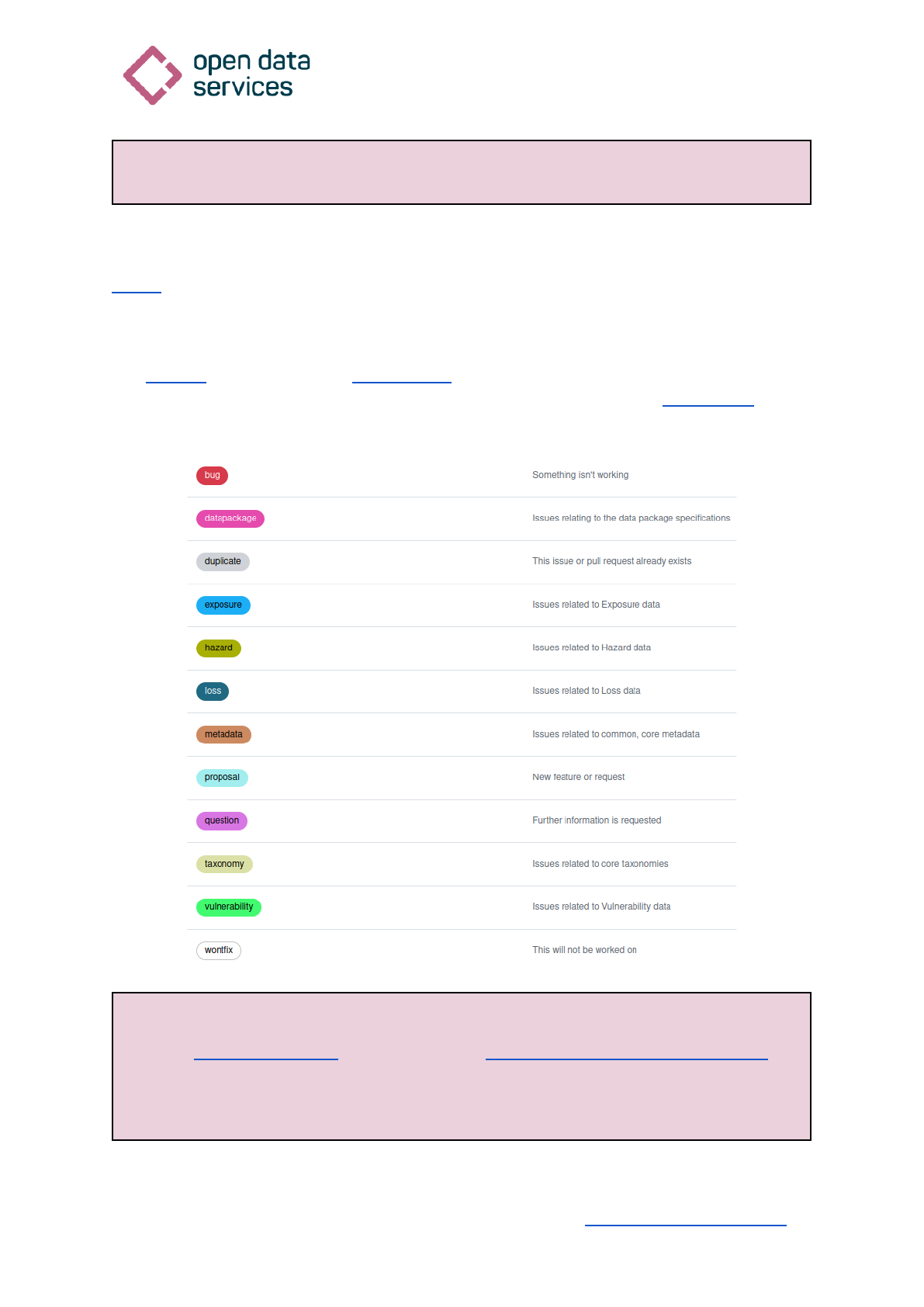
Risk Data Library Standard
Technical review report
before merging and require status checks before merging.
Issue, discussion and pull request labels
Labels are used to categorise issues, pull requests and discussions. In the context of a data
standard, labels can be used to categorise whether issues relate to the normative content,
non-normative content or the documentation build process.
The rdl-docs repository has the default labels that are added to all new GitHub repositories.
However, issues are not categorised against the labels. Issues in the the rdl-standard
repository are categorised against the following labels:
Recommendations
Once the project repositories are integrated and normative and non-normative content is
clearly separated, add labels to distinguish issues related to:
● Normative content
32
Open Data Services Co-operative Limited is a company limited by shares, operated as a Workers' Co-operative |
Registered in England. Company number: 09506232 | Registered address: 1st Floor, Holyoake House, Hanover
Street, Manchester, Greater Manchester, M60 0AS | Correspondence to [email protected]

Risk Data Library Standard
Technical review report
● Non-normative content
● The documentation build process
Release tags
Git tags are used to mark a specific point in your repository’s history, typically to mark the
release of a new version. In the context of a data standard, tags can be used to refer back to
earlier versions of the schema and documentation.
The best practice is to tag each major, minor and patch version release. It is not necessary
to tag the release of updates to non-normative content. For more information on the meaning
of version numbers, see semantic versioning.
There are no tags in either the rdl-standard repository or the rdl-docs repository.
Recommendations
Once semantic versioning is implemented, tag each major, minor and patch version.
Development
This section documents our assessment of the documentation and methodology in use for
the development of the RDLS against best practices, and provides recommendations for
improvements.
Build and deploy process
Build and deploy is the process by which source code is compiled into executable software
and deployed to a testing or production environment. In the context of a data standard, the
process involves building the HTML version of the documentation site from the source files
and making it available online.
The build process for the RDLS documentation currently takes place locally on users’
machine with the built documentation deployed from the users’ local machines to GitHub
Pages.
A key benefit of automating the build and deploy process is support for multiple versions,
including online previews of development branches for testing and review purposes.
Development branches can be made available at public URLs, but can be hidden from the
version switcher in the live version of the documentation site, e.g.
33
Open Data Services Co-operative Limited is a company limited by shares, operated as a Workers' Co-operative |
Registered in England. Company number: 09506232 | Registered address: 1st Floor, Holyoake House, Hanover
Street, Manchester, Greater Manchester, M60 0AS | Correspondence to [email protected]
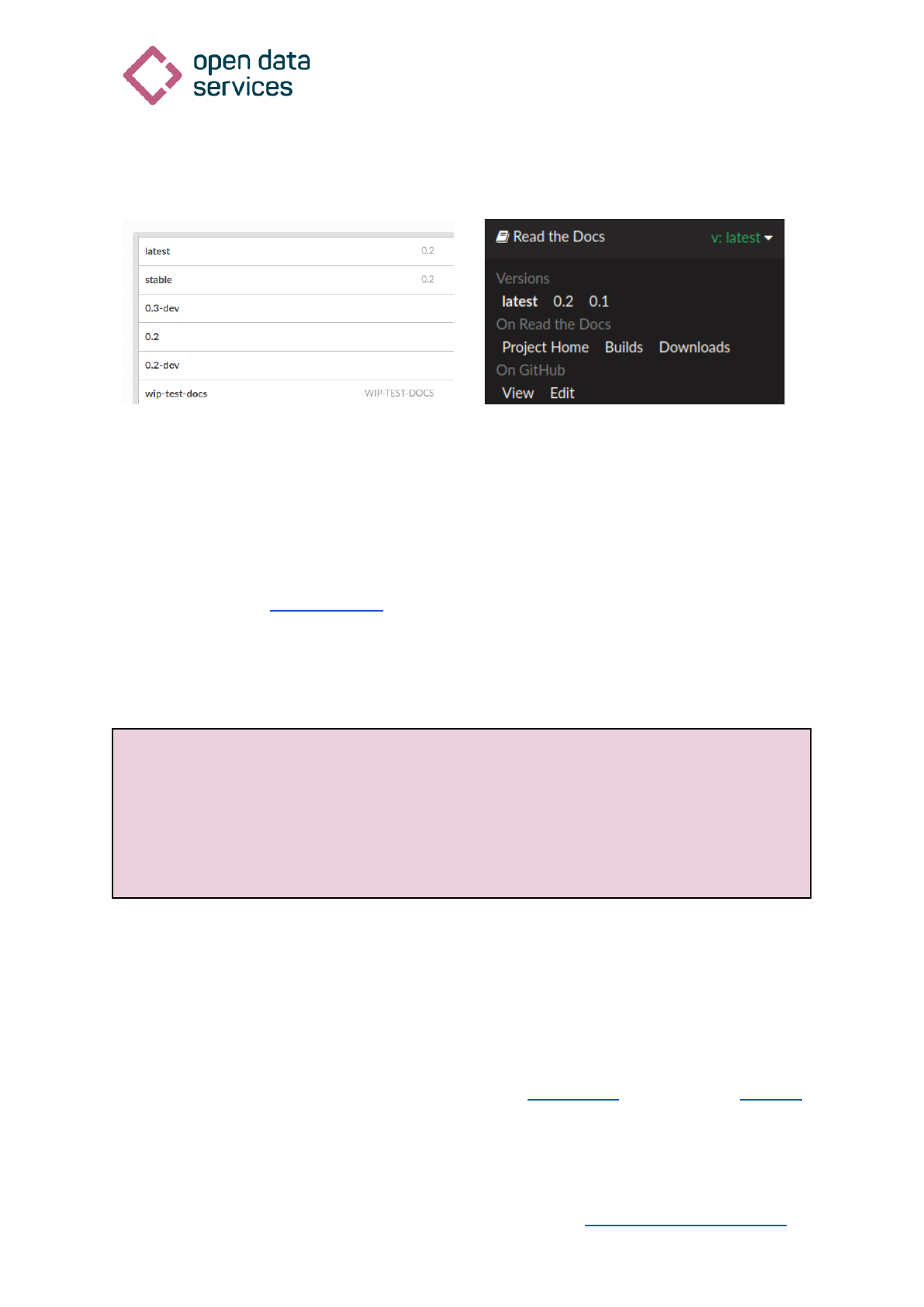
Risk Data Library Standard
Technical review report
Active versions, including development branches.
Version switcher in live documentation, showing only
released versions.
Other benefits include ensuring that builds are reproducible outside of users’ local machines
and the option to rollback to an earlier build in the event of unforeseen problems with a
release.
Options for automation include using GitHub Actions to deploy to GitHub pages or a
web-server, or using Read the Docs to build, deploy and host documentation.
An important consideration when deploying multiple versions is to substitute version and
branch names in hardcoded URLs so that users working with online previews of
development branches can access the correct version of resources such as schema files.
Recommendations
● Use Read the Docs to automate the build, deploy and hosting of the RDLS
documentation site.
● Implement version and branch name substitution for development branches.
Development environment
A development environment in software and web development is a workspace for
developers to make changes without breaking anything in a live environment. In the context
of a data standard, a development environment is the collection of tools and processes used
by maintainers and collaborators to edit, test and preview the schema and documentation.
There is no development environment specified for the rdl-standard repository. The rdl-docs
repository contains a readme file that details the requirements and dependencies for
34
Open Data Services Co-operative Limited is a company limited by shares, operated as a Workers' Co-operative |
Registered in England. Company number: 09506232 | Registered address: 1st Floor, Holyoake House, Hanover
Street, Manchester, Greater Manchester, M60 0AS | Correspondence to [email protected]
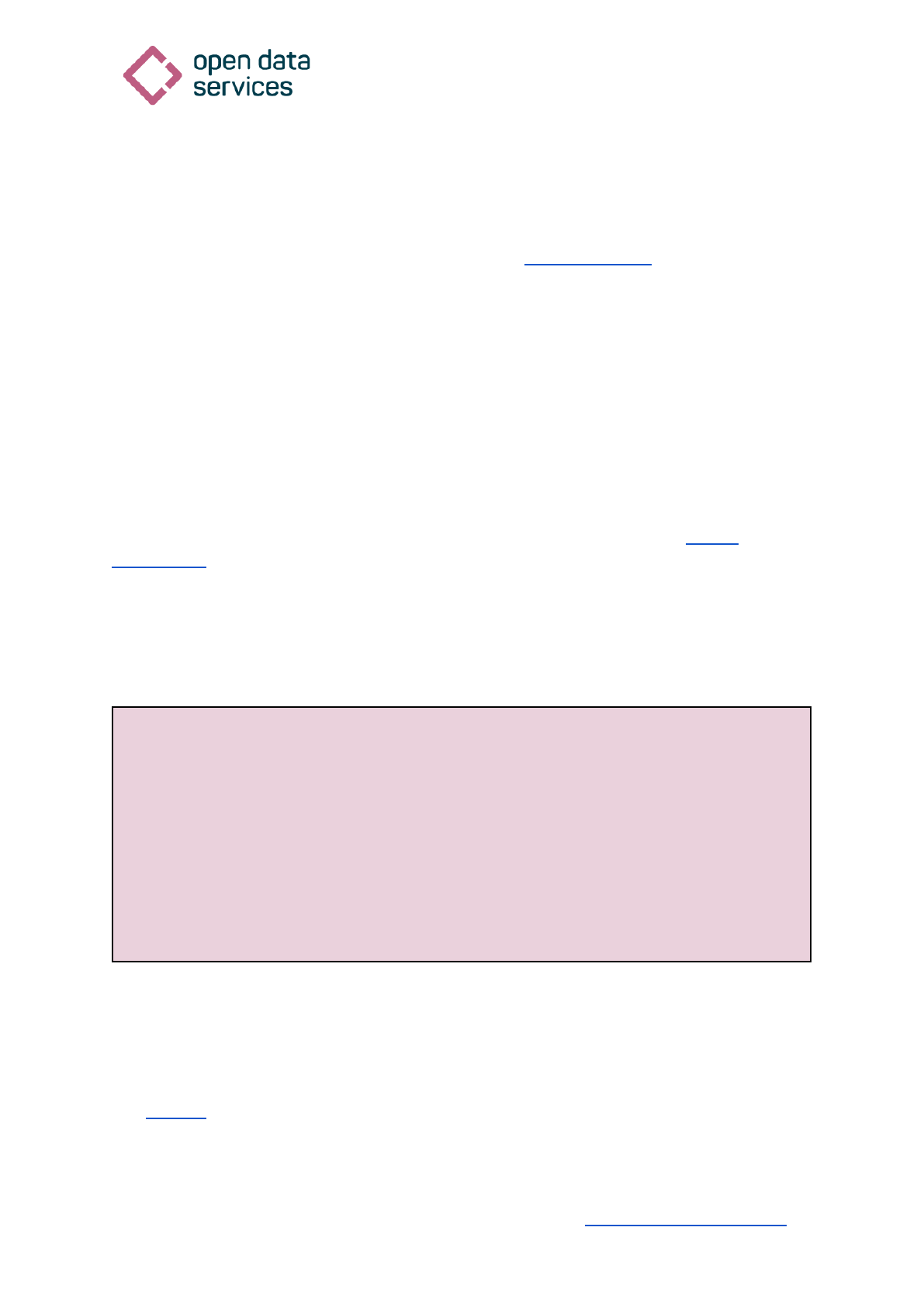
Risk Data Library Standard
Technical review report
building, previewing and deploying the documentation. However, there are issues with the
instructions as documented:
● How to create and activate a Python virtual environment is not documented
● Python dependencies are not documented in a requirements file and therefore
require manual installation
● Python dependencies and are not pinned to specific versions therefore the process
for building and deploying the documentation may not be reproducible
More broadly, managing virtual environments and dependencies commonly causes issues
for collaborators and maintainers, even for users experienced with technical matters.
Similarly, less experienced collaborators may not have a code editor with features
appropriate for standard development, e.g. syntax highlighting, auto-indentation, JSON
validation, linting and formatting etc.
An alternative to leaving each collaborator to maintain their own development environment
on their local machine is to provide a hosted development environment, like GitHub
Codespaces. Each codespace runs on a virtual machine hosted by GitHub, addressing
issues with managing virtual environments and dependencies. Collaborators can connect
using the VS Code Browser in Chrome, Safari or Edge, or using Visual Studio Code,
addressing issues with inappropriate code editing tools. You can commit configuration files to
your repository to create a repeatable codespace configuration for all collaborators and
maintainers of your project.
Recommendations
● Document how to create and activate a Python virtual environment
● Document Python dependencies in a requirements file
● Pin Python dependencies to specific versions to ensure documentation builds are
reproducible
● Consider configuring a hosted development environment using GitHub
Codespaces
Developer documentation
Developer documentation for a data standard explains how to develop and maintain the
schema and documentation for the standard.
The rdl-docs repository contains a brief readme file that explains:
35
Open Data Services Co-operative Limited is a company limited by shares, operated as a Workers' Co-operative |
Registered in England. Company number: 09506232 | Registered address: 1st Floor, Holyoake House, Hanover
Street, Manchester, Greater Manchester, M60 0AS | Correspondence to [email protected]

Risk Data Library Standard
Technical review report
● how to install the necessary Python dependencies
● the locations of the written content, the theme and the website configuration
● how to build, preview and deploy the documentation
The rdl-standard repository contains high-level contributor documentation aimed at external
contributors, that describes how to propose changes.
Whilst the above documentation is certainly useful it is not comprehensive. Providing more
comprehensive developer documentation has many benefits:
● Greater consistency in the schema and documentation
● Quicker onboarding for new maintainers and collaborators
● Improved resilience to changes in project staff
● Less time spent on troubleshooting issues
A common approach in other data standards is to document a development handbook, for
example:
● Open Contracting Data Standard Development Handbook
● Beneficial Ownership Data Standard Development Handbook
● Open Fibre Data Standard Development Handbook
These handbooks typically cover at least the following topics:
● Style guides describing conventions for writing schema and documentation, GitHub
issues, and associated presentations and documents
● The structure and configuration of the standard repository, including the locations of
key files and the usage of branches, tags and issues etc.
● Process documentation, covering how to:
○ Propose changes
○ Review changes
○ Perform periodic maintenance tasks
○ Build the documentation
○ Run tests
○ Deploy the documentation
36
Open Data Services Co-operative Limited is a company limited by shares, operated as a Workers' Co-operative |
Registered in England. Company number: 09506232 | Registered address: 1st Floor, Holyoake House, Hanover
Street, Manchester, Greater Manchester, M60 0AS | Correspondence to [email protected]
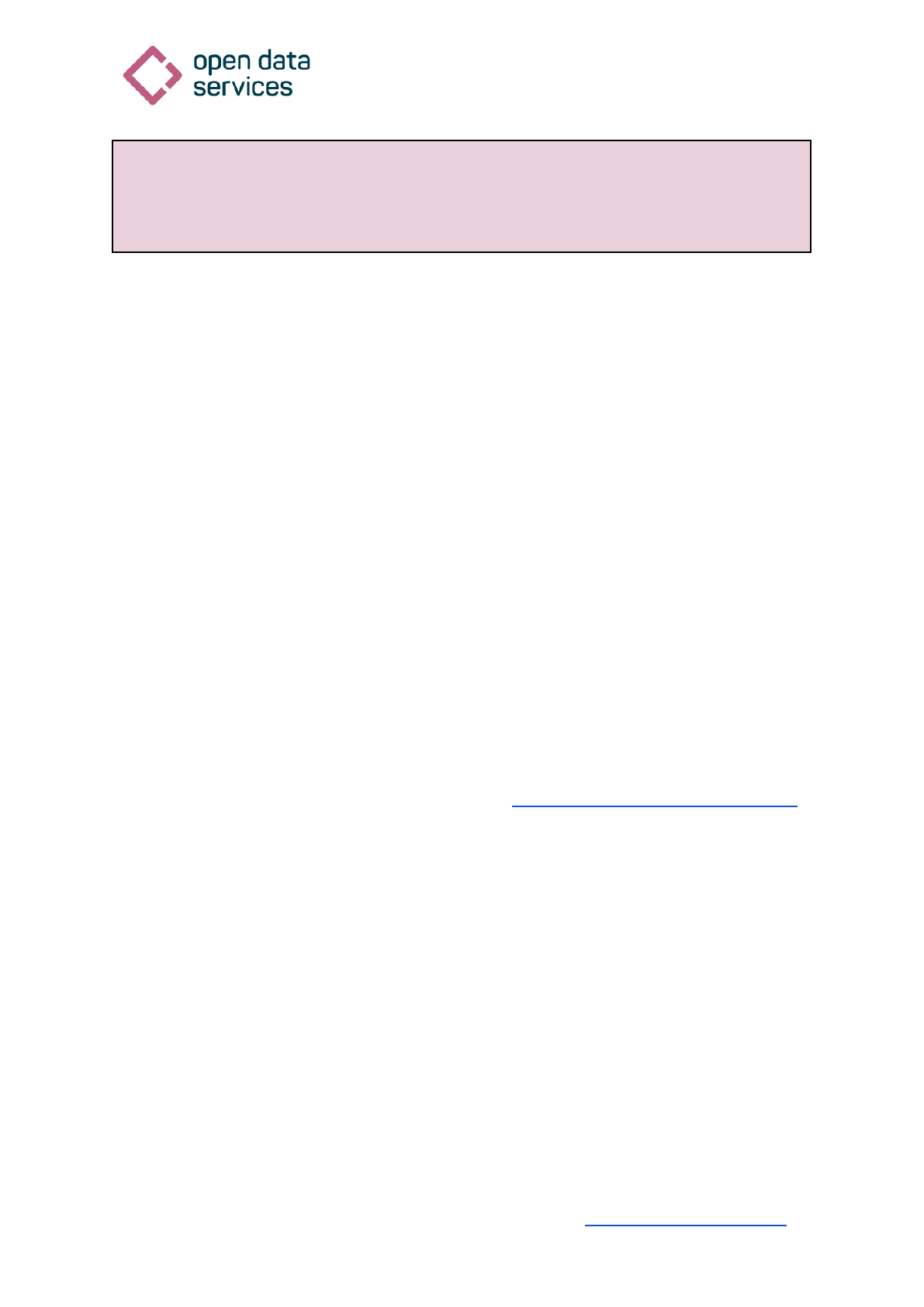
Risk Data Library Standard
Technical review report
Recommendations
Document a comprehensive development handbook, covering at least the topics listed
above.
Other Issues
This section documents our assessment of RDLS with respect to any other issues not
already covered in the previous sections. Best practice in standard development and
comparisons with robust and mature open data standards are used. Recommendations for
improvements are provided.
Translation
Having translations of the standard available in languages other than English can be an
important tool to encourage adoption outside of English-speaking countries. This is of mixed
importance in RDLS given the wide range of RDM data users. Academics are likely to have
English language skills, but local disaster relief agencies working in non-English speaking
countries may not. Translation and internationalisation is best done once there is a stable
release of the standard.
We have seen no evidence of support for internationalisation or translation of RDLS, but this
is typical of a standard in this stage of its development.
Once the standard is further along in its development we would be happy to explore
translation and internationalisation options but will not be describing appropriate
implementation approaches in this report. Guidance on how to approach translation and
internationalisation of a standard can be found in the Open Data Services OD4D handbook.
Tooling
Tooling is currently out of scope but a future report will make tooling recommendations.
Next steps
This section documents the recommended next steps following on from this report.
We have detailed a number of recommendations throughout this report, we will work with the
RLDS team and steering committee to agree on the priority of these recommendations.
Immediate next steps to move this work forward are:
37
Open Data Services Co-operative Limited is a company limited by shares, operated as a Workers' Co-operative |
Registered in England. Company number: 09506232 | Registered address: 1st Floor, Holyoake House, Hanover
Street, Manchester, Greater Manchester, M60 0AS | Correspondence to [email protected]
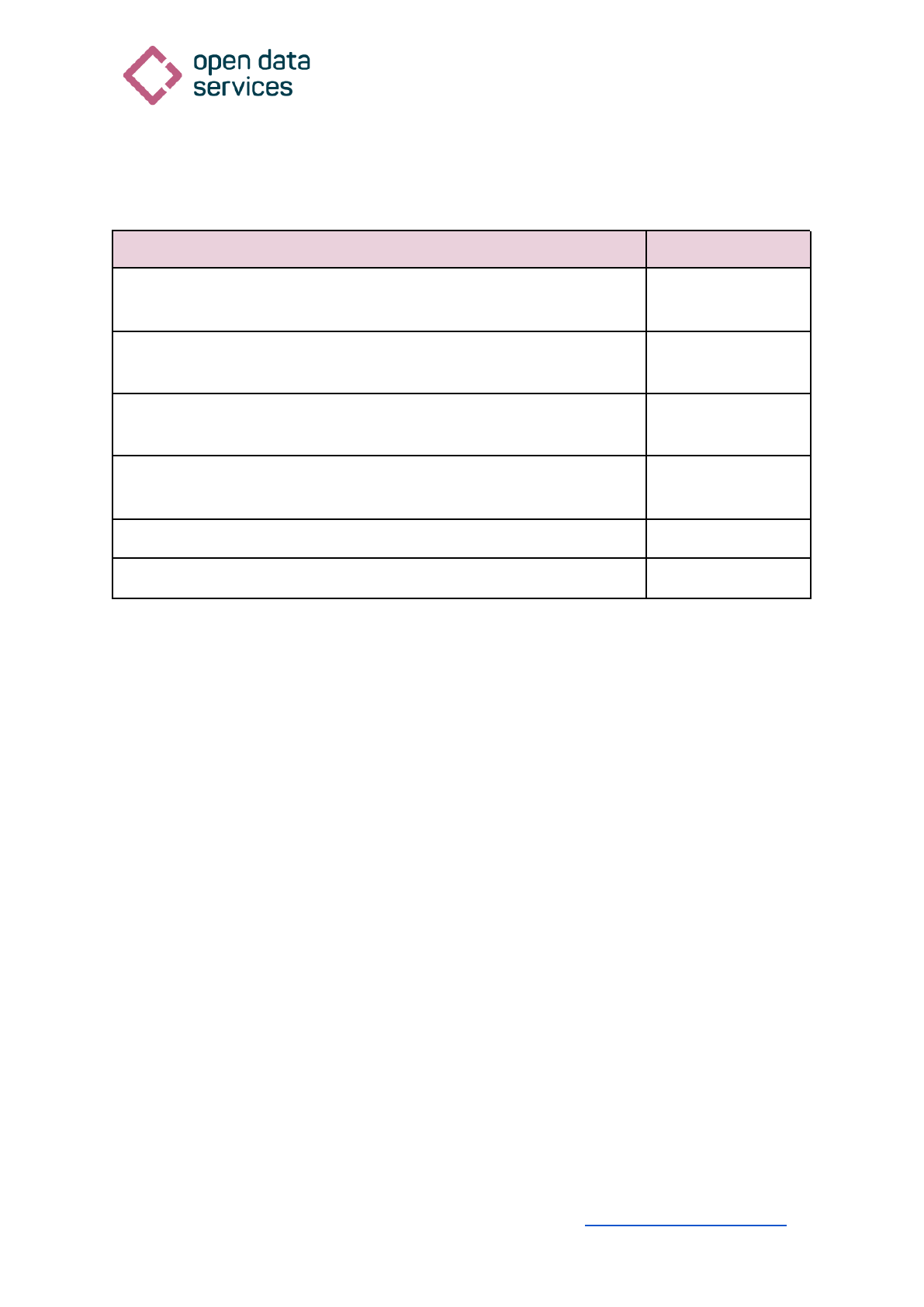
Risk Data Library Standard
Technical review report
Task
Timescale
ODS to curate a prioritised list of the recommendations within this
report with indicative timescales for each task.
End of February
2023
The steering committee and RDLS team review this report, rejecting
or accepting each recommendation.
Mid March 2023
The steering committee, the RDLS team and Open Data Services
agree on the prioritisation of the accepted recommendations.
Mid March 2023
The RDLS team and Open Data Services agree on a timetabled
work plan to implement the prioritised accepted recommendations.
April 2023
Work begins on implementation of the recommendations.
April - July 2023
Tooling recommendation report
October 2023
38
Open Data Services Co-operative Limited is a company limited by shares, operated as a Workers' Co-operative |
Registered in England. Company number: 09506232 | Registered address: 1st Floor, Holyoake House, Hanover
Street, Manchester, Greater Manchester, M60 0AS | Correspondence to [email protected]
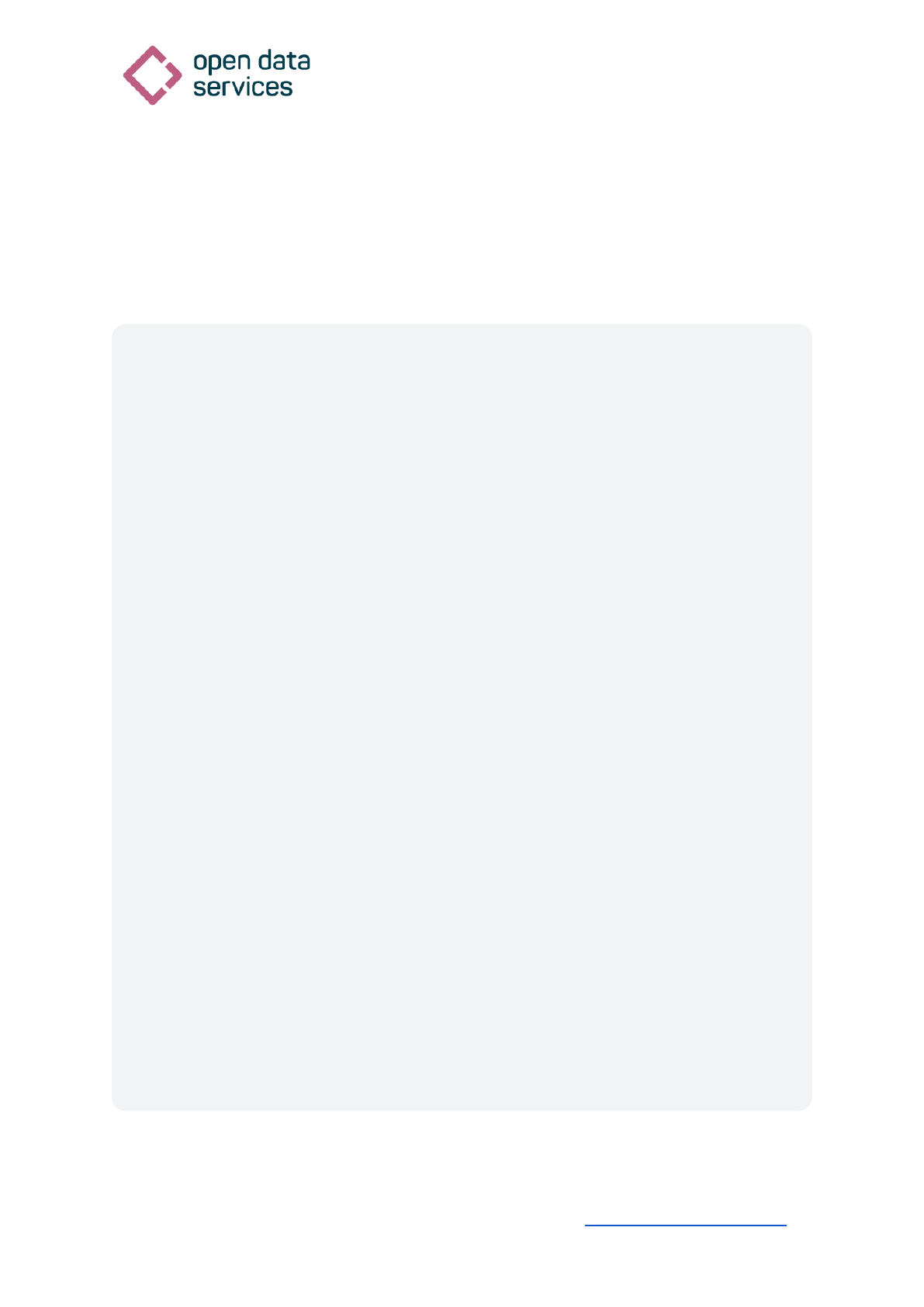
Unset
Risk Data Library Standard
Technical review report
Appendix 1: Pull request template examples
Open Contracting for Infrastructure Data Standard
**Related issues**
<!-- Add links to related issues here. If you want an issue to
be automatically closed when the PR is merged, use keywords
(https://docs.github.com/en/issues/tracking-your-work-with-iss
ues/linking-a-pull-request-to-an-issue#linking-a-pull-request-
to-an-issue-using-a-keyword). -->
**Description**
<!-- If the changes in the PR are not sufficiently explained
by the related issues and commit messages, add a description
here. -->
**Merge checklist**
<!-- Complete the checklist before requesting a review. -->
- [ ] [Log your
changes](https://ocds-standard-development-handbook.readthedoc
s.io/en/latest/standard/contributing.html#logging-changes)
If there are changes to `project-schema.json` or
`project-package-schema.json`:
- [ ] Update the examples:
- [ ] `docs/examples/example.json`
- [ ] `docs/examples/blank.json`
39
Open Data Services Co-operative Limited is a company limited by shares, operated as a Workers' Co-operative |
Registered in England. Company number: 09506232 | Registered address: 1st Floor, Holyoake House, Hanover
Street, Manchester, Greater Manchester, M60 0AS | Correspondence to [email protected]
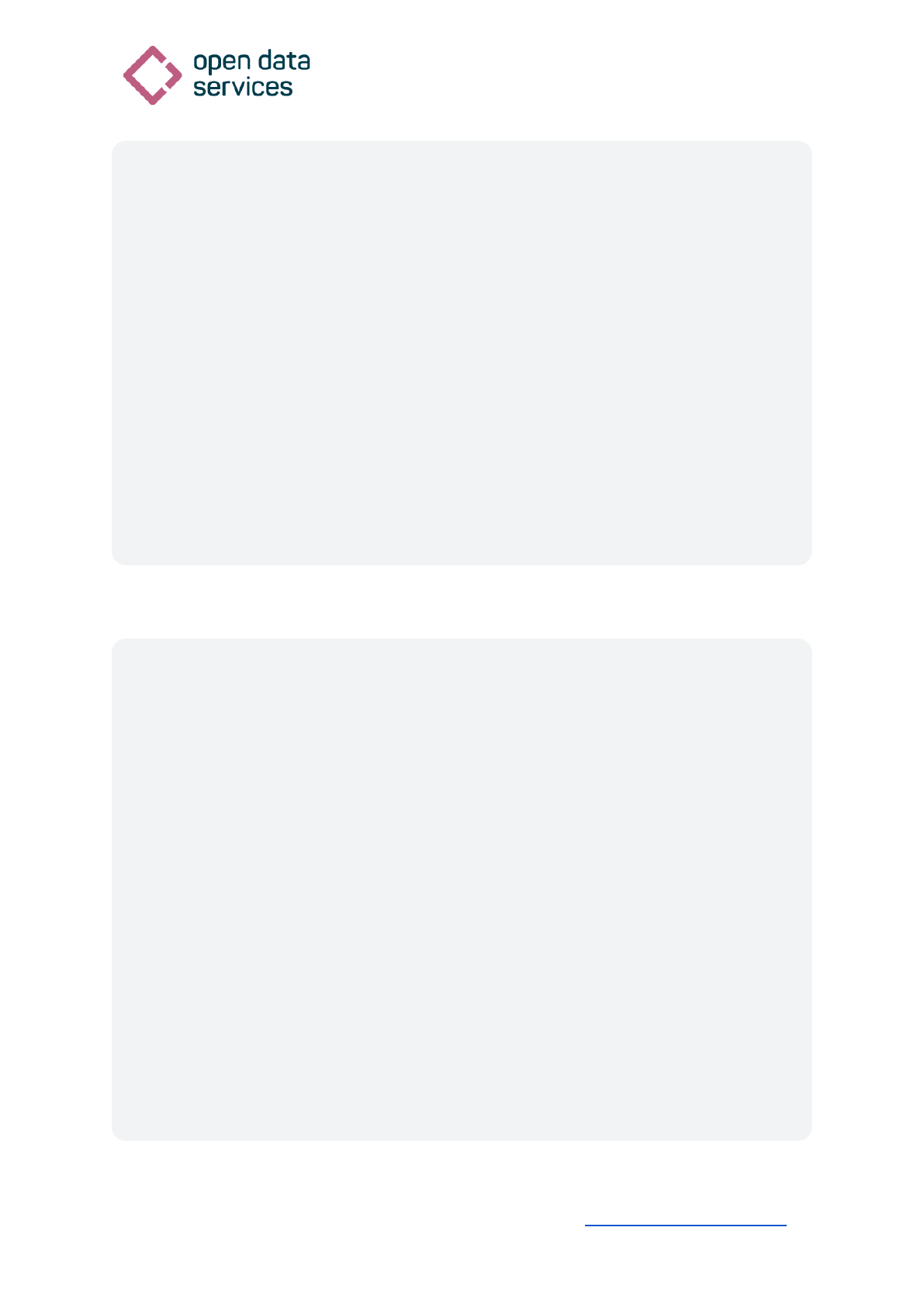
Unset
Risk Data Library Standard
Technical review report
- [ ] Run `./manage.py pre-commit` to update
`docs/_static/i8n.csv`
If you added a new definition to the schema, update
`docs/reference/schema.md`:
- [ ] Add an entry to the components section
- [ ] Update the `:collapse:` parameter of the `jsonschema`
directive for any schemas or sub-schemas that reference the
new definition
If you added a new codelist:
- [ ] Add an entry to `docs/reference/codelists.md`
Open Fibre Data Standard
**Related issues**
<!-- Add links to related issues here. If you want an issue to
be automatically closed when the PR is merged, use keywords
(https://docs.github.com/en/issues/tracking-your-work-with-iss
ues/linking-a-pull-request-to-an-issue#linking-a-pull-request-
to-an-issue-using-a-keyword) -->
**Description**
<!-- If the changes in the PR are not sufficiently explained
by the related issues and commit messages, add a description
here -->
**Merge checklist**
40
Open Data Services Co-operative Limited is a company limited by shares, operated as a Workers' Co-operative |
Registered in England. Company number: 09506232 | Registered address: 1st Floor, Holyoake House, Hanover
Street, Manchester, Greater Manchester, M60 0AS | Correspondence to [email protected]
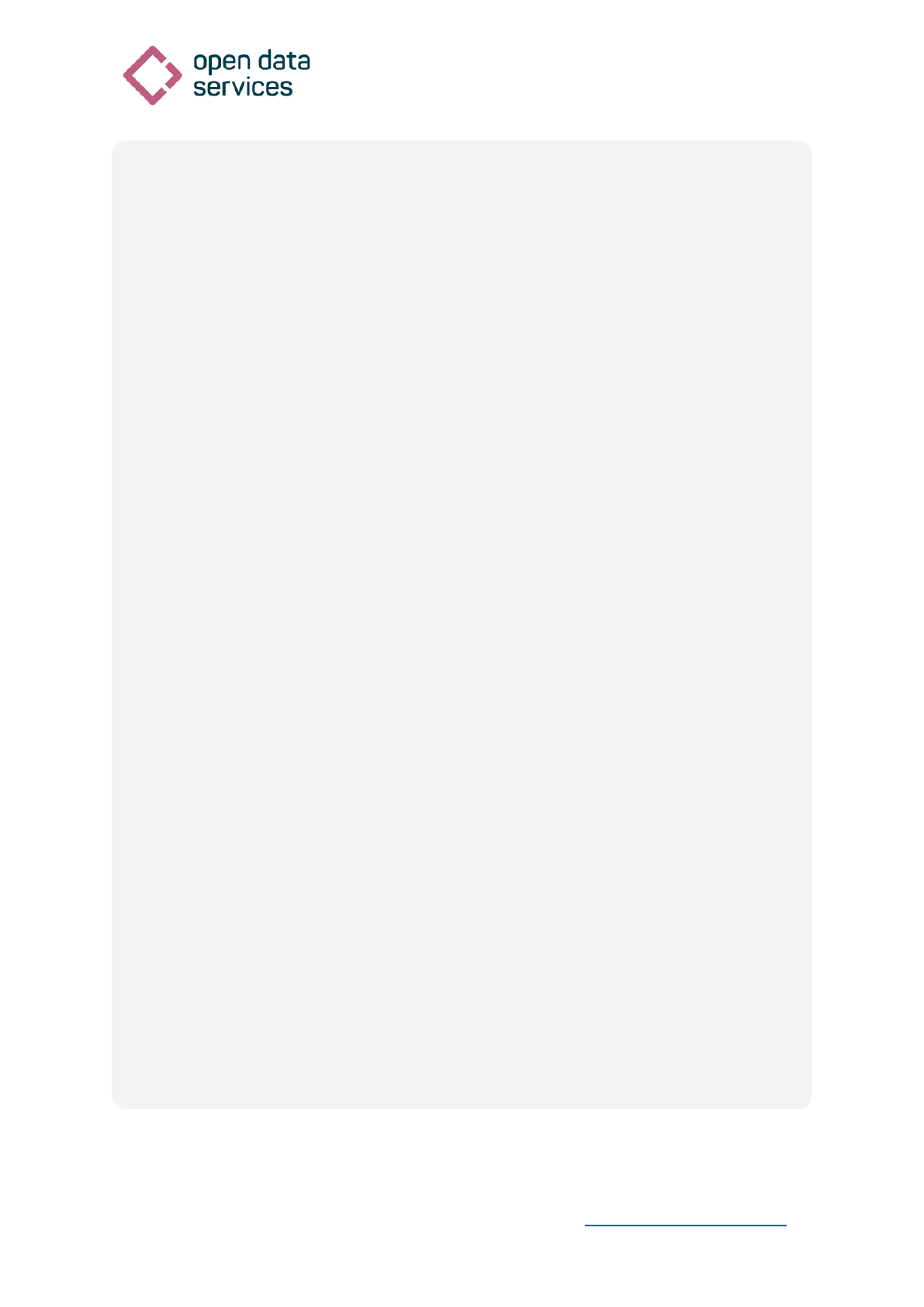
Risk Data Library Standard
Technical review report
<!-- Complete the checklist before requesting a review. -->
- [ ] Update the changelog ([style
guide](https://ofds-standard-development-handbook.readthedocs.
io/en/latest/style/changelog_style_guide.html))
- [ ] Run `./manage.py pre-commit` to update derivative schema
files, reference documentation and examples
If there are changes to `network-schema.json`,
`network-package-schema.json`,
`reference/publication_formats/json.md`,
`reference/publication_formats/geojson.md` or
`guidance/publication.md#how-to-publish-large-networks`,
update the relevant manually authored examples:
- [ ] `examples/json/`:
- [ ] `network-package.json`
- [ ] `api-response.json`
- [ ] `multiple-networks.json`
- [ ] `network-embedded.json`
- [ ] `network-separate-endpoints.json`
- [ ] `network-separate-files.json`
- [ ] `nodes-endpoint.json`
- [ ] `spans-endpoint.json`
- [ ] `examples/geojson/`:
- [ ] `api-response.geojson`
- [ ] `multiple-networks.geojson`
If you used a validation keyword, type or format that is not
[already used in the
schema](https://ofds-standard-development-handbook.readthedocs
.io/en/latest/standard/schema.html#json-schema-usage):
- [ ] Update the list of validation keywords, types or formats
in [JSON Schema
41
Open Data Services Co-operative Limited is a company limited by shares, operated as a Workers' Co-operative |
Registered in England. Company number: 09506232 | Registered address: 1st Floor, Holyoake House, Hanover
Street, Manchester, Greater Manchester, M60 0AS | Correspondence to [email protected]
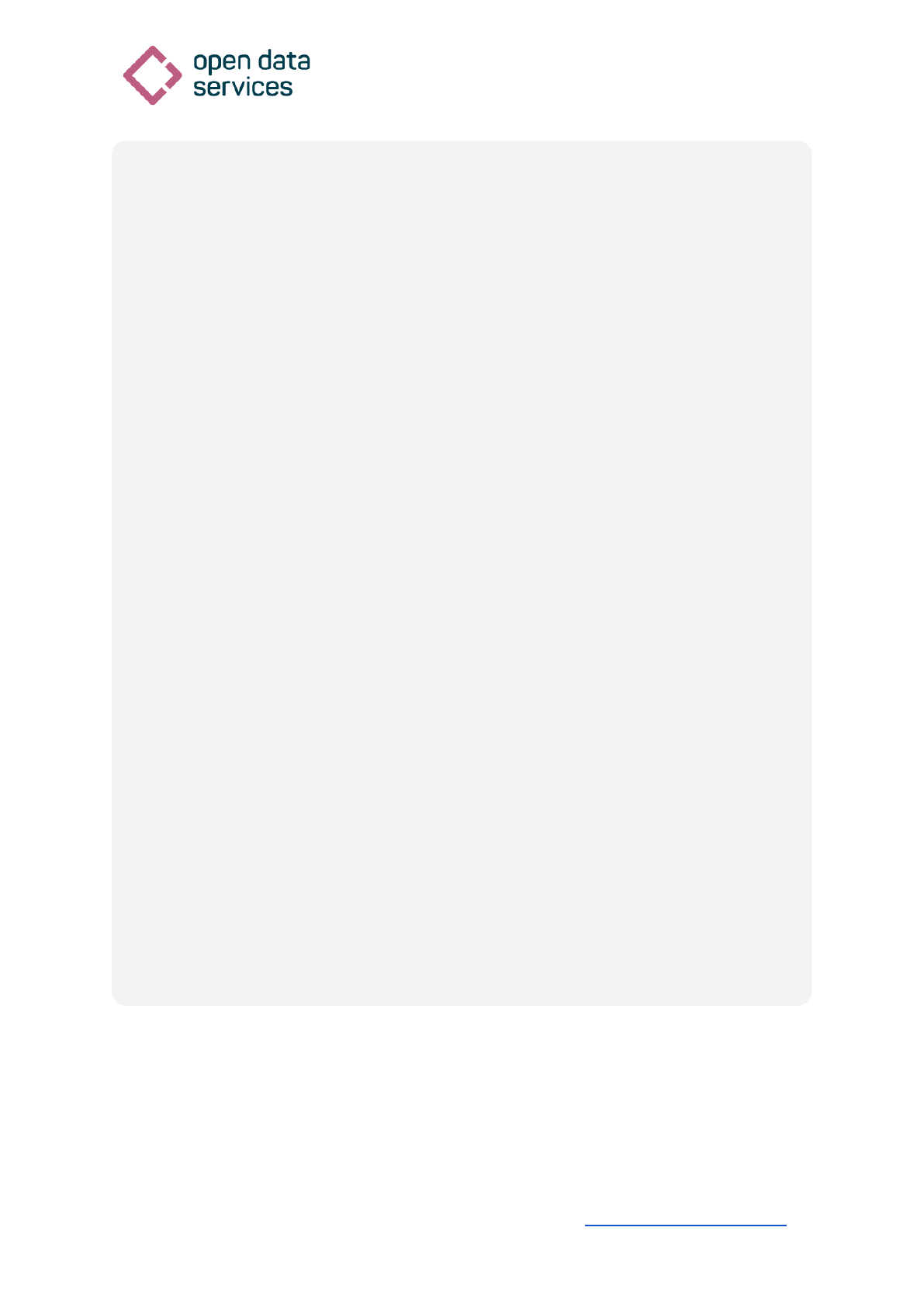
Risk Data Library Standard
Technical review report
usage](https://ofds-standard-development-handbook.readthedocs.
io/en/latest/standard/schema.html#json-schema-usage).
- [ ] Add a field that fails validation against the new
keyword, type or format to
[`network-package-invalid.json`](https://github.com/Open-Telec
oms-Data/open-fibre-data-standard/blob/0.1-dev/examples/json/n
etwork-package-invalid.json).
- [ ] Check that [OFDS
CoVE](https://ofds.cove.opendataservices.coop/) reports an
appropriate validation error.
If you added a normative rule that is not encoded in JSON
Schema:
- [ ] Update the list of [other normative
rules](https://ofds-standard-development-handbook.readthedocs.
io/en/latest/standard/schema.html#other-normative-rules).
- [ ] Add a field that does not conform to the rule to
[`network-package-additional-checks.json`](https://github.com/
Open-Telecoms-Data/open-fibre-data-standard/blob/0.1-dev/examp
les/json/network-package-additional-checks.json).
- [ ] Open a [new
issue](https://github.com/Open-Telecoms-Data/lib-cove-ofds/iss
ues/new/choose) to add an additional check to Lib Cove OFDS.
If there are changes to `examples/geojson/nodes.geojson` or
`examples/geojson/spans.geojson`, check and update the data
use examples:
- [ ] `examples/leaflet/leaflet.ipynb`
- [ ] `examples/qgis/geojson.qgs`
42
Open Data Services Co-operative Limited is a company limited by shares, operated as a Workers' Co-operative |
Registered in England. Company number: 09506232 | Registered address: 1st Floor, Holyoake House, Hanover
Street, Manchester, Greater Manchester, M60 0AS | Correspondence to [email protected]
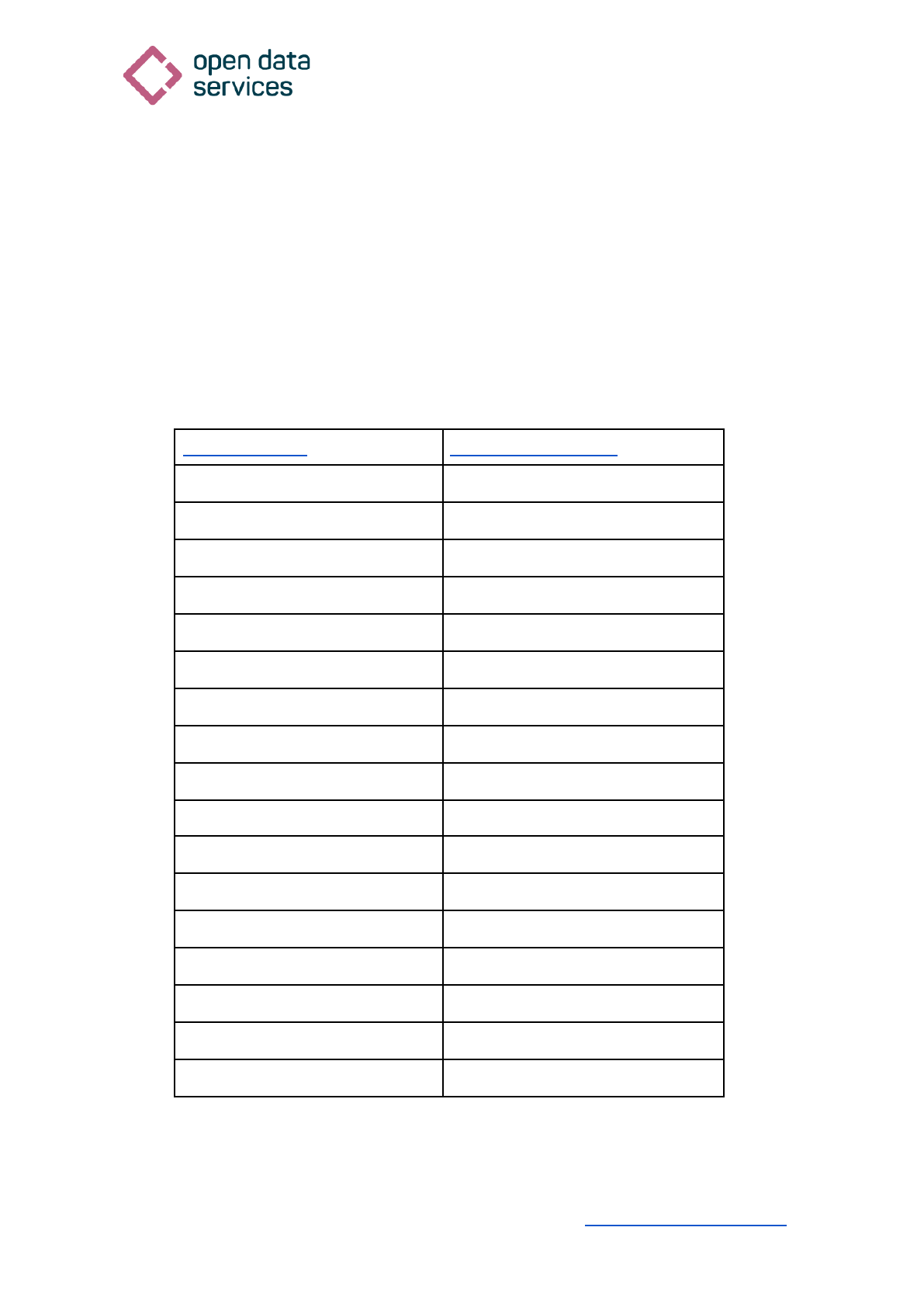
Risk Data Library Standard
Technical review report
Appendix 2: Documentation schema vs JSON
schema
Attributes vs Fields
In the following tables an asterisk (*) indicates the attributes identified as required, and
attributes with inconsistent names have been paired based on descriptions where possible
and best guess otherwise. Any spelling mistakes are present in the source.
General schema / `contribution`
Documentation
rdl_schema_0.1.json
Component*
component*
Source model*
model_source*
Release date*
model_date*
Project name
project
Purpose
purpose
Notes
notes
Bibliography
biblio_title
Bibliography
biblio_url
Version
version
Geo coverage*
geo_coverage*
License code*
license_code*
title*
abstract*
organization*
publish*
maintainer
maintainer_email
General schema / `resources`*
43
Open Data Services Co-operative Limited is a company limited by shares, operated as a Workers' Co-operative |
Registered in England. Company number: 09506232 | Registered address: 1st Floor, Holyoake House, Hanover
Street, Manchester, Greater Manchester, M60 0AS | Correspondence to [email protected]
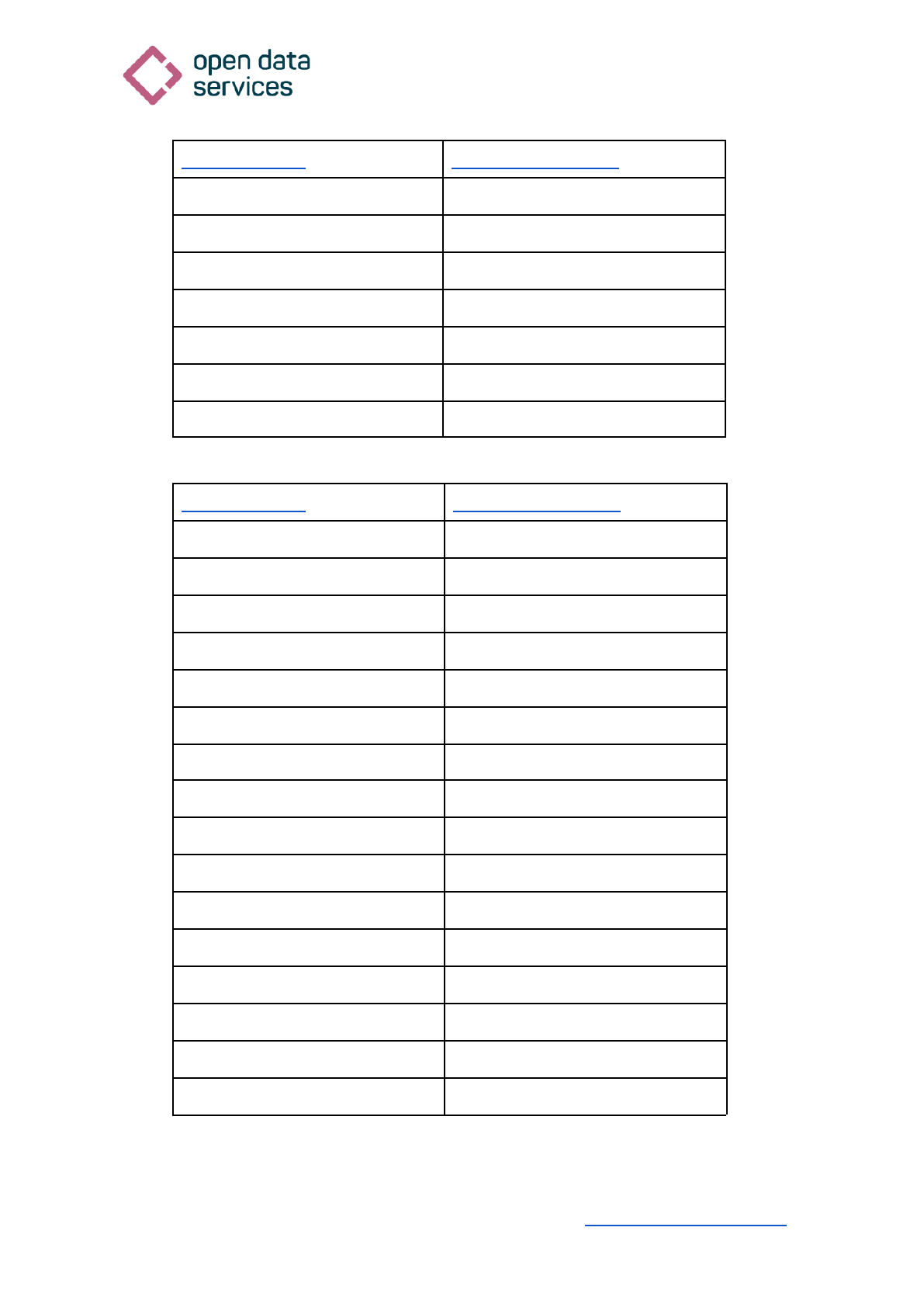
Risk Data Library Standard
Technical review report
Documentation
rdl_schema_0.1.json
Resource name*
name
Aggregation type*
aggregation_type
Description
Reference coordinate system
epsg
Horizontal resolution
h-res
Format
format
Download url
url
Hazard schema / `hazard`
Documentation
rdl_schema_0.1.json
Hazard type*
event_set.hazard_type*
Analysis type*
event_set.analysis_type*
Calculation method*
event.calculation_method*
Geographic area
event_set.geo_area
Time start
event_set.time_start
Time end
event_set.time_end
Time span
event_set.time_span
Time year
event_set.time_year
Frequency type
event_frequency_type*
Occurrence probability
? event.return_period
Occurence time (start)
event.occurence_time_start
Occurence time (end)
event.occurence_time_end
Occurence time (span)
event.occurence_time_span
Trigger hazard type
event.trigger_hazard_type
Trigger process type
event.trigger_process_type
Hazard process*
footprint_set.process_type
44
Open Data Services Co-operative Limited is a company limited by shares, operated as a Workers' Co-operative |
Registered in England. Company number: 09506232 | Registered address: 1st Floor, Holyoake House, Hanover
Street, Manchester, Greater Manchester, M60 0AS | Correspondence to [email protected]

Risk Data Library Standard
Technical review report
Unit of measure*
footprint_set.imt
Description
? event.description
Data uncertainty
footprint_set.data_uncertainty
Exposure schema / `exposure`
Documentation
rdl_schema_0.1.json
Category*
model.category*
Occupancy*
model.occupancy*
Occupancy time
model.occupancy_time
Taxonomy source
model.taxonomy_source
Taxonomy code
model.taxonomy_code
Value type*
value.val_type
Value unit*
value.val_unit
model.time_year
model.add_attributes
Vulnerability schema / `vulnerability`
Documentation
rdl_schema_0.1.json
Primary hazard*
model.hazard_type_primary
Secondary hazard
model.hazard_type_secondary
Primary process*
model.process_type_primary
Secondary process
model.process_type_secondary
Frequency*
model.frequency_type
Intensity unit*
model.imt
Exposure category*
model.category
Exposure occupancy*
model.occupancy
model.val_type
model.val_unit
45
Open Data Services Co-operative Limited is a company limited by shares, operated as a Workers' Co-operative |
Registered in England. Company number: 09506232 | Registered address: 1st Floor, Holyoake House, Hanover
Street, Manchester, Greater Manchester, M60 0AS | Correspondence to [email protected]
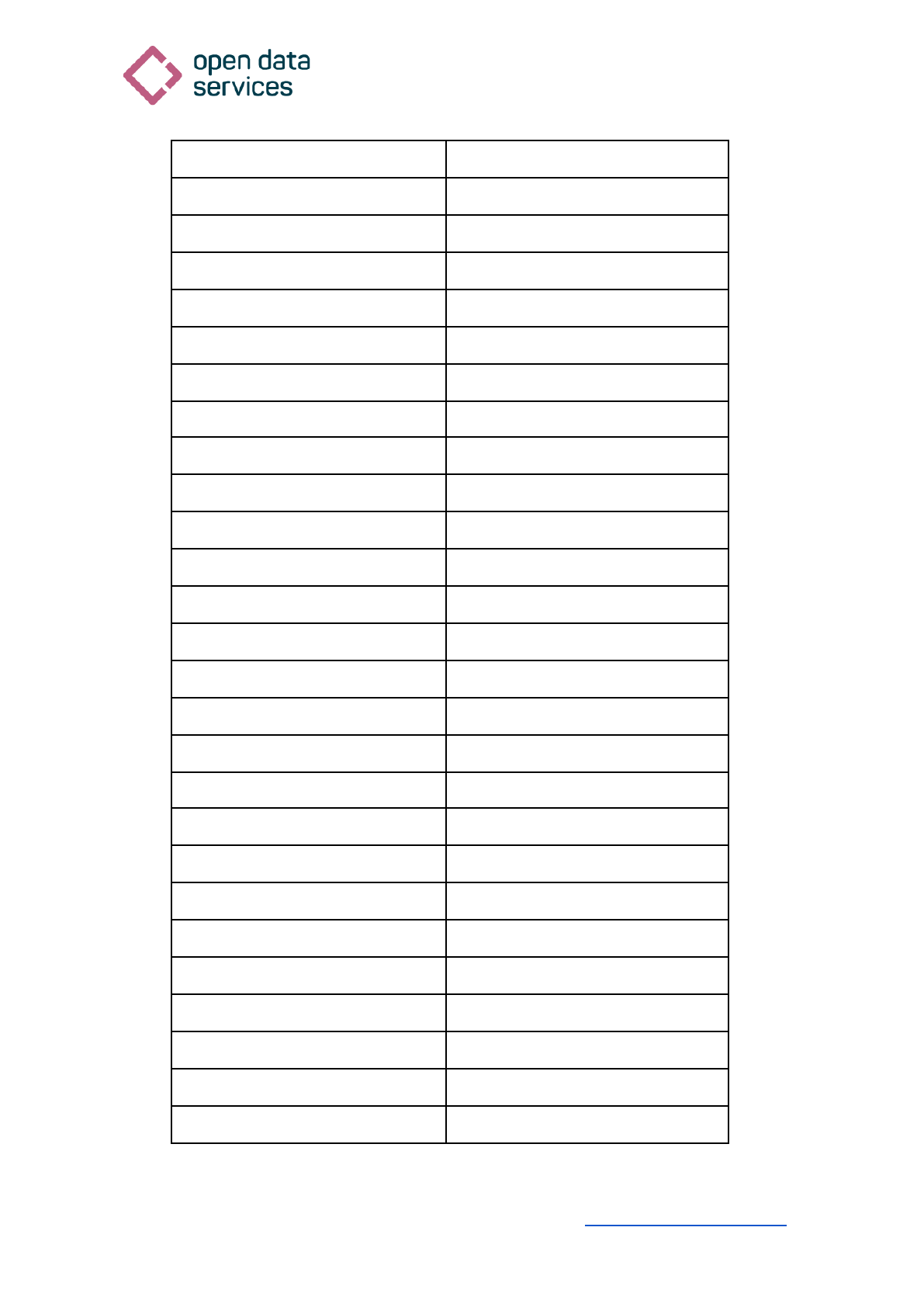
Risk Data Library Standard
Technical review report
Taxonomy source
model.taxonomy_source
Taxonomy code
model.taxonomy_code
Impact type*
model.impact_type
Function type*
model.funcation_type
Approach
model.approach
[blank]*
Mathematical model
? model.f_math
Scale applicability*
model.scale_applicability
Transferrability*
model.country_tranferability
Local applicability*
model.local_applicability
Transferrability notes
model.transferability_notes
model.f_relationship
model.calculation_method
specifics.analysis_details
par_names
specifics.par_names
ub_par_value
ub_par_perc
med_par_value
lb_par_value
lb_par_perc
damage_scale_code
dm_state_name
n_dm_states
f_disc_im
f_disc_ep
lp_code
lp_loss_value
46
Open Data Services Co-operative Limited is a company limited by shares, operated as a Workers' Co-operative |
Registered in England. Company number: 09506232 | Registered address: 1st Floor, Holyoake House, Hanover
Street, Manchester, Greater Manchester, M60 0AS | Correspondence to [email protected]
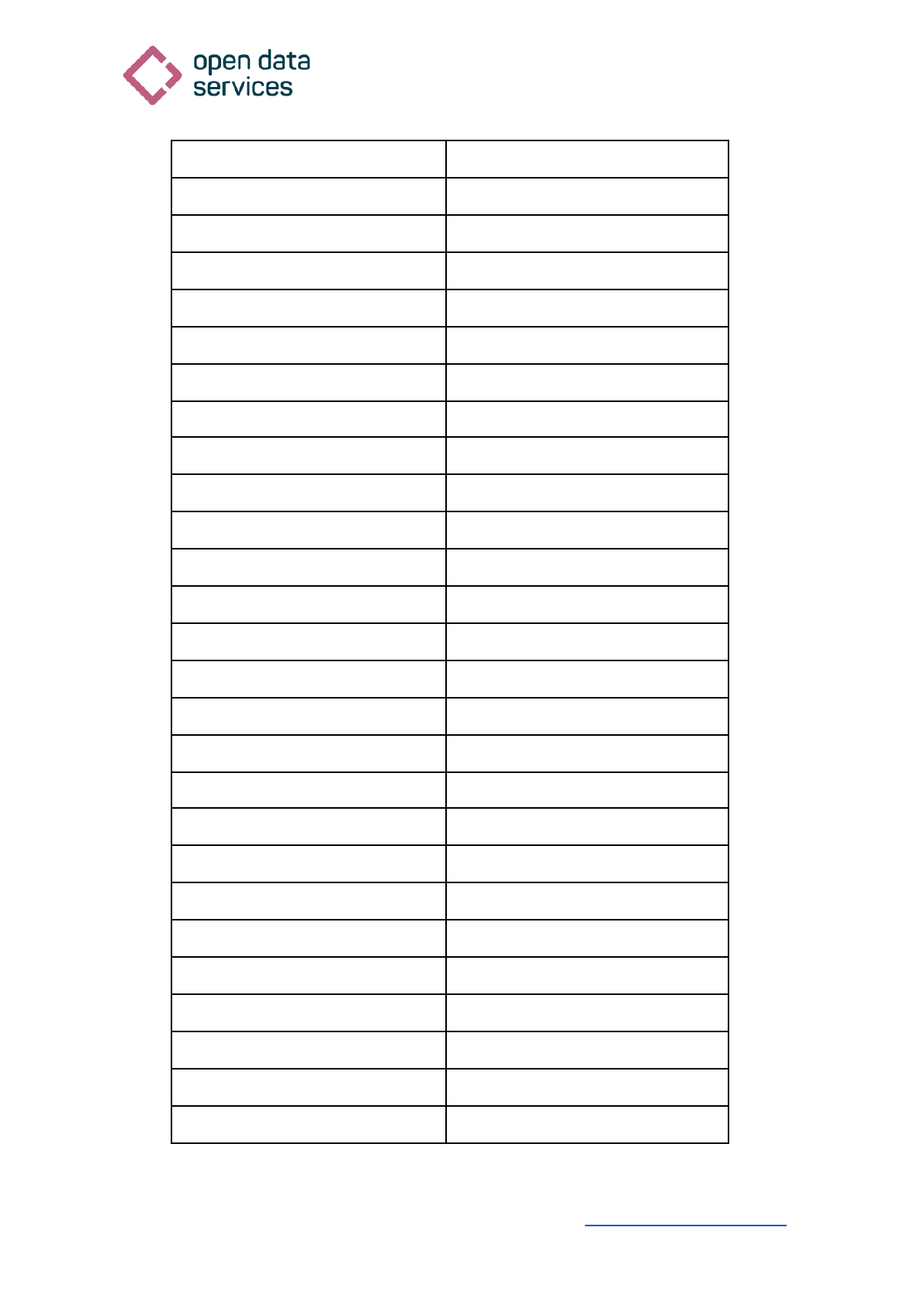
Risk Data Library Standard
Technical review report
edp_code
edp_name
edp_dmstate_thre
im_code
im_name
specifics.im_name
im_range
im_units
specifics.im_units
im_method
im_sim_type
impe_referenec
data_countries
im_data_source
n_events
specifics.n_events
n_assets
specifics.n_assets
nonsampling_err*
type_nonsampling_err
is_fix_nonsam_err
is_data_aggregated
is data_disaggr
n_data_points_aggr
an_analysis_type
em_analysis_type
jb_analysis_type
is_fit_good
specifics.is_fit_good
fit_ref
val_data_source
val_study_reference
47
Open Data Services Co-operative Limited is a company limited by shares, operated as a Workers' Co-operative |
Registered in England. Company number: 09506232 | Registered address: 1st Floor, Holyoake House, Hanover
Street, Manchester, Greater Manchester, M60 0AS | Correspondence to [email protected]
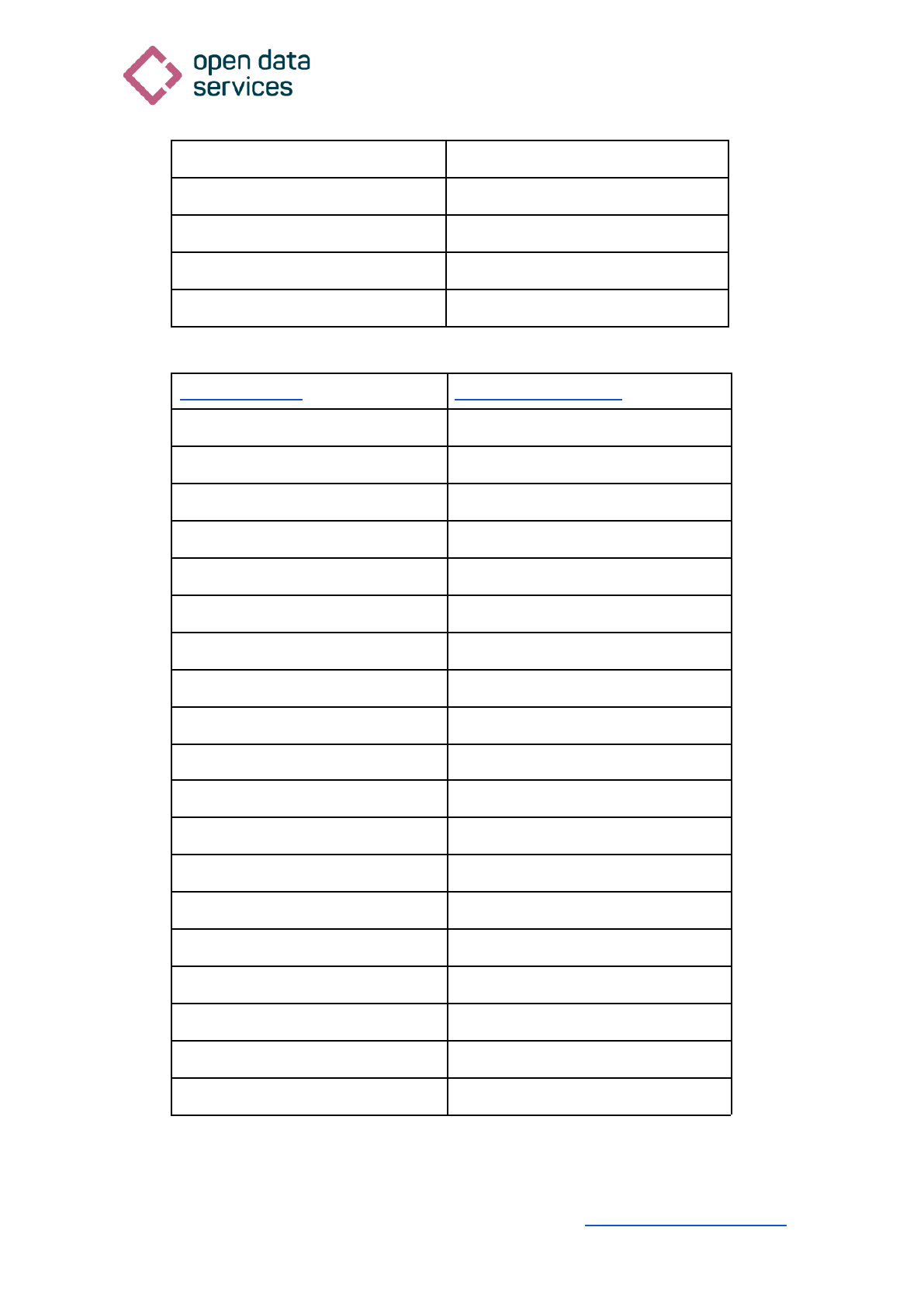
Risk Data Library Standard
Technical review report
sample
specifics.is_edp_thre
specifics.is_dm_factor
specifics.is_casualties
specifics.is_downtime
Loss schema / `loss`
Documentation
rdl_schema_0.1.json
Hazard type*
model.hazard_type
Hazard process
model.process_type
Calculation method
model.calculation_method
Exposure occupancy*
model.occupancy
Exposure category*
model.category
Value type*
model.val_type
Hazard link
model.hazard_link
Exposure link
model.exposure_link
Vulnerability link
model.vulnerability_link
Time start
model.time_start
Time end
model.time_end
Time span
Time year
Frequency type
model.frequency
Occurrence probability
? model.return_period
Impact*
model.impact
Loss type*
model.loss_type
Metric*
model.metric
Unit*
model.val_unit
48
Open Data Services Co-operative Limited is a company limited by shares, operated as a Workers' Co-operative |
Registered in England. Company number: 09506232 | Registered address: 1st Floor, Holyoake House, Hanover
Street, Manchester, Greater Manchester, M60 0AS | Correspondence to [email protected]
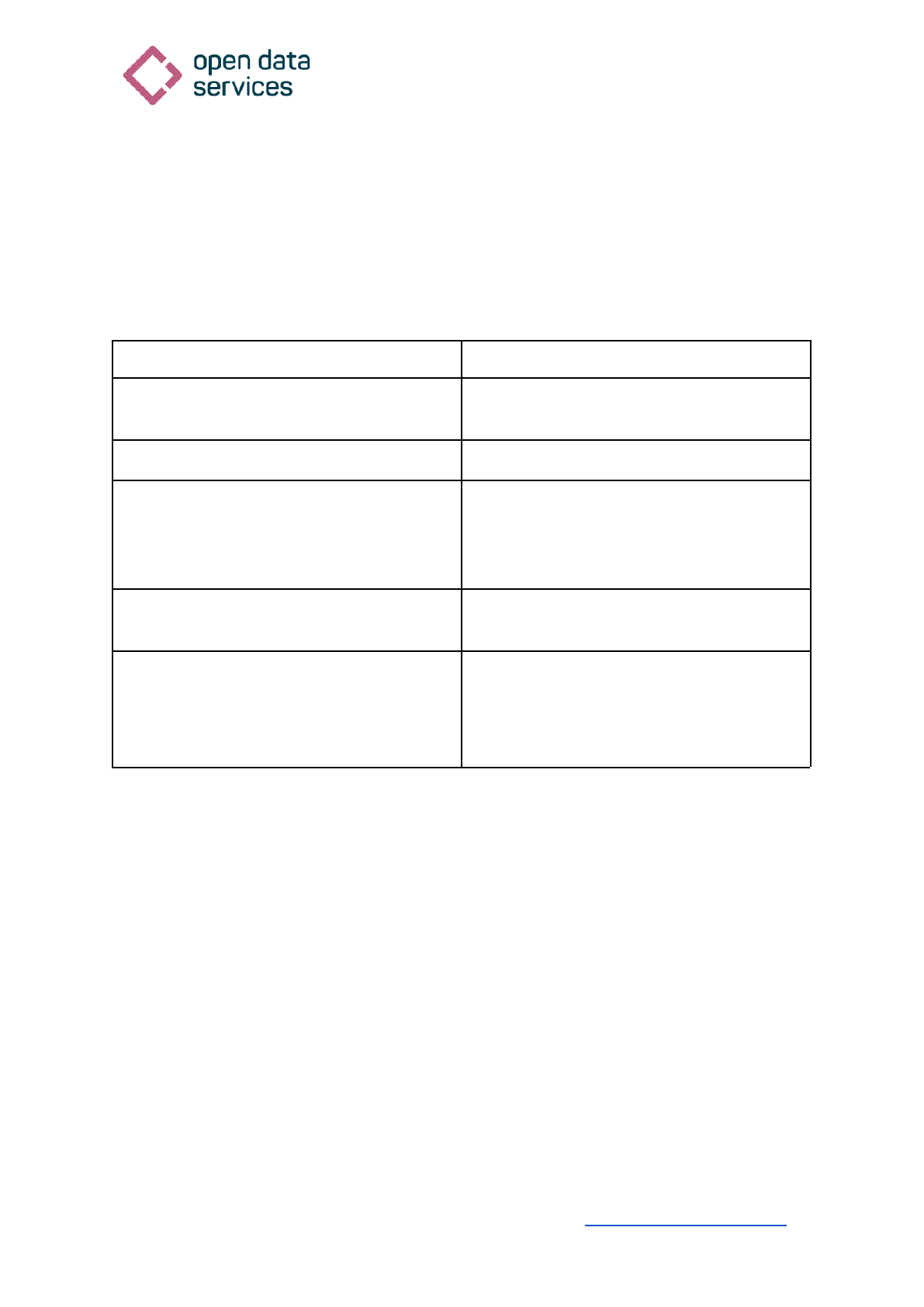
Risk Data Library Standard
Technical review report
Type vs enum
Also `common_iso` defining ‘Geo coverage’ and Vulnerability ‘Transferrability’.
`common_license` defining ‘License code’. `common_proces_type` defining ‘Hazard
process’ in Hazard schema, ‘Primary process’ and ‘Secondary process’ in Vulnerability
schema and ‘Hazard process’ in Loss schema. `im_code` defining ‘Unit of measure’ in
Hazard schema and ‘Intensity unit’ in Vulnerability schema.
Documentation attribute
JSON schema definition
Geo coverage from General
Transferrability from Vulnerability
common_iso
License code from General
common_license
Hazard process from Hazard
Primary process from Vulnerability
Secondary process from Vulnerability
Hazard process from Loss
common_proces_type
Unit of measure from Hazard
Intensity unit from Vulnerability
im_code
Hazard type from Hazard
Trigger hazard type from Hazard
Primary hazard from Vulnerability
Secondary hazard from Vulnerability
Hazard type from Loss
common_hazard_type
49
Open Data Services Co-operative Limited is a company limited by shares, operated as a Workers' Co-operative |
Registered in England. Company number: 09506232 | Registered address: 1st Floor, Holyoake House, Hanover
Street, Manchester, Greater Manchester, M60 0AS | Correspondence to [email protected]
